




















Most years, summer flies by. This year, it’s flying by so fast, it’s almost as if it never happened.
We’re all starting to feel the buzz of the summer winding down. In just a few days, two of my children are coming home from sleepaway camp. My other child is coming home a few days later. Although I’m excited to spend time with them again, knowing that they’re coming back means that summer is on its way out. I’m feeling the urge to squeeze in the rest of summer into the next day or two – not an easy task!
Truthfully, when my kids come home, there is still time to enjoy the summer. But knowing that there will be more laundry to do and more mouths to feed at dinnertime (who want more than just schnitzel or pasta) takes away the lazy spirit of summer that I was able to enjoy the past few weeks.
Kids need time to unwind from the busy, hectic, demanding school year. Going to camp – sleepaway or day camp – helps to give them the opportunity to relax a bit and clear their heads. Our community boasts wonderful day camps, where our children are able to swim, soak in the sun on the baseball fields, and enjoy exciting trips. And then, as they get older, they head to sleepaway camps upstate, where they bond with friends and spend their days and nights
cheering their hearts out and singing around the campfire. We can sense their summer euphoria when they come back and unpack, their pants forever soiled with grass stains and their shirts dyed with ketchup.
There is no better way for a child to recharge his or her batteries than with an invigorating summer experience. But parents also need to recharge after a long school year. And summer brings with it ample opportunity for a refresh.

I met someone on the boardwalk recently. She told me that she went upstate for the first half of the summer with her family and is home now for the rest of the summer.
“Why do I need to go upstate when I have this?” she said, pointing to the boardwalk and the waves pounding the sand.
She’s right. Living here, we are so lucky that we can truly feel the summer. With the ocean just minutes away, we can pack up our bags and be “on vacation” almost every day. I personally love the outdoor dining that has proliferated in town. Sipping a cold drink and spending time with friends and family is the perfect summer treat.
And so, over the next few days, I plan on making the most of my summer experience. I hope you do, too! Wishing you a wonderful week, Shoshana
Yitzy Halpern, PUBLISHER publisher@fivetownsjewishhome.comYosef Feinerman, MANAGING EDITOR ads@fivetownsjewishhome.com
Shoshana Soroka, EDITOR editor@fivetownsjewishhome.com
Nate Davis
Editorial Assistant
Nechama Wein
Copy Editor
Rachel Bergida
Shana Brecher
Lani White
Design & Production
Gabe Solomon
Distribution & Logistics
P.O. BOX 266
Lawrence, NY 11559
Phone | 516-734-0858
Fax | 516-734-0857
Classified Deadline: Monday 5:00PM classifieds@fivetownsjewishhome.com
text 443-929-4003
PAYMENT VIA CREDIT CARD MUST BE SUBMITTED ALONG WITH CLASSIFIED ADS
The Jewish Home is an independent weekly magazine. Opinions expressed by writers are not necessarily the opinions of the publisher or editor. The Jewish Home is not responsible for typographical errors, or for the kashrus of any product or business advertised within. The Jewish Home contains words of Torah. Please treat accordingly.
Friday, August 11
Parshas Re’eh
Candle Lighting: 7:40 pm

Shabbos Ends: 8:42 pm
Rabbeinu Tam: 9:10 pm

Everyone seems to be alarmed and busy with the shidduch crisis which is awful, but I am devastated about the sinaas chinom crisis among adults and mostly among children. I know of too many children whose summers were ruined because they were bullied in camp!
Unfortunately, bullying is rampant all year in school, but when a child is alone in camp and bullied, it is emotionally devastating. The young counselors are unable to control it, and the administration would rather turn a blind eye.

Where are the parents of the bullies you may ask? Probably out shopping or on social media, until their own child is a victim, only then are they made aware. It is frightening to see how parents are raising children with no respect for others and bullying their way to popularity with no common decency.
Sadly, the yeshivos turn a blind eye to this. They are busy with another Gemara, or a longer skirt, and fundraising. There are no lessons on middos or just being a mensch and treating others as you would want to be treated. It should start with the teacher-student relationship. The teachers or rebbis should be aware of the class behavior and put a stop to inappropriate bullying, instead of turning a blind eye.
Yes, the lessons on middos and examples should be seen in the home, but unfortunately, they are not in many cases. The bullying occurs in the yeshivos so it is also their obligation to put an end to it, instead of ignoring it.

When parents raise bullies, how do they ever expect them to find a shidduch and remain married? The shidduch crisis begins at a young age when parents raise
children improperly with demanding expectations and no middos or respect for others.
Many people talk, the great ones, do. This woman conquered!
A couple of months ago, I received a call from someone I’d never met. Someone with a big dream who was looking for partners. Many people dream, few people act and even fewer create, at warp speed, a giveaway so meaningful that each and every single mother that I refer to the inimitable Susie Nussbaum Domb and The Shine Charity let’s me know just how touched she is by this gift.
There are no invasive questions asked, no feeling of neediness felt, just a loving, understanding, compassionate, supportive woman who was once a single mother making each woman feel as special as only she can.
The single mothers are accompanied and assisted as they walk through the beautifully set up “shoppe” so that they may find their correct sizes and exactly what they need for themselves, for their homes and for their children. Each high-quality, high-end, beautiful item is placed in a bag with love and care and the mother is wished well to leave with her goodies as though it’s her birthday. Her most special day.
Dignity. It’s all about dignity. Each and every single mother describes a feeling of being treated with dignity and respect. She is never made to feel needy or “less than.” She is made to feel special, exceptional and like the superhero she is.
Thank you Susie for being my partner
Continued on page 10

in caring, doing, giving and helping the mothers and their children, G-d’s children. I’m in awe of you and your humble, quiet greatness!
May you and I continue to work together in so many ways help our community in general and the mothers who mother alone, specifically.
If anyone reading this would like to learn more about Susie and her project, you may contact info@shine-foundation. com or Esther@jccrp.org
 Esther Miller
Esther Miller
Dear Editor,
During the many hot summer days, NYC and Nassau County open up cooling centers to assist New Yorkers with excessive heat. Many seniors and others are frequent visitors to their local library. In too many cases, they don’t open until noon, close by 6 PM or remain shut on Sunday. With a $107 billion plus municipal budget, surely a few million dollars can be found for extending library hours. Why not have all libraries open six days per week, 9 AM to 8 PM during the summer? Seniors, retirees, students and others would be appreciative. Elected officials who find the funding are welcome to have their local library post signs by the entrance that “these longer hours are thanks to funding provided by your local NYC Council member.” This just might be the incentive for NYC Council members to do the right thing and find the funding necessary to take advantage of this underutilized asset.
Sincerely,
Larry PennerEvery state has an unclaimed funds department that holds money that for whatever reason was not delivered to the intended recipient. In New York, it’s run by the comptroller. If you google unclaimed funds and the state you are searching, you can search your name or deceased relatives’ names to see if the state is holding money for you. Before you act like a stereotypical arrogant know-it-
Continued from page 8 Make
all, I challenge you to try it out. I would like you to do a story about this in your publication so that Jewish people can retrieve hundreds of millions of dollars being held by various state governments.
Mindy
Rabbi Eli Mansour asks the existential question of where we see nechama at all. Year after year, Tisha B’Av passes and yet the Mikdash is not here. He brings a perplexing midrash that the Satmar Rebbe shines light on to show where the nechama lies. The midrash (Yalkut Shimoni on Nach 443) says that in the future G-d sends all of the nevi’im to Bnei Yisroel to comfort them but they are all rejected. G-d even sends Avraham, Yitzchak and Yaakov and finally Moshe, whom Bnei Yisrael all reject. Then, “Immediately, all [of the nevi’m] walked before the Holy Blessed One and said: Master of the Universe — she does not accept our comfortings, as it is written: ‘Unhappy, stormtossed one, uncomforted!’ (Isaiah 54:11). The Holy Blessed One said: I and you shall walk to comfort her, i.e. ‘Comfort O comfort my people’ — ‘Comfort Her, O comfort her, my people.’”
The Satmar Rebbe explains that Bnei Yisroel will take comfort in one kind of redemption, one by G-d and not people. All previous redeemers took us out of one galut only to end up in another. We want G-d only for the last one, that’s where our comfort will lie.
Rabbi Mansour notes that the Satmar Rebbe had a great love for Israel. Many of his stances are based on the fact that he didn’t want people to be involved in the process because of man’s limitations. Looking at the government today, one can understand this. After the Holocaust, one would think that the sovereign state of Israel would take great pride in its existence, yet there is mere taunting and division. Indeed, man has imperfections compared to the exactness of G-d, which we want to be activated for the final redemption.
Steven Genack

bill is dedicated towards addressing the issue of how authorities will ensure that the law is enforced and that those in violation of the rules will be punished. A passage in that section says that in order for the police to do so, they must “create and strengthen AI systems to identify perpetrators of illegal behavior using tools such as fixed and mobile cameras,” which in practical terms means that surveillance systems will likely be infused with artificial intelligence in order to hold people accountable for violating the law.
“The system is trying to make clear that leniency won’t be tolerated, and that there is a clear, graduated system of punishment for individuals that are going to flout the dress law in the country,” Sanam Vakil, director of Chatham House thinktank’s Middle East and North Africa program in London, explained.
In response to the protests that have rocked Iran for the past year, the Iranian government is considering implementing even stricter hijab laws.
Around a year ago, Mahsa Amini was arrested in Iran for incorrectly wearing her hijab and died in police custody soon after, sparking mass protests in the Islamic state. Over 582 individuals were executed that year, and since then, the morality police responsible for the woman’s death have been largely absent.
But a few weeks ago, the morality police made a sudden comeback, and in light of the group’s return, new, much more serious measures will likely be taken to discipline those who go against the country’s already strict set of modesty laws.

Among multiple noteworthy proposals in the hijab-related bill is a longer prison sentence and a much more expensive fine for violators. As of now, it’s typical for one who violates these rules to get fined somewhere between 50,000 and 500,000 Iranian rials (approximately $1 - $12), but now, the government is considering making the fine up to 360 million Iranian rials ($8,508), which is practically impossible for most Iranians to pay. Additionally, while a woman in violation can now be thrown into prison for ten to sixty days, if the new bill gets approved, those who don’t follow the rules can be jailed for about five to ten years.
Celebrities who don’t wear the hijab correctly, or at all, can be fined a tenth of all their money and will be banned from working (albeit temporarily), going out of the country, and participating on social media platforms. Additionally, businesses will face similar penalties if they don’t enforce these laws in the workplace.
One of the sections in the proposed
Former Prime Minister Imran Khan of Pakistan was arrested on Saturday after a trial court sentenced him to three years in prison, a verdict likely to end his chances of running in upcoming general elections.
Police took Khan into custody from his home in the eastern city of Lahore soon after the court’s decision was announced in Islamabad, Pakistan’s capital.
The verdict is a climactic turn in a political showdown between Khan and Pakistan’s powerful military that has embroiled the country for over a year.

It comes on the heels of a months-long intimidation campaign by the military aimed at hollowing out Khan’s political party and stifling the remarkable political comeback he has made since being ousted from office last year in a vote of no confidence.
Now, the prospect that Khan, a cricket star turned populist politician, will be disqualified from running in the country’s general elections — the next ones are expected this fall — has offered a major victory to a military establishment that appears intent on sidelining him from politics.

It has also sent a powerful message to Khan and his supporters, who have directly confronted and defied the military like few others in Pakistan’s 75-year history: The military is the ultimate hand wielding political power behind the government, and no amount of public backlash will change that.
In its ruling Saturday, the trial court found the former prime minister guilty of hiding assets after illegally selling state gifts.
“The allegations against Mr. Khan are proven,” said Judge Humayun Dilawar, who announced the verdict in Islamabad.
The case is related to an inquiry by the country’s election commission, which found last October that Khan had illegally sold gifts given to him by other countries when he was prime minister and concealed the profits from authorities.
Khan has denied any wrongdoing. He and his lawyers had accused Dilawar of bias and sought to have the case transferred to another judge. They are likely to appeal this ruling.
In a statement, Khan’s party rejected the verdict, calling it “the worst example of political revenge.” (© The New York Times)
last month – have taken place, both near Seoul.
In the first of those incidents, the suspect, a mentally ill twenty-somethingyear-old deliveryman, reportedly hit five people with his car, and upon exiting the vehicle, engaged in a stabbing spree, in which nine shoppers were injured. Police arrested the man soon after the attack on Thursday, August 3, and since then, one of the fourteen victims, a woman in her sixties, has died.
paid too little at school to bother teaching could make multiples of their day-job salaries on exam-prep classes.
In the span of just a few weeks, South Korea, a country where violent crimes are unusual, experienced three stabbing attacks, leaving many citizens in a state of shock and fear.
The first took place on Friday, July 21, in Seoul, the country’s capital, when a man in his 30s reportedly killed one person and injured three others in a knife attack. The incident occurred outside the city’s Sillim subway station.

“When police came, [the suspect] said something along the lines of ‘he didn’t want to live,” that things weren’t going as he wished,” recalled a person who witnessed the attack.
Since then, two copycat stabbings – attacks “inspired” by the incident late
A second copycat stabbing occurred only a day later, when a South Korean high school teacher was stabbed in Daejeon by another man in his twenties. The suspect in this case is a former student of the victim and was also arrested by police. The teacher’s condition is currently not publicly known.
The public in South Korea fears for its safety, as an increasing number of threats are being made against citizens of the East Asian country, especially on social media. Many blame the rise in violence on South Korea’s alleged failure in handling mental illness. Additionally, many South Koreans are taking precautions such as staying indoors and keeping away from others.
The tutoring industry in Egypt has become a big business by filling the void left by public schools, once the bedrock of middle-class advancement. The government’s mismanagement of the economy has shriveled Egypt’s once-robust middle class, analysts say, dragging families toward poverty not only through repeated economic crises and subsidy cuts but, increasingly, by the cost of supposedly free services such as health care and education.
Juggling a booming population, a sluggish economy and extravagant building projects, Egypt has long spent well below the constitutional minimum of 4% of gross domestic product on education, even as students skid far down the global educational rankings.
For-profit tutoring centers are where Egyptian families try to outrun their country’s decline. Lessons are the only way to secure better futures for their children, many believe, even if it means sacrificing meat, fruit and vegetables amid 35% inflation.
Egypt “doesn’t have the financial ability” to educate students well, President Abdel-Fattah el-Sissi said last year, despite his government’s insistence that it is meeting the constitutional minimum. “Where will the money come from?”
From parents. Experts estimate that Egyptians collectively spend more than 1½ times as much on pre-college education as the government does, far higher than in other countries — a “mind-blowing” amount, said Hania Sobhy, a researcher who wrote a book about Egyptian education.
Asked what classes were like in her last year of high school, the fateful period when students across the country cram for Egypt’s life-defining national exams, Nermin Abouzeid, 19, looked blank for a second.
“We don’t actually know, because she never went to high school,” explained her mother, Manal Abouzeid, 47.

A child of the dusty alleyways of a lower-middle-class neighborhood of Cairo, Nermin was determined, by middle school, to become a cardiologist. But medical schools accept only the top scorers on the national exams.
She abandoned Egypt’s chronically overcrowded and underfunded schools midway through middle school, joining millions of other students in private tutoring, where the same teachers who were

Underspending on education has yielded a vicious circle, experts say. Tutoring cannibalizes public education, siphoning off students in the upper grades and rewarding teachers for taking their energies to private lessons instead of public classrooms. (© The New York Times)


Central America. Many looking for a better life in Canada and the United States head through the treacherous area. Now, immigration officials in Panama are saying that the numbers of those traversing the area have broken a new record.
Panama migration authority’s deputy director Maria Isabel Saravia noted that 2022’s already-high number of crossings was surpassed on Monday.
Last year was an “unprecedented year” where a total of 248,284 people crossed the Darien National Park, she explained. 2023 now looks set to outstrip that number as the year continues.
“With today and yesterday’s crossings of 1,869 people, there have been 248,901 crossings,” Saravia said on Monday.
Around 20% of the people making the dangerous trek are children and adolescents.
“Within that age group, at least 51% are five-year-old children or under. As the figures anticipated, we exceeded last year’s number…. The last three years have been much higher than the last 11 years in crossings,” Saravia noted.

Venezuelans and Haitians represent the majority of the people crossing, followed by Colombians, Ecuadorians, and migrants from outside the continent.
The 66-mile hike through the Darien Gap brings migrants from Colombia to Panama and is a crucial passage for those hoping to reach the United States and Canada.
charges when Russian authorities added additional cases against him, in what his supporters have characterized as a savage campaign to banish him from Russia’s public sphere and erode his health in confinement.
In the case that ended Friday, Navalny, 47, was sentenced for creating an extremist organization and other crimes and was ordered imprisoned in one of Russia’s “special regime” colonies, known for their harsh treatment of inmates. His supporters have warned that confinement in that environment for such a long sentence represents a significant threat to his life.

The sentence was met with condemnation in Washington and other Western capitals, now home to many supporters of Navalny, many of whom began leaving Russia even before Moscow launched its full-scale invasion of Ukraine.
Acquittals are extremely rare in Russian courts, especially against opposition figures. Navalny and his supporters had predicted a harsh sentence, especially given that the Kremlin has banned criticism of its war in Ukraine, stepped up its jailing of opposition voices, and shuttered independent news media outlets.
A Russian court on Friday handed Alexei Navalny, the jailed opposition campaigner, a new 19-year sentence on charges of supporting “extremism” and ordered him imprisoned under the harshest conditions. The sentence demonstrated the widening scope of repression under President Vladimir Putin and threatened to further isolate his most cutting domestic critic.
Navalny was already serving a nineyear sentence east of Moscow on fraud
The new 19-year sentence can be served concurrently to Navalny’s existing sentences, according to his spokesperson, Kira Yarmysh. Navalny has said that he soon could receive yet another sentence, of 10 years, on a separate terrorism charge that Russian authorities have brought against him during his imprisonment.
“The number doesn’t matter,” Navalny said in a statement after the sentence was handed down. “I understand very well that, like many political prisoners, I am serving a life sentence. Where life is measured by the duration of my life or the life span of this regime.”
Before the war, a two-decade sentence for what is essentially dissent would have been unusually harsh. But the ruling was the latest in a string of extreme judgments, which have grown more common since Putin’s invasion of Ukraine. (© The New York Times)
According to the Ukrainian Security Service (SBU), an alleged informant for Russia has been detained in connection to a plot to assassinate Ukrainian



President Volodymyr Zelensky.
The SBU said she had been “gathering intelligence” about Zelensky’s planned visit to Mykolaiv – where the woman is from – at the end of July, in order to plan a Russian airstrike to kill the president.
and filmed the locations of Ukrainian objects.
Zelensky has faced several known attempts on his life since Russia launched its full-scale invasion of his country in February 2022. Russian special forces were tasked with eliminating the Ukrainian president at the start of the war. In April 2022, TIME magazine wrote how Russian troops had parachuted into Kyiv on February 24, the day after the war began, to kill or capture Zelensky and his family. As Ukrainian forces fought Russians on the streets of Kyiv, the presidential guard tried to seal the compound using police barricades and piles of plywood.
the knowledge that his death remains a priority for Russian forces.
“I’ll be honest with you, and tell you I’ve decided, if I will be thinking about it constantly, I will just shut myself down. Very much like Putin now, who doesn’t leave his bunker,” said Zelensky.
He added, “If I will isolate myself, I won’t understand what’s going on around me in the country. I will lose the connection with society. And if I lose this connection, we would lose the society. I’m convinced that society has to see if they are at risk, their president is at risk, too – together, with them,” he said.
ical and economic union of fifteen West African countries, gave the new Nigerien government an ultimatum: either give up power in the next week or face the possibility of attack.
However, SBU agents had obtained information about the “subversive activities of the suspect” and adopted additional security measures, foiling the plot.
The SBU said that it caught the woman “red-handed” as she “was trying to pass intelligence to the invaders.”
In monitoring the communications of the woman, the SBU established that she also had the task of identifying the location of electronic warfare systems and warehouses with ammunition of the armed forces. She allegedly traveled around the territory of the district

Ukrainian presidential adviser Mykhailo Podolyak said in March last year that Zelensky had survived more than a dozen assassination attempts.

“Foreign sources talk of two or three attempts. I believe that there have been more than a dozen such attempts. We are constantly receiving intelligence that there are certain reconnaissance groups trying to enter government quarters and the like,” Podolyak was quoted in Ukrainska Pravda as saying.
In an interview with CNN in July, shortly before this alleged assassination attempt, Zelensky spoke about living in

Last month, Niger’s president, Mohamed Bazoum, was overthrown by a rebel group. The military organization, which is officially known as The National Council for the Safeguard of the Homeland, has since taken over the country.
In response to the junta’s sudden rise in power, the Economic Community of West African States (ECOWAS), a polit-
That deadline has since come and gone, and citizens of Niger fear a military response from neighboring countries. Many Nigeriens, especially those who live in Niamey, the capital, are stocking up on food essentials, and others are even trying to leave the city.
The ruling junta itself has been preparing for attack; Niger’s airspace will be closed in order to prevent aerial attacks, for example.
ECOWAS has made it clear that it would be ideal to handle this situation in a peaceful way, but the group has also stated that it will use military force if no other option exists. As such, it is unknown if the union will go ahead with its threats or if it will still try to work out a

conflict-free solution.
On Sunday, tens of thousands of pro-junta Nigeriens protested against ECOWAS at a stadium in the country’s capital. Many blame the country’s severe poverty on France and believe that the ruling rebel group will help Niger move on from the days when France controlled the country.
“Enough is enough. We’ve suffered a lot under this regime which has given everything to France. We’re not afraid of ECOWAS or anyone else,” one demonstrator said in support of the current government.
Nigerien President Mohamed Bazoum’s whereabouts are currently unknown, but it is ECOWAS’s hope that the Nigerien president, and his government, will be reinstated.
On Sunday, a train crashed in Pakistan, resulting in thirty fatalities and sixty-seven injuries, so far.
While authorities do not yet know why the derailment happened, investigations are being conducted and attempts are being made to save and help those
trapped or injured in the crash. Efforts are also being made in repairing the track that the train was on.
There have been many Pakistani train crashes in recent times, with a notable collision having taken place in June 2021, resulting in sixty-five passenger deaths.


The passenger train, known as the Hazara Express, crashed close to Nawabshah and was traveling from Karachi, the biggest city in Pakistan, to Havelian. The train was carrying 950 passengers.

Khawaja Saad Rafique, the country’s Railways and Aviation Minister, said in a statement that the crash might have happened as a result of sabotage or a fault in the train’s mechanisms, but fundamentally, the core of the issue is that Pakistan doesn’t have enough resources to ensure the safety of the railways. The trains are old, and the country simply can’t afford to ensure normal safety standards.
“If the required investment is not made in the railways [sector] in Pakistan, then this already-established system will be absolutely ruined,” noted Rafique.
Last month, the Indian government decided to ban exports of non-basmati white rice in an attempt to decrease the price and increase the availability of rice in their country. Parboiled and basmati rice exports are still permitted in India.
“There’s enough U.S. rice to go around,” the USA Rice Federation said, ensuring concerned Americans that there’s no reason to worry about rice shortages in the United States. “This is not toilet paper in the spring of 2020.”
However, this sudden export ban will certainly affect U.S. importers who are dependent on non-basmati white rice from India and will most likely upset Americans who enjoy the food.
While the impact will be minimal in the States, the global markets will likely suffer from the Indian government’s decision.
“The ban is the latest blow to the global rice market,” the International Food Policy Research Institute stated in a recent blog post, adding that such measures pose “risks of higher global prices and heightened food insecurity.”
The effects will likely be felt the most in Malaysia, the Philippines, Vietnam, Senegal, Nigeria, and Ivory Coast, where India’s rice is heavily relied upon.
The global food shortage may also be worsened by the El Niño weather pattern in South and Southeast Asia, “where it’s been quite severe in terms of effects on production, and other years where production is normal or even above trend,” noted Joseph Glauber, a senior research fellow at the International Food Policy Research Institute.
“Hopefully, it’s more of a precautionary move, and it won’t be long lived,” added Glauber.
However, if India does resume the non-basmati white rice exports, that can bring even more issues. In that event, unless the amount of exported rice would
decrease, “the world will be flooded with Indian rice. And the market is going to respond accordingly,” Tanner Ehmke, CoBank’s lead economist for grains and oilseeds, said. “There’s always going to be that emotional over-correction.”
Even the replay required a second look, so slim was the margin that separated the United States from elimination at the Women’s World Cup on Sunday.

But there it was, if you squinted: years of work, weeks of games and almost three hours of world-class soccer reduced to a single computer-generated image, the ball microscopically over the goal line, and the United States fully, and unequivocally, out of the World Cup.
The decision was a stunning end in every possible way. That it gave Sweden a victory in a penalty shootout and a berth in the quarterfinals against Japan almost felt like an afterthought, though surely not to the Swedes.
Yet as they raced off into the corner, delirious in victory, there was so much else to process: soccer’s newfound reliance on technology and video review; the elimination of the United States, the twotime reigning champion ejected from its customary place at the peak of its sport; and the exit from the World Cup, for the final time, of U.S. star Megan Rapinoe, the athlete and activist who had hoped to go out a three-time champion but will instead fly home ruing her own missed penalty kick.
The defeat may one day be seen as a watershed moment for women’s soccer, the moment when the United States, the most successful and most decorated team in the sport’s history, surrendered its decades of primacy once and for all.
New challengers are emerging wherever one looks. Even if it loses Tuesday, Jamaica will have advanced at least as far as the United States this year, as will three African teams, including Morocco.
That growth will only continue, while the United States navigates an awkward transition between a past of stars such

as Rapinoe and Alex Morgan and a future studded with talent but short on experience, tradition and championship pedigree. No U.S. team had ever failed to make at least the semifinals until Sunday. And for a few hours, it appeared the current team might yet make a championship run once again.
For hours, the United States and Sweden had circled each other. And then, after two halves and two extra periods with no goals, they went to a penalty shootout to decide a winner. Yet they still could not be separated until the final shot gave Sweden a 5-4 edge on penalties. (© The New York Times)
funeral.
“A short and pain-filled conversation with his parents was enough to understand the ground he grew up on, and from where he derived his values,” Kariv wrote.
The killer has since been identified as Kamel Abu Bakr, a twenty-two-year-old member of the Palestinian Islamic Jihad terrorist organization.
After the attack, Prime Minister Benjamin Netanyahu “praised the Tel Aviv municipality patrolmen for their vigilance and pursuit, which thwarted a much more serious attack.”
Opposition Leader and former prime minister Yair Lapid said that “our hearts are with the family, wife, and little daughters of Chen Amir who was murdered tonight in a terror attack in Tel Aviv… There are no words that can comfort over the loss. Chen was a hero who lost his life protecting the city’s residents.”
“I always knew he’d be the first to [engage an assailant],” Amir’s widow said. “In all the previous terrorist attacks, he was always the first to run and search and help. He has a closet full of thank you certificates. He saved lives; he saved people.”
On Saturday, Chen Amir, a forty-twoyear-old Israeli patrolman, was shot and killed by a Palestinian terrorist in Tel Aviv. A day later, Amir, a father of three, was buried in Kibbutz Re’im.
“You’re a national hero who sacrificed his body, our personal hero who we miss so much,” Vered Assayag Amir, the man’s widow, said in her eulogy. “I want you to give me strength to raise our daughters. You left a huge crater behind.”
The terrorist attack took place on Saturday evening when Amir and another patrolman tried stopping a suspicious man who was walking on a busy Tel Aviv street. The suspect then took out a gun and shot Amir. The victim’s partner shot back and killed the terrorist.

“What a good heart you have… you’re a king,” Oz, the patrolman who was working with Amir at the time, said in his eulogy. “As soon as he shot you, I shot him. I avenged your death. Watch over me please. Watch over us. You were such a fighter.”
Mayor Ron Huldai of Tel Aviv, as well as Ofir Akunis, the Science and Technology Minister, and Gilad Kariv, the Opposition Labor MK, were all present at the

Judges Moshe Bar-Am, Rebecca Friedman-Feldman, and Oded Shaham, who preside over the trial against Benjamin Netanyahu, have suggested that the bribery charges against the prime minister be dropped. Their reason for doing so is because of the numerous difficulties in proving that the premier is guilty of bribery.
“Based on these difficulties, it was suggested that the state consider retracting the bribery charge,” the judges said after meeting with Netanyahu’s defense team in June, adding “that these comments were being made with the necessary caution.”
The bribery case, also known as Case 4000, accuses Bibi of deliberately making regulatory changes in order to make Shaul Elovitch, a shareholder of Bezeq, hundreds of millions of shekels, in exchange for positive coverage from Elo-



Attorney Amiram Gil filed a complaint to the Public Complaints Commission on Judges, asserting that the judges are intimidated by the complexities of the case and are simply making preconceived judgments.

“The judges completely rejected the claim of forming a preconceived opinion in favor of the defense in the main issue,” they argued in a document. “Most of the key witnesses on the relevant charge have been heard and questioned, including the state’s witnesses.
“This is therefore not a preconceived opinion, but rather a position based on testimonies that have been heard, evidence that has been presented, and a preliminary assessment of the picture that emerges at this stage, from all of this,” the judges added.
At this time, the Prime Minister is facing two other cases, in which he’s been accused of fraud and breach of trust. In the first, which is known as Case 1000, Netanyahu is accused of giving political favors to billionaire friends in exchange for expensive gifts for him and his wife. In the other case, Case 2000, the premier has been accused of receiving positive media coverage from one newspaper in exchange for hurting the paper’s competition.
Unless the charges are withdrawn or a plea bargain is reached, the trial is expected to continue for many years to come.
attacks against Israelis,” the agency said, calling Qaabi a PFLP operative.
The Shin Bet named two suspects indicted in connection with the terror cell: Murad Qaabi, a resident of the Balata refugee camp near Nablus and a relative of Aalam Qaabi, and Khaled Abu Alhaija, a resident of Jenin.

The agency said that during the investigation of Murad Qaabi, “it emerged that he was instructed by Aalam to carry out shooting attacks.” Two M16 assault rifles in Murad Qaabi’s possession were seized.
In the investigation of Abu Alhaija, the Shin Bet said it emerged he was recruited by Aalam Qaabi “to carry out attacks and to head a military unit that would operate in the Jenin area.”
The two terrorists were charged with “serious” security offenses, according to the agency. Several other suspects were also detained over suspicions they were recruited by Aalam Qaabi, the Shin Bet added.
Earlier on Tuesday, the military said that troops detained 21 wanted Palestinians during sweeps across the West Bank, with violence in some areas. The Israel Defense Forces also demolished the home of a Palestinian terrorist who killed two Israeli brothers, Hallel Yaniv, 21, and Yagel Yaniv, 19, in Huwara in February.
Palestinian terror attacks in Israel and the West Bank have left 26 people dead and several others seriously wounded since the beginning of the year.
rael and the U.S. signed last month, in which Israel agreed to ease travel curbs for Palestinian Americans from the West Bank, while not going nearly as far for Palestinian Americans from Gaza.
Unlike all other U.S. citizens, Americans based in Gaza will be ineligible for 90-day permits to enter Israel. This was the key benefit that the Biden administration secured for U.S. citizens in the West Bank who have been able to use Ben Gurion Airport — Israel’s primary international airport — for the first time.
Instead, U.S. citizens who would like to travel out of Gaza will be able to apply for a permit to use the Erez Crossing into Israel, in a process similar to the one completed by non-American Gazans who work in Israel, the MOU states, while not specifying which airport they can use once they arrive in the Jewish state.
Bringer confirmed Monday that Palestinian Americans would be able to travel by shuttle from the Erez Crossing to the Allenby Crossing and added that those who pass security checks will also be able to fly out of Ben Gurion Airport starting September 15.

As stipulated in the MOU, U.S. citizens with a first-degree relative in Gaza will be allowed to apply for a permit to enter the enclave for up to 90 days.
The Biden administration has said Israel has to have the new procedures in place with enough time before the September 30 deadline for Washington to be able to adjudicate whether Jerusalem’s treatment of American travelers goes far enough in meeting the criteria for entry into the VWP.
similar number of people on the Palestinian Authority’s population registry living abroad.
The United States has until September 30 to determine whether Israel qualifies for the VWP, and if it does, Israelis will be able to begin traveling to the U.S. without a pre-arranged visa as early as October 1.
On Tuesday, the Shin Bet security agency said it had foiled plans by a terror cell of the Popular Front for the Liberation of Palestine in the West Bank to carry out attacks against Israeli civilians and troops. It said the cell received orders from an operative in Lebanon.
According to the Shin Bet, Aalam Qaabi, originally from Nablus in the northern West Bank, was deported to the Gaza Strip in the 2011 Shalit deal and now lives in Lebanon.
“Qaabi leads terror activity [in the West Bank], as part of which he recruits Palestinian terror operatives, some of whom are relatives, in order to carry out
Israel will ease travel restrictions for Palestinian-Americans from Gaza following outcry over their exclusion from the U.S. Visa Waiver Program (VWP), a senior Israeli official said this week.
Gil Bringer, who serves as deputy director of the Population Immigration and Border Authority (PIBA), noted that Palestinian Americans living in Gaza who pass security examinations will be able to enter Israel on a B2 tourist visa and fly out of Ben Gurion Airport.
The decision goes further than the Memorandum of Understanding that Is-
U.S. law requires VWP members to grant reciprocal travel rights to all U.S. citizens. However, the MOU established an apparent bypass for this stipulation since only U.S. citizens from the West Bank and Gaza will be required to apply for permits to enter Israel through Israel’s military liaison until Israel implements a new system called Marom, which all U.S. citizens will use, no later than May 1, 2024. Moreover, Israel’s travel guidelines for Americans from Gaza are far stricter than those for other U.S. citizens, including those from the West Bank.
Gaza is ruled by Hamas, which both Israel and the U.S. have categorized as a terror organization. The United States discourages its citizens from traveling to the enclave.
According to Bringer, there are between 100 to 130 Gazan Americans. The United States says there are between 500 to 700. The number of Palestinian Americans in the West Bank is much larger, reaching about 35,000, with a
Robert Bowers, the man who killed eleven Jews at the Tree of Life Pittsburgh Synagogue in October 2018, was sentenced to death after the jury unanimously decided that he is deserving of capital punishment.
In an attempt to ease the punishment, Bowers’ defense argued that the killer was simply motivated by schizophrenic delusions rather than a real hatred for the Jewish people. The jury rejected those claims and asserted that Bowers targeted the Pittsburgh area, which hosts one of the largest Jewish communities in the U.S., in order to “maximize the devastation, amplify the harm of his crimes, and instill fear within the local, national, and international Jewish communities.” Additionally, the jurors noted that the gunman showed no signs of regret or shame for his heinous acts.
Before the sentence was issued, families of the victims confronted the murderer.
“Mr. Bowers, you met my beloved husband in the kitchen. Your callous disregard for the person he was repulses me,” Peg Durachko, who was married to Dr. Richard Gottfried, a sixty-five-year-old man who was murdered by Bowers along with the other ten victims, testified. “Your hateful act took my soulmate from me.”
Mark Simon, the son of victims Bernice and Sylvan Simon, noted how he still has his parents’ bloodstained tallis and insisted that Judge Robert Collville

should show Bowers no mercy.
“My parents died alone, without any living soul to comfort them or to hold their hand in their last months,” Simon said to his parents’ murderer. “You will never be forgiven. Never.”
This is the first federal case in which the death penalty has been imposed during Joe Biden’s presidency. Currently, the President’s Justice Department has instituted a moratorium, temporarily banning federal executions, and even if such a ban is removed, or the death penalty is authorized in this case, it will likely still take a few years before punishment is meted out with Bowers’ execution.

from home in pajamas became easier when conferences and meetings were able to take place on Zoom. Now, though, Zoom is telling employees that instead of working from home, they need to head back to the office.
In a statement, the company said it’s now enforcing a “structured hybrid approach,” meaning that employees who live near an office “need to be onsite two days a week” because it’s “most effective” for the video-conferencing service.
“As a company, we are in a better position to use our own technologies, continue to innovate, and support our global customers. We’ll continue to leverage the entire Zoom platform to keep our employees and dispersed teams connected and working efficiently,” the company said.

Even those who work in the White House are being asked to come back to the office. Last week, White House chief of staff Jeff Zients asked Cabinet agencies to bring federal workers back into the office more frequently in the coming months.
Since the pandemic surge in Zoom’s service, the company has seen demand wane. In February, Zoom cut around 15% of its staff – 1,300 workers – after it admitted it grew too quickly. Members of the executive leadership team also reduced their base salaries by 20% for the coming fiscal year and forfeited their fiscal year 2023 bonuses.

ergize power so people could leave their cars. Eventually, almost 50 people were rescued from the road.
Most people became familiar with Zoom during the pandemic. Working
Putting aside the irony, Zoom isn’t excluded from the return to office trend that’s sweeping tech companies. In recent months, Google, Amazon and Salesforce have enacted similar policies, ending a Covid-era approach that gave employees more freedom to work from home. However, businesses have faced some pushback from employees after workers grew accustomed to greater flexibility.
Severe thunderstorms toppled power lines and smashed houses on the Eastern U.S. earlier in the week, leaving two people dead and 400,000 homes and businesses without power.
Dozens of people were stranded in their cars in Westminster, Maryland, for more than five hours after powerlines toppled onto vehicles on Route 140. Crews worked for hours to de-en -
Monday’s storms killed at least two people, authorities said, including a 28-year-old man who was struck by lightning in a parking lot in Florence, Alabama. In South Carolina, Evan Christopher Kinley, 15, was killed when a falling tree struck him outside his grandparents’ home in Anderson County as strong wind and rain hit the area.
Many people from Alabama to Pennsylvania were without power early Tuesday.
North Carolina had more than 140,000 utility customers without power early Tuesday, while Pennsylvania had more than 103,000 outages, according to PowerOutage.us. Maryland and Georgia also were reporting more than 70,000 and 40,000 outages,


respectively.
The storms also disrupted travel on Monday. More than 8,600 flights were delayed, and more than 1,700 flights were canceled on Monday.
given thousands of dollars. These series of transactions allegedly started in February 2022.
Wei was arrested on Wednesday, August 2, as he entered the Naval Base in San Diego where he worked. He pleaded not guilty to the charges.

The other sailor, Wenheng Zhao, worked at a Naval Base in Ventura County, which is in Port Hueneme, California. The indictment claims that he informed his Chinese contact about certain U.S. military plans and provided images of blueprints and other important documents as well. In return, Zhao allegedly received about $15,000 from the Chinese official to whom he provided information. These exchanges are said to have taken place between August 2021 and May 2023.
year. The first of 2023 was Jack Teixeira, a twenty-one-year-old airman with top-secret security clearance, who was accused of sending military documents to a chat on Discord, a popular instant messaging platform.
“We have entrusted members of our military with tremendous responsibility and great faith,” the U.S. Attorney of the Southern District of California Randy Grossman said. “Our nation’s safety and security are in their hands. When a soldier or sailor chooses cash over country, and hands over national defense information in an ultimate act of betrayal, the United States will aggressively investigate and prosecute.”
adoption, just a “narrow majority” of people who wrote to her were in favor of the new law.
Two Chinese-American U.S. Navy sailors have been arrested for allegedly providing classified U.S. military information to Chinese officials.
The first sailor, Jinchao Wei, has been accused of giving photographs and videos of Navy ships, such as the Essex, to a Chinese intelligence officer he was in contact with. Additionally, he allegedly provided China with manuals which detail the layout and military capabilities of such ships. In exchange, he purportedly was
Both Navy officials had security clearance.
“The charges demonstrate the (People’s Republic of China’s) determination to obtain information that is critical to our national defense by any means, so it can be used to their advantage,” said Matt Olson, the Justice Department’s assistant attorney general for national security.
So far, a member of the U.S. military has been arrested for allegedly exposing classified information three times this
More than 11,000 Los Angeles city workers went out on strike on Tuesday, according to the union that represents many of the city’s public-sector staff.
City employees represented by SEIU Local 721, including those working in the sanitation department, at the city’s port and at Los Angeles International Airport, said they would strike for 24 hours, with picket lines forming in front of City Hall and LAX.
Since 1951, Oregon drivers have not been allowed to pump their own gas. However, on Friday, August 4, the state’s governor, Tina Kotek, signed a new law that has eliminated the self-service ban in the state.
Despite the lifting of the ban, one employee must still be around at all times while people are pumping gas. Additionally, full service cannot be more expensive than self-service. Full service will still be around in sixteen of the state’s most populated counties, and only half of the pumps in a gas station can be self-service.
As of now, the only state to still ban people from pumping their own gas is New Jersey, which banned self-service in 1949.
Generally, states have banned the selfserve option in order to save gas station workers’ jobs and in order to protect drivers from the risks that self-serving may present, including potential fire hazards.
“This bill is clear favoritism for big oil companies over the interests of workers,” Dan Clay, the president of UFCW Local 555, a union for Oregonian grocery store workers, said.
Some like having the option, while others would prefer a gas station attendant pump the gas. In a 2022 poll, 73% of Oregon residents said that they would prefer the latter. In the governor’s signing statement, she wrote that since the bill’s


“Every single one of our workers in the city is a front line public sector worker that’s out there serving the public every day,” David Green, president of SEIU Local 721, said. “A lot of it goes unnoticed. But on Tuesday, we’re going to make sure everybody notices”
SEIU 721, which represents more than 95,000 workers in Southern California, said members voted to authorize the strike after “repeated labor law violations” by Los Angeles city management. Trash truck operators, LAX shuttle drivers and mechanics, and port boat captains are among the workers planning to strike.
According to Green, the workers feel stretched thin as many positions are vacant and they are required to fill in the gaps.
Los Angeles Mayor Karen Bass said in a statement that the city has been bargaining with the union in good faith.
“City workers are vital to the function of services for millions of Angelenos every day and to our local economy. They deserve fair contracts, and we have been bargaining in good faith with SEIU 721 since January. The City will always be available to make progress 24 hours a day, 7 days a week,” she said.
The strike is the first by LA city workers in more than 40 years and comes amid a wave of union activity in the city and across the country.
Los Angeles is the epicenter of


Hollywood actors’ and writers’ strikes that have brought the entertainment industry to a grinding halt, and the union representing 15,000 hotel workers, including cooks, room attendants, and front desk agents, has staged a series of rolling strikes in the city since the start of July. In Northern California, more than 4,500 San Jose city workers announced they will stage a 3-day strike beginning August 15, demanding pay that keeps up with living costs.
“Coming out of the pandemic, I think people have learned that you can’t take workers for granted,” Green said of the recent wave of strike activity. “We’re fabric of the community, we affect your life on a day-to-day basis.”


All Louisiana public schools are now required to display the national motto of “In G-d We Trust” inside of classrooms, under a new law that went into effect on August 1.
The law, known as HB8, which was officially signed by Gov. John Bel Ed -
wards in June, states that each classroom must have a “minimum requirement of a paper sign” with the official motto of the United States.
that throws so many negative things at our children,” Horton noted.
and then dolled it up in a stylish modern outfit, complete with a phone app.”
VanDyke took unusually sharp swipes at his panel colleagues and accused them ignoring precedent.
The bill’s author, state Rep. Dodie Horton, said, “It doesn’t preach any particular religion at all, but it certainly does recognize a higher power.”
While the “In G-d We Trust” motto does not reference any one religion, critics of the law fear it will further blur the lines separating church and state.
“It’s our belief that parents, not school officials, should be responsible for shaping their children’s religious education,” said ACLU of Louisiana advocacy strategist A’Niya Robinson.
The previous law, passed in May of 2018, stated each school must have “In G-d We Trust” displayed within the building.
“It’s a positive message in this world
The 9th U.S. Circuit Court of Appeals will allow the Biden administration to carry out a controversial asylum policy while it appeals a lower court’s ruling.

The asylum policy at the heart of the court battle largely restricts migrants who passed through another country from seeking asylum in the United States, marking a departure from decades-long protocol. The policy and a similar Trump-era policy have received criticisms from Biden allies, Democrats, and immigration advocates.
Circuit Judge Lawrence VanDyke dissented from the appellate panel’s decision.
VanDyke called out members of the panel’s majority, who previously sided with court opponents of the Trump administration who sought to block similar immigration policies.
“The Biden administration’s ‘Pathways Rule’ before us in this appeal is not meaningfully different from the prior administration’s rules that were backhanded by my two colleagues,” VanDyke said in a pointed dissent. “This new rule looks like the Trump administration’s Port of Entry Rule and Transit Rule got together, had a baby,
“My colleagues, who made all that precedent, should not be able to now just elide it. It’s hard to shake the impression that something other than the law is at work here,” he wrote, adding that he would have liked to have voted in favor of reinstating the asylum policy but that wasn’t “permitted by the outcome-oriented mess we’ve made of our immigration precedent.”
Judge Jon Tigar of the California Northern District Court – whose ruling was set to halt the policy next week – had similarly expressed skepticism that there was any differences between Biden’s policy and the Trump-era one during a court hearing last month. Tigar had previously ruled against the policy under the Trump administration.
Biden administration officials have rejected the comparison to Trump-era rules.

The Biden administration is hunting for malicious computer code it believes China has hidden deep inside the net-


works controlling power grids, communications systems, and water supplies that feed military bases in the United States and around the world, according to U.S. military, intelligence and national security officials.
The discovery of the malware has raised fears that Chinese hackers, probably working for the People’s Liberation Army, have inserted code designed to disrupt U.S. military operations in the event of a conflict, including if Beijing moves against Taiwan in coming years.
The malware, one congressional official said, was essentially “a ticking time bomb” that could give China the power to interrupt or slow U.S. military deployments or resupply operations by cutting off power, water and communications to military bases. But its impact could be far broader because that same infrastructure often supplies the houses and businesses of ordinary Americans.
The first public hints of the malware campaign began to emerge in late May, when Microsoft said it had detected mysterious computer code in telecommunications systems in Guam, the Pacific island with a vast American air base, and elsewhere in the United States.
More than a dozen U.S. officials and industry experts said that the Chinese ef-
fort predated the May report by at least a year, and that the U.S. government’s effort to hunt down the code has been underway for some time. They say the Chinese effort appears more widespread than they had initially realized. But officials acknowledge that they do not know the full extent of the code’s presence in networks in the United States and at American facilities abroad.
The discovery of the malware has touched off a series of Situation Room meetings in recent months. Biden administration officials have begun to brief members of Congress, state governors and utility companies about the findings, and confirmed some conclusions about the operation.
There is a debate inside the administration over whether the goal of the operation is primarily aimed at disrupting the military, or at civilian life more broadly in the event of a conflict. But officials say that the initial searches for the code have focused first on areas with a high concentration of U.S. military bases.
The discovery of the code, one of President Joe Biden’s most senior advisers said, “raises the question of what, exactly, they are preparing for — or whether this is signaling.”
Chinese officials have repeatedly de-
nied conducting cyberoperations against the United States. (© The New York Times)

An 87-year-old woman used her wits and some peanut butter and crackers to fend off a late-night intruder.
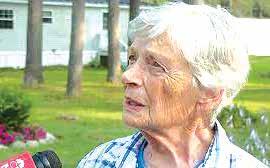
Marjorie Perkins said that she woke up in the middle of the night to find a man standing “by my bed, no shirt on, and it was dark, and he said, ‘I’m going to cut you.’” She jumped out of bed and picked up a chair, which she said she used as a shield.
If you don’t want to shell out $50 for this damaged doll, you can make your own.
Mattel has now debuted its newest Barbie: Weird Barbie.
The doll comes with a hot pink outfit and yellow boots. But that’s not what is weird about it. Take a closer look and you’ll see that it sports markings on its face that look very much like the same markings that your toddler may have made with the pen that he got his hands on last month.
The figurine also comes with different colored hair that looks as if it’s been hacked off by a three-year-old barber in training.
According to Mattel, the hair and markings are made “to emulate a doll that’s been played with just a little too much.”
The doll is one of seven products in an expanded collection stemming from a new movie based off the Barbie character. The movie has raked in at least $1 billion since its debut three weeks ago.
She’s such a doll.

The man kept knocking her into the wall, until “he got tired of that.” Perkins then followed the intruder into the kitchen, while telling him to get out of her house.
But then the trespasser told her that he was hungry.
“He stopped in the kitchen by the sink and said he was very hungry, and he hadn’t had anything to eat in a long time,” Perkins said.
The 87-year-old offered him a “box of peanut butter and honey crackers” and two tangerines, along with other snacks, citing her time as a teacher for her quick thinking.
“That was to keep him busy, what do you think? I taught school (for) 35 years,” Perkins said.
The crime-fighting grandma called 911 while the man ate. But the suspect finished eating, put on his pants, and left before police came.
He left behind his shoes, shirt, and knife.
Perkins said she knows the criminal’s family, as he lives in the area. He had mowed her lawn years ago for cash.
There’s no place like home. On July 26, Torbjorn “Thor” Pedersen finally made it back home – after ten years of visiting every country in the world without flying.
Thor set out on his epic journey on October 10, 2013. Along the way, he made sure to spend at least 24 hours in each nation and kept his costs low by
living off around $20 a day.

On May 24, 2023, Thor finally accomplished his goal after visiting his 203 rd and final country, the Maldives.
But then, on his return back to Denmark, his homeland, Thor wanted to bring the project full circle.
“In my cabin, I looked out the porthole in Malaysia, and it dawned on me that every day the view would gradually change until it finally became Denmark,” he said.
“Even if I broke my leg at that point, I would make it home. There are no more snakes, wild dogs, malaria, or visas to secure – I just had to avoid falling overboard!”
Back at the Port of Aarhus on Denmark’s eastern coast, 150 people were waiting to celebrate with the seasoned traveler.
miles through several countries to get to Pakistan before his visa expired.
Another time, he suffered from cerebral malaria in Ghana. He also survived an intense four-day storm while crossing the Atlantic from Iceland to Canada.
special relationships.”
Thor used his time there well, including marrying his finance, who was back in Denmark, via a U.S.-based virtual wedding service. This way, his new wife was able to visit him in Hong Kong.
“There’s a historical sense of returning home by ship – people can see it on the horizon and stand and wave as I come down the gangway,” Thor, who has been traveling as a goodwill ambassador for the Danish Red Cross, said. “And that seems like an appropriate way to complete the project.”
After celebrating in the Maldives, the 44-year-old backtracked to Malaysia via Sri Lanka to board the massive MV Milan Maersk – a container ship stretching roughly 1,310 feet long, or about the size of 3.6 soccer fields – for the 33-day voyage home.
“I’ve seen many tearful eyes since I got back – people have come up to hug me sobbing,” he said. “I have also received a lot of gifts – Danish beer, milk, foods – and got to meet people who have been following my social media from Colombia, Australia, Norway… That was amazing.”
He says that it’s the little things that he truly cherishes now: clean, cool Danish air, his morning runs with his wife, and ice-cold milk.
His journey was far from simple.
At one point, Thor thought he could acquire a Chinese visa at the border with Mongolia and then travel to Pakistan. But due to the long processing time, he had to backtrack nearly 7,500
But sometimes, luck was on his side. Equatorial Guinea is one of the world’s most difficult countries to access. After four months and many failed attempts, Thor finally acquired a visa. Even though land borders were closed at the time, he was able to cross thanks to a serendipitous encounter with a stranger who worked in Equatorial Guinea and offered him a ride.
When the pandemic struck, Thor was stuck in Hong Kong, with only a few countries left on his list.
“I look back at Hong Kong, and it’s a bit of a paradox. It was the worst time of my life and the best time of my life, somehow. I had to cope with the situation – it was such a struggle to work out if I should abandon this project nine countries short of completion,” he shared.
“I had to ask myself: how much of my life will I give to this? But while waiting for the world to open, I made a life in Hong Kong and forged so many
“We spent 100 days together, which was wonderful,” he recalls, adding that it was their longest stretch of time together since Pedersen left Denmark in 2013. “She got to meet my friends and understand my life. We love hiking in Hong Kong and did the MacLehose Trail, which is 62 miles long at more than half the elevation of Mount Everest, side by side in one go.”
Along the journey, Thor crossed more than 223,000 miles. His trek took 3,576 days. And because he shunned air travel, Thor used 37 container ships, 158 trains, 351 buses, 219 taxes, 33 boats, and 43 rickshaws.

Now, back at home, Thor is spending time with his family and thinking about his next journey.
Although there is no place like home.
















What an incredible summer for One Israel Fund, and it’s not even close to being over! During the past six weeks, over 600 people came out in support of One Israel Fund at our annual summer BBQ and Fine Israeli Wine tasting events in West Hempstead, Englewood, Great Neck, and the Five Towns. An incredible thanks to each of our hosts, Sharon & Alan Shulman, the Gontownik Family, Shira & Dr. Benjy Neren, and Naomi & Mark Rubin, for all their hard work and for opening their homes and their beautiful yards.
Significant funds were raised to

help support the communities and residents living throughout Judea and Samaria – our Biblical Heartland. Eve Harow, director of tourism and education, and Marc Provisor, director of security projects for One Israel Fund, were both able to join from Israel at the events and hearing from them was a fortuitous opportunity for all those in attendance. In addition, guests heard from an array of speakers including One Israel Fund president Jacqui Herman and executive vice president Scott M. Feltman as well as Nassau County Executive Bruce Blakeman and Great Neck Mayor Dr. Pe -
dram Bral.
Those in attendance learned about the vitally important projects One Israel Fund provides each and every year to help support these families in the areas of preventive security equipment, medical, education, recreation and community development needs. Eve and Jacqui spoke passionately about the nascent Women’s Division of One Israel Fund which will be hosting its opening event on September 7.
The incredible array of BBQ fare, presented by our caterers Maine Event/ Mauzone, Esprit, and Graze as well
as the wonderful Israeli wine tasting by Royal Wines and Spruce D’Vine helped make this year’s events our most successful ever.
For more information about One Israel Fund and its impactful mission, please visit www.oneisraelfund.org Once on the site, you can find an array of content including information about its projects, its numerous day tours and missions including two outstanding Wine Tours upcoming on August 22nd and 24th with Eve Harow as well as unique virtual tours of many interesting people within the communities of Judea and Samaria.

On Sunday, July 23, the Representative for New York’s 4th Congressional District, Anthony D’Esposito, joined over 50 members of the Lawrence Jewish community to discuss pressing issues of concern, including combating rising antisemitism, improving our economy, and supporting Israel. The Republican Jewish Coalition (RJC) hosted Congressman D’Esposito at the home of Eliot and Marilyn Lauer. The RJC is the national grassroots organization of Jewish Republicans and represents tens of thousands of Jewish Republicans across the country; the organization is uniquely effective in helping to elect pro-Israel Republicans.
“There’s a big difference between saying you’re pro-Israel, and governing as a pro-Israel Member of Congress,” Rep. D’Esposito said. “After I returned from Israel with a bipartisan congressional delegation, celebrating the 75th anniversary of Israel’s independence, I was honored to accept appointments from Speaker Kevin McCarthy to a new par-
Did you know?

liamentary working group between the Knesset and the House of Representatives, as well as an appointment to the United States Holocaust Memorial Museum. I will utilize these positions to fight antisemitism in our district and across the country.”
Congressman D’Esposito also touched on his co-sponsorship of creating a special envoy to the historic Abraham Accords peace agreements: “This is another opportunity to continue, in the face of hate, efforts to build on peace in the Middle East.”
Noting that NY-04 will be a highly competitive battleground district in 2024, Congressman D’Esposito sounded a confident note: “I have no doubt that we will win this seat. All politics is local. I have the windows down in my car, meeting voters and working every day to win.”
Congressman Anthony D’Esposito has made combating antisemitism and supporting Israel a priority throughout his tenure in public service. During his time as a Hempstead Town

Bees can fly higher than 29,525 feet above sea level, higher than Mount Everest.
Councilman, D’Esposito led America’s largest township to adopt a sweeping anti-BDS law - legislation that prevents the municipality from collaborating with private entities that engage in the antisemitic “Boycott, Divestment, Sanctions” campaign targeting Israel.
As a Member of Congress, D’Esposito participated in a bipartisan congressional delegation trip to Israel. During the visit, D’Esposito connected with Israeli lawmakers and reaffirmed the special relationship between the two countries.
On the federal legislative front, Congressman D’Esposito co-sponsored H.R. 3099 – legislation to establish an American Special Envoy to the Abraham Accords. A permanent American presence in the form of a Special Envoy will ensure the United States can support its ally, Israel, as the country works diligently to promote a lasting peace in the Middle East even in the face of hostile neighbors. The legislation passed in the House of Representatives on June 13, 2023.
Congressman D’Esposito serves on the House Committee on Homeland Security, the House Committee on Transportation and Infrastructure, and the House Committee on House Administration. In addition, he serves as Chairman of the Subcommittee on Emergency Management and Technology.











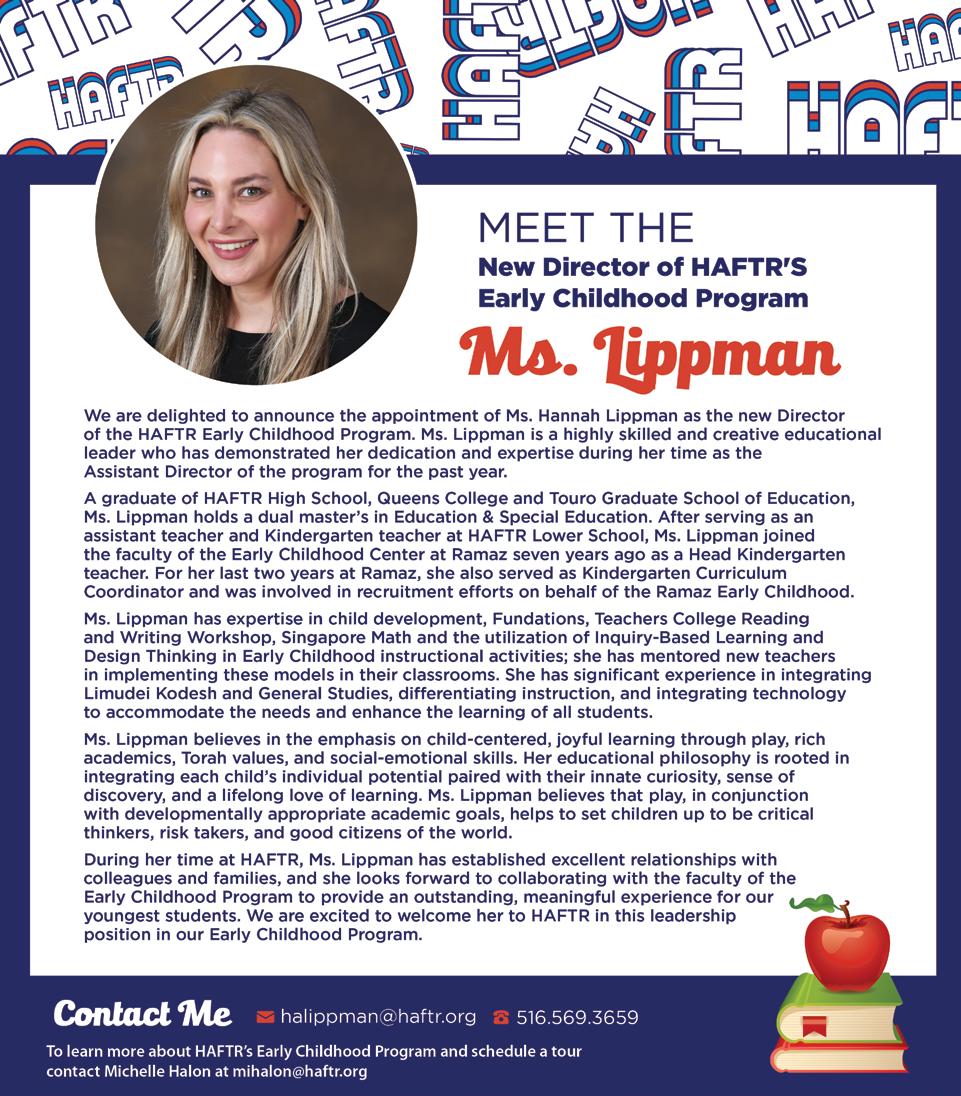


The National Circus Project came to Avnet Country Day School for a two-day interactive experience. Campers were mesmerized when the fun kicked off with a performance by the professional crew. Then it was time for hands-on workshops with specially trained circus education staff. Participants were taught impressive skills and tricks like juggling, plate spinning, scarf
tossing and stick flipping.
“This is our second year bringing the National Circus Project to Avnet, and it was even more thrilling than last summer,” said Daniel Stroock, camp director. “Besides being an innovative activity, the workshops allowed campers to learn the importance of practicing to achieve new skills. We hope parents enjoy watching their budding performers at home!”
 By Yakira Colish
By Yakira Colish
As we stood by the crystal blue water in Porto, I couldn’t help but be mesmerized by the Iberian Peninsula’s beauty. Yet, amidst the towering medieval castles and tasteful art lay the inescapable echo of the region’s dark past. Although it has been nearly two centuries since the end of the Spanish Inquisition, it is etched in our collective memory. Recognizing the importance of exploring our roots, Touro University created a transformative 10-day summer course abroad, with a focus on Jewish history in Spain and Portugal.
Fellow students and I had the opportunity to tour 12 cities and sit in on engaging lectures, all the while getting three college credits and making lifelong memories. Our long bus rides were filled with deep religious and philosophical discussions and our nights were spent bonding over our action-packed days. Through exploring Sephardic contributions to Rabbinic and literary work, Touro’s es-
teemed professors allowed us to tap into the beauty of the Sephardic community that once was, making the impact of all that was lost even more potent. Learning about Ramban’s dialogue with Christian theologians and his contribution to Jewish thought was especially impactful.
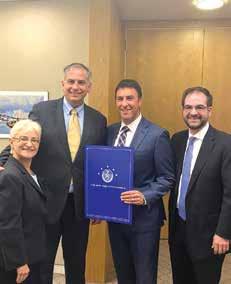
As we passed by numerous shulsturned-churches and encountered Torah scrolls frozen behind glass windows, the haunting consequences of history came to life. But, as we learned, the past was not entirely bleak. Stories of crypto Jews who risked their lives to practice Judaism in secrecy put the value of our long-held practices in perspective, making us realize how fortunate we were to be a link in the unbreakable chain of Jewish continuity. It was incredibly touching to witness the revival of the Jewish community, largely due to the wave of immigration fueled by a government law granting citizenship to Jews of Sephardic descent.
The Chabad Center in Cascais, Portugal, exemplified this. Over dinner, we listened thoughtfully as Rabbi Eli Rosenfeld, the Chabad leader, explained
the journey it took to establish and build the local Jewish community. Although we were aware there was much more work to be done, we were all incredibly impressed by the charming building, delicious kosher food, and captivating Jewish leader now at the center of this once desolate Jewish community. We couldn’t help but feel optimistic about the future for those wishing to return to a place they once called home.
The optimism was tempered by the recognition that antisemitism still persists, as various professors and local Jewish residents reminded us. In addition to exploring the Spanish Inquisition, the trip’s impact was amplified by the discussion of Spain and Portugal’s response to World War II. Dr. Karen Sutton, professor at Touro’s Lander College for Women, shed light on the heroic diplomats who saved Jews, while also acknowledging various devastating pitfalls. The discus-
sion of Holocaust heroes also included the valuable contributions of fellow Jews, a historical fact all too often glossed over.
If I had to choose one moment to represent the trip, it would be this: walking down the streets of Lisbon, Portugal, my friends and I admiring the breathtaking architecture surrounding us. Just after we snapped a photo, cheesily posing with our baseball caps and pina coladas, a fellow student pointed out that in this very city, thousands of Jews were brutally massacred. This duality of captivating beauty stained with catastrophic violence serves both as a reminder that looks can be deceiving and as an ode to the complexity of history and the world in which we find ourselves today.

Chazaq, a leading nonprofit organization dedicated to empowering and enriching the lives of youth, proudly held a Ribbon Cutting event for its state-of-the-art Chazaq Youth Center in Forest Hills. The momentous event took place with the esteemed presence of distinguished elected officials, underlining the center’s significance as a transformative space for local public school students.
The Chazaq Youth Center stands as a beacon of hope and growth, offering a nurturing environment for students participating in Chazaq’s renowned Shaping Lives for children and Jwave programs for teens. A true home away from home, the center is designed to foster personal development, educational enrichment, and engaging recreational activities, creating a well-rounded experience for the youth.
At the heart of the celebration, the students themselves took center stage, performing the ribbon-cutting honors. This symbolic gesture solidified their role as active participants in shaping the destiny of the Chazaq Youth Center. Rabbi Yaniv Meirov, the visionary behind

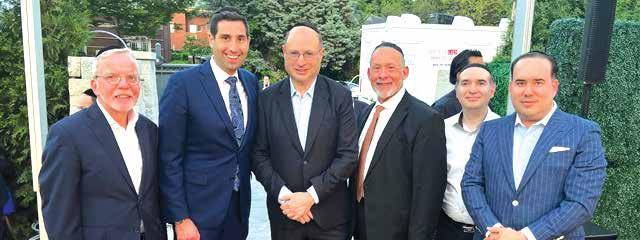
this endeavor, delivered inspiring opening remarks, highlighting the organization’s commitment to empowering young minds and strengthening the community’s foundation.

The distinguished gathering of elected officials added a sense of significance and endorsement to the occasion. Notable figures present included Congresswoman Grace Meng, Queens District Attorney Melinda Katz, Queens Borough President Donovan Richards, State Senator Leroy Comrie, New York City Public Advocate Jumaane Williams, New York City Council Members James Gennaro, Vickie Paladino, and Lynn Schulman, and Assemblymember Andrew Hevesi. Their presence underscored the communal support and shared vision for a brighter future for the youth.
The Chazaq Youth Center promises to be a vital hub for personal and communal growth. With a focus on nurturing talent, fostering leadership skills, and providing a safe haven for exploration, the center aspires to create a generation of empowered individuals poised to make a lasting impact on society.















Hempstead Town Supervisor Don Clavin assisted Bob Slochover of Woodmere as he participated in the Town of Hempstead Stop Throwing Out Pollutants (S.T.O.P.) Program on July 11, 2023 in Levittown. This program allows residents to dispose of harmful pollutants – such as antifreeze, drain cleaners and pesticides – in a safe and environmentally friendly manner.
Friends of the Israel Defense Forces (FIDF) and the Lido Beach Synagogue partnered for an inspiring Shabbaton weekend on July 21-22 which brought together approximately 300 community members to express their unwavering support for Israel’s courageous defenders.
The Shabbat program, sponsored by Etella and Haim Marcovici in loving memory of Ileana Marcovici, a”h, Eidel Bas Zvi Hakohen, z”l, featured Steve Weil, CEO of FIDF, along with two extraordinary IDF soldiers, Captain Baruch and Second Lt. M., who captivated the audience with their remarkable stories of service and bravery.
Rabbi Elly Krimsky of the Lido Beach Synagogue shared his reflections on the event, saying, “Our synagogue experienced a truly special Shabbat as we immersed ourselves in the world of the IDF. The presence of national and regional FIDF staff, together with two exceptional IDF soldiers, left a profound impact on all of us.”
Captain Baruch, an esteemed Israeli Navy officer, left a deep impact on all who heard his account as he shared his experiences serving on the front lines, including his team’s active involvement
in the recent Operation “Guardians of the Wall.” His sense of pride and purpose in protecting Israel was evident, reflecting the enduring commitment of IDF soldiers.
Baruch also detailed his life-changing experience as one of the 10 soldiers in uniform during FIDF’s 2023 Holocaust to Independence Mission to Poland. “Israel is a miracle of creations; it is hard work, and as a soldier, there isn’t a better symbol of victory than to walk in Poland in uniform with Holocaust survivors.” While many members of the delegation were overcome with emotion during visits to the camps, he said, smiles of pride and hope emerged as they made eye contact with participating soldiers.
Second Lt. M., a key member of the David’s Sling weapon system, deeply inspired the audience with her journey and pivotal role in saving the lives of thousands of civilian targets during the recent operation “Shield and Arrow.”
The FIDF Shabbaton Weekend at Lido Beach Synagogue served as a powerful testament to the united support of the Jewish community for the brave men and women of the IDF and reaffirmed the community’s devotion to ensuring a safer future for Israel.

JCCRP (Jewish Community Council of the Rockaway Peninsula) invites all community members and elected officials to our Holocaust survivor distribution for Rosh Hashana on Wednesday, August 16 at 125 Beach 19th Street. Volunteers will have the meaningful and increasingly rare opportunity to engage with local Holocaust survivors at the distribution. Preparation for the distribution will take place

on Tuesday, August 15 at 11-44 Foam Place, JCCRP headquarters, when the food boxes will be packed; volunteers are welcome.

We look forward to partnering with the Five Towns and Far Rockaway community to bring smiles to the faces of Holocaust survivors this Rosh Hashana! If you would like to volunteer, please email volunteer@jccrp.org
Hundreds of Bnei Akiva chanichim (youth), including over 300 teens from the greater New York metropolitan area, roared with excitement last Thursday night in Kfar Saba when Ishay Ribo, one of Israel’s most beloved singers, took the stage at a surprise concert and sang out to the crowd, “Erev tov, Bnei Akiva!” The teens, many donning Israeli flags on their backs or heads, danced, jumping up and down in excitement, and screaming the lyrics to all of the songs they knew by heart, their energy and ruach filling the concert venue.
The concert kicked off Shabbat Mach Hach, the once-a-summer unifying Shabbat when all 11 Mach Hach BaAretz buses join together for a weekend.
“It is amazing to be living in a generation when we can experience this wonderful country and the incredible land promised to us by Hashem,” said Rav Shaul Feldman, Executive Director of Bnei Akiva of the U.S. and Canada, at the concert. “Now, we have an opportunity to honor this land with one of the best artists in this generation of redemption of the Jewish people.”
Ishay’s moving performance was part of Bnei Akiva’s Celebrate Israel 75 Concerts series, a musical tribute to the heartbreak and hope of Israel’s 75 years of existence. Bnei Akiva launched the series with Eitan Katz at their Upper West Side Yom Ha’atzmaut event and will also host Joey Newcomb at day camps across the country this summer.
The series culminates with an Ishay Ribo concert at the storied venue of Madison Square Garden on Labor Day Weekend, the first time that an Israeli Jewish Orthodox artist will perform on the main stage at the Garden. Ishay will sing to a sold-out audience of 14,000 people from across the spectrum of the Jewish community, from Orthodox to non-affiliated, Ashkenazi and Sephardic, all united by celebrating the incredible story of the State of Israel through music and the ultimate message that no matter your background, as a Jew Israel is your home.
The Elul concert will no doubt serve as an uplifting experience imbuing the ultimate teshuva, return, returning to our core and to our homeland: Am Israel, Eretz Israel, Torat Israel.














In a big win for NYC Public School employees, Assemblywoman Stacey Pheffer Amato recently had bill A.7644 signed into law by Governor Ho -
chul which extends the current 7% per annum statutory rate of interest used by the Chief Actuary for the New York City Employees’ Retirement System (NYCERS), Teachers’ Retirement System (TRS), Board of Education Retirement System (BERS), and several other pensions in New York City with regards to the fiscal amount of employer contributions to those systems. Through this legislation, Pheffer Amato ensured that individuals who are part of those pensions didn’t suffer from a decrease in employee contribution but instead remained at the preferred rate.

On Monday, July 24, Achievements joined the Principal Think Tank X and Conference in Lawrence, NY. The event was hosted by the Consortium of Jewish Day Schools (CoJDS). Achievements is a national educational publishing and services company. It provides Jewish schools with kosher, innovative curricula in many subjects for K-12. The Achievements booth featured the company’s impressive array of beautiful books on math, history, science, writing, reading comprehension, grammar, handwriting, STEM, and financial literacy. The event attracted principals and heads of school from all over the country and beyond. Participants joined workshops aimed at empowering educators with the tools to
create even better kodesh and general studies programs in their schools.

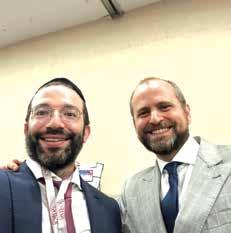

Thursday, August 3 marked a momentous occasion for Camp Kaylie, as it graciously welcomed five esteemed rebbetzins, infusing the camp with an atmosphere of joy and spirituality.




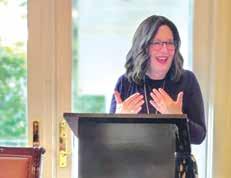
The arrival of these distinguished guests was met with a warm and heartfelt reception from the entire camp community. During this memorable day, the Yona Division actively participated in a challah bake, an activity that not only fostered camaraderie among the campers but also served as a symbolic reminder of the sacred mitzvah of taking challah. Rebbetzin Shani Tarigin, in her enlightening address to our campers, emphasized that the act of making challah infus-
es the dough with “nishmas chaim,” just as Hashem breathed life into man. This profound insight deepened the campers’ understanding of the sanctity associated with challah.
Additionally, the Nesher and Teen Divisions engaged in a thought-provoking panel discussion with the visiting rebbetzins. This interactive session provided a unique platform for campers to seek guidance, ask questions, and gain valuable insights into various aspects of their Jewish faith and identity. The impact of this enriching experience will undoubtedly resonate in the hearts of both campers and rebbetzins, fostering a lasting appreciation for their shared love of Torah and mitzvos.
Overall, this significant day left an
indelible impression on the campers, inspiring them to reflect upon their beliefs and values. It is certain that the memories and lessons gained from this extraor-
In late July, more than thirty women from around the world convened in Lawrence, NY, for Core’s Annual Board and Staff Summit. The gathering marked a rare opportunity for the remote team to meet in person. At the home of Rabbi Dovid and Mrs. Debbie Greenblatt, they celebrated Core’s growth, identified strategies for inspiring Jewish women, and outlined the year ahead.
Core was born when co-founder Aliza Bulow observed over decades of working with rebbetzins worldwide that Jewish women have an ever-increasing desire for a more profound sense of community and spiritual connection. Together with Rochel Goldbaum of Denver, CO, Aliza set about transforming this longing into an opportunity for growth and development.
Core envisions vibrant Jewish communities where individuals feel a sense of belonging, a willingness to contribute, and an ability to inspire others to do the same. Bulow explained, “We’re serving
as the oil and matches to the women who are igniting light in others.”
The nonprofit’s mission encompasses three interconnected initiatives. The Communities of Practice network provides a professional development platform for women in various fields of Jewish service. The Mashpia-Mentor-Counselor (MMC) fellowship program offers comprehensive community enrichment training to selected female mentors. Lastly, Core Circles create micro-communities of women who form meaningful connections at a local level.
Elissa Felder of Providence, RI, who coordinates professional development across Core’s fourteen Communities of Practice, saw the gathering as a chance to reflect on Core’s achievements and future plans. “[The summit] helped to clarify some of the things that we’re working on to improve, some of the areas that we want to shed more light and focus on,” Felder said.
The conference began with divrei
bracha from Rabbi Shais Taub and an address from Aliza Bulow. Terri Herenstein, a local attendee and donor, praised the organization’s work, saying, “They are speaking to a need and responding with concrete action. I am excited to be a part of this vision!”
Breakout sessions on community engagement, organizational management, and spiritual development followed, with speakers including former OU president Rabbi Moishe Bane and Rebbetzin Yehudis Golshevsky of SHIVITI.
The in-person summit gave Core’s members and staff a unique opportunity to connect. Aliza Polstein, a board member from Chicago, shared that she felt “an awesome sense of responsibility and privilege to be amongst this group of brilliant and uniquely talented women.”
Nalini Ibragimov, a staff member from Woodmere, NY, echoed this sentiment.
“Sitting with so many passionate women who want to do and give to klal Yisrael is something that many may speak about,
dinary event will continue to shape their spiritual journey for years to come.
but few are able to put into practice. I left with incredible confidence in what can and will be done for Jewish women.”
The summit reinforced Core’s ongoing growth and impact. By fostering the development and connection of Jewish women worldwide, Core remains committed to strengthening the fabric of Jewish life.
For more information on Core and their transformative work, visit www. CoreTorah.org.
In a dazzling display of creativity, Avnet campers demonstrated their style and spirit at the annual “Jack Tarzik Crazy Hat Day.” Each bunk selected a theme and then got to work crafting hats to wear on a musical march around the gym. The results included an exciting array of designs as campers were transformed into New York City tourist attractions, Israeli flags, superheroes, planets, campfires, fish, sports, and even tacos. The children were eager to show off their creations and cheer
their friends on as well.

“We love Crazy Hat Day because it allows our campers to have fun and get creative as a group. All the hats were amazing, but my personal favorite was the ‘Thank You Hashem’ hats that were personalized with each camper’s number one thing that they were thankful for,” said Daniel Stroock, Camp Director. “It’s also a special way to honor the memory of our previous director Jack Tarzik, a”h, since it was his favorite day and he spread so much joy.”
The sixth week of Hillel Day Camp has been an absolute blast! It was an absolute whirlwind of excitement, joy, and wonder! Our programming has taken an extraordinary turn with the completion of a Bandaid drive for Cohen’s Children’s Medical Center, showcasing their chessed, compassion and empathy by collecting bandages for local hospitals.

Wednesday was totally WACKY as our Nursery through Second Grade campers dressed up in their wackiest outfits and costumes, embracing their individuality and unleashing their inner goofiness. The camp-wide Wacky Races brought forth laughter and joy as campers and staff teamed up in hilarious relay competitions. At the end of the day, we were treated to a mesmerizing spectacle by Dr. Schnitzel and his WACKY science show. The children were enthralled by his magical experiments, colorful reactions, and quirky humor that left them in awe.
On Friday, we had another rocking Oneg with Rabbi Klein which included our weekly award ceremony and video presentation and some electrifying Rikudia (Israeli dance) sessions, where campers immersed themselves in our rich cultural heritage through music and dance. These unique activities have added a special sparkle to our summer, fostering a sense of community and social responsibility.
The sports leagues at Hillel Day Camp


have ignited the spirit of competition, bringing out the best in our campers. From soccer to basketball and everything in between, our young athletes have been showing remarkable dedication and sportsmanship. But that’s not all; we also have a unique track for those who seek an alternative to traditional sports. This allows every child to find their passion and excel, creating a diverse and inclusive environment that celebrates individual interests and talents.
Brett Baty of the New York Mets commented how impressed he was when he saw the athletic ability of our campers during his visit to camp last week.
As we head toward week 7, we are reminded of how fortunate we are to have such an enthusiastic and spirited community at Hillel Day Camp. With each passing week, the spirit of Hillel Day Camp grows stronger, and we look forward to creating even more magical moments together. The bonds formed, the skills honed, and the memories made will undoubtedly last a lifetime. Let’s continue embracing the spirit of adventure and camaraderie as we journey through the rest of this extraordinary summer together!
For six years now, Camp shira has beCome one oF the hottest C amps in town. at Camp shira, C ampers have something to sing about. w ith a beautiF ul C ampus, energetiC sta FF, outstanding aCtivities, and nonstop F un, a summer in Camp shira builds memories For a liFetime. w e spoke with C amp direCtor Nechama SittNer in the middle oF her busy sChedule to learn a bit more about all the F un that is paCked into eaCh day.
Thank you for taking the time to talk with us. Camp Shira has been around for six years. How is this year different?
Camp Shira has been around for six years, but this year is really year one of the new Camp Shira!

Like all beginnings, the start of summer was a challenge, but we have b”H emerged into the season stronger than ever!
What do you think sets Camp Shira apart from other local day camps?


Camp Shira is an inclusive camp! We have children from all over the Five Towns, Queens and Brooklyn. They come fom schools like BBY, Shulamith, TAG, Prospect Park, BYQ and more. Everyone has a place at Camp Shira!


You have different divisions in camp. Can you tell us about them?
Sure. We have three divisions this year: our Tots division, Juniors division, and our Senior/Teens division.
We have our two amazing division heads who returned from last year in our
Tots and Senior/Teens divisions, Morah Mirel Krasner and Mrs. Chavsie Friedman, respectively.
We welcomed Morah Faige Trapunsky this year as our Juniors division head, and she has done a fantastic job on every level!
Your Shira Tots are so cute! What special activities do you have for them?
Our Tots division is by far our cutest division (sorry Juniors and Seniors!).
We have added some brand-new and really creative activities for them! Our Build It room is a favorite with “bricks” and “wood,” pool noodles and dozens of connectors to build the most creative objects ever.
We also added an interactive room that utilizes a projector to project a touch sensitive screen onto the floor for all kinds of video-type play. Our Kindergarten girls and First grades especially love that room!
I heard there are great trips at Camp Shira. Can you share?
Our trips this year included some
oldies but goodies and a few new trips to spice things up. The favorites like karate, gymnastics and bowling are always on the calendar with new locations like High Exposure and the brand new HAPIK indoor climb added.
The HAPIK and High Exposure trips were especially enjoyed by the girls as there were so many different options of things to do at each location!
The Jewish Children’s Museum and Once Upon a Treetop for Tots were favorites as well.
The Teen division is awesome – what special overnights do they go on?
This year, especially for our oldest bunk, our Teens, we had two overnight trips.
Our first one was in July and featured a trip to Hersheypark. The girls traveled with their division head and staff to Hershey, PA, and enjoyed all afternoon and evening in the park. Hersheypark is always a favorite destination as there is so much to do (and taste!) all
around the park!
After the park, they traveled to their beautiful hotel for a good night’s rest. The next morning, they enjoyed a breakfast on the go as they rushed off to the next destination, black-light mini golf at Monster Mini Golf in Edison, NJ. The girls came back to camp exhausted but happy!
The next overnight planned is a wet and wild trip to Kalahari Indoor Waterpark. It’s sure to be a hit!

Sounds like so much fun! Camp Shira is located in Shulamith. That’s a great place for a camp.
I agree. I can’t say enough about our home at Shulamith School for Girls. The campus is spacious and beautifully kept. We have more than enough room for our incredible water slides, our new pre-school size water park, sports, sand play, playground and space for some of our specialties to work outdoors.
Inside, we enjoy our incredible auditorium that we use for a variety of events. Our magicians, game shows,
bunk day performances and of course color war all took place there in addition to our pre-Nine Days dance off and erev Tisha B’Av movie.

With our air-conditioned gym and classrooms, we have ample space for the campers to play and enjoy.

What’s a “typical” day like at Camp Shira?
Each day is filled to the brim with interesting and creative activities for every age group.

The day typically starts with Ruach in our auditorium, where the older bunks gather each morning. They then head off to their bunk rooms where they daven and get ready for the day. A day’s activities will see the campers heading to Arts & Crafts, Waterpark, Creative Movement, Dance, Paint or Drama. Baking, Food Art, Paper Art, Build It and Interactive room are just a few more of the activities that take place each and every day.
Every week there is also a special event for our Main Activity. Bunk Day, The Game Show, The Magic of Amore, and Color War – you never know what’s going to pop up on a daily basis.
Additionally, we head out to the North Woodmere Park Pool every Tuesday and Thursday where the campers can enjoy the beautiful pool facility. There is nothing like some fun in the sun and a beautiful pool to swim in along with it!
Your slogan is “Camp Shira: Something to Sing About.” Are you doing anything special in relation to that?
This year, as a nod to the camp tag line, “A Summer to Sing About,” we have provided each bunk with a pre-loaded MP3 and mini speaker so that music can follow the bunks wherever they go. Everything is more fun with some music!
Although this aspect of camp had to be curbed with the start of the Nine Days, it is back with a BLAST and music is being played all over camp once again!
Is there a camp “theme” this year?

In addition to the general camp theme of music, this year’s theme, The 7 Days of Creation, has added some special flair to the activities.
We have had dress up days that connected to the theme multiple times so far. Our Under the Sea, Hawaiian and Out of this World dress up days were a hit, with our Birds, Bees and Bugs day and Safari day coming up! Our senior staff has been dressing up right along with the campers, and it’s been wonderful seeing the campers’ reaction to the fun!
There is so much to do each day! How do you manage to run camp running so smoothly?
With so much going on all the time, it takes an enormous amount of coordination to keep things running smoothly.
I cannot possibly thank my division heads enough for all that they do day and night to ensure that everything gets done right! From writing the schedule to executing it, they are
everywhere all at once, yet focused on their divisions’ needs and proactive in taking care of each and every bunk.
My secretary Aviva is also an incredible part of the team. Without her organizing our office including all that goes with that (answering phones and taking care of dismissal changes with efficiency), we would be lost!
A word about my specialty heads is also important.
They are some of the best in the business! They are the ones that keep camp interesting every single day! They are with the campers all day long and do their very best to keep the activities interesting and engaging. The campers look forward to each activity because of the effort and planning the specialties put into their activities. We literally couldn’t do camp without them.
It sounds like you have an amazing staff. What makes you happiest to hear about campers’ experience at Camp Shira?
I think the best part of camp is seeing how happy the campers are as they pass my office on the way to and from activities. They don’t realize how much I enjoy seeing them smiling from ear to ear as they walk past. That is the best moment for me. I am loving that the campers are enjoying the day. They don’t have to know how hard we are working – they just come to camp to have a great day every day and that makes it all worthwhile!
Over 200 families served
Dozens of bathing caps distributed hundreds of slides down the water park slides
thousands of freeze pops eaten
One baked Shabbos treat for every child every week millions of smiles over the summer season!
L The game of golf is 90% mental and 10% mental. L
If you want to get better at golf, go back and take it up at a much earlier age. L
Golfers who claim they don’t cheat also lie.
L The less skilled the player, the more likely he is to share his ideas about the golf swing.
L A golf match is a test of your skill against your opponent’s luck.
L Counting on your opponent to inform you when he breaks a rule is like expecting him to make fun of his own haircut.
L The shortest distance between any two points on a golf course is a straight line that passes directly through the center of a very large tree.
L There are two kinds of bounces: unfair bounces and bounces that are just the way you meant to play it.
L A good golf partner is one who’s always slightly worse than you.
L Your natural ability as a golfer is in inverse proportion to the amount of money you spend on new equipment.
L If your opponent has trouble remembering whether he shot a six or a seven, he probably shot an eight.
L
John, Bob, and Steve all played golf recently. One played at Augusta, one played Pine Valley, and one played at Pebble Beach. If only one of the following four statements is true, who played where?
1. Steve played at Augusta.
2. Steve did not play at Pine Valley.
3. John did not play at Pine Valley.
4. John did not play at Pebble Beach.
Answer
The third statement is the only one that can be true and satisfy the conditions of the puzzle. Therefore, Steve played at Pine Valley, John played at Pebble Beach, and Bob played at Augusta.
For most golfers, the greatest handicap is the ability to add correctly.
L If there’s a storm rolling in, you’ll be having the game of your life. L
It is twice as difficult to hit a ball over water than sand.

L Your favorite golf sweater is the one that gets shrunk in the wash.
L Your first hole-in-one is always achieved when playing alone.

L Your greatest round takes place against an important business contact whom you can’t afford to humiliate.

Why did the golfer wear two pairs of pants?
Answer
Just in case he got a hole in one!
1. What is the maximum number of clubs you are allowed to carry in your bag during a PGA governed competition?
a. 9
b. 12
c. 14
d. 20
2. Match the words with the correct definitions:
1. Eagle
2. Birdie
3. Albatross
4. Bogey
a. Three strokes under par
b. Two strokes under par
c. One stroke over par
d. One stroke under par
3. What do you say when you hit a golf ball and you want to warn someone that they might get hit by it?

a. Mulligan!
b. Head’s up!
c. Fore!
d. Four!
4. Which state has the most golf courses per square mile?

a. Florida
b. Rhode Island
c. Maryland
d. California
5. When a golfer is referred to as a “scratch player” what does that mean?
a. He has a handicap of zero or better
b. If he is not winning when he enters the last three holes, he will make up a reason why he can’t complete the game
c. He takes a practice shot before each hole
d. He has a handicap above 100
6. List the following players in order of amount of golf Majors that they won:
a. Phil Mickelson
b. Walter Hagen
c. Jack Nicklaus
d. Ben Hogan
e. Tiger Woods
Answers:
1- C
2- 1-b, 2-d,3-a,4-c
3- C
4- B
5- A
6- Jack Nicklaus (18); Tiger Woods (14); Walter Hagen (11); Ben Hogan (9); Phil Mickelson (5)
Scorecard:
5-6 correct We got a Scratch Player!
3-4 correct: Want to take a mulligan?
0-2 correct: Fore!! Watch out – we have a real brain surgeon here!
Yankel comes home after his regular Sunday golf game, and his wife asks why he doesn’t play with Moishe Goldman anymore.
Yanke asks, “Would you want to play with a guy who regularly cheats, makes a fuss over everything, lies about his score, and has nothing good to say about anyone else on the course?”
“Of course I wouldn’t,” replies his wife.
“Well,” says Yankel, “neither does Moishe Goldman.”
In this week’s parsha, the Torah continues with the theme that runs through the previous parshiyot of Devarim, that we are always faced with stark choices in life – either blessings or curses, good or evil. The words of the Torah seemingly offer little option for middle ground on these basic issues of belief and behavior. Yet, we are all aware that the events in life are rarely, if ever, all or nothing, one hundred percent blessing or curse. In fact, Jewish tradition and teachings instruct us that hidden in tragedy there is always a glimmer of hope and goodness and that all joy and
happiness contain within it the taste of the bittersweet.
Jewish philosophy and theology have taught us that evil somehow has a place in G-d’s good world. We are faced with the problem of why the Torah addresses these matters without nuance, in such a harsh way which seemingly brooks no compromise, without a hint of a middle ground. After all, the Torah is not a debating society where one is forced to take an extreme, uncompromising stand in order to focus the issue being discussed more sharply and definitively.
Many rabbinic scholars of previous
generations have maintained that it is only in our imperfect, post-Temple period that we are to search for good in evil and temper our joy with feelings of seriousness and even sadness. But in an idyllic world, where the Divine spirit is a palpable entity, the choices are really stark and the divisions are one hundred percent to zero. Far be it from me to not accept the opinion of these great scholars of Israel, however I wish to interject a somewhat
to the physical world, of just our actual eyesight, but it applies equally to our spiritual world of Torah observance and personal morality.

Many times, we think we are behaving righteously when we are, in fact, behaving badly because we are not seeing the matter correctly. We are not wearing our corrective lenses, with the benefit of halacha, history, good common sense and a Jewish value system that should gov-


different thought into this matter. This parsha begins with the word re’eh – see. As all of us are well aware, there are stages in life that we can see well only with the aid of corrective lenses. Without that correction, we can easily make grave mistakes trying to read and see what appears before us. If we have to read small print, such as looking up a number in the Jerusalem telephone directly, it is almost impossible without the aid of corrective lenses. Well, this situation is not limited
ern our lives. Without this vantage, we see blessings and curses, good and evil, blurry, and undefined before our eyes. The Torah wishes us to see clearly – to instinctively be able to recognize what is the blessing in our life and what is not. The Torah itself has been kind enough to provide us with the necessary corrective lenses to see clearly and accurately. These lenses consist of observance of Torah and its commandments and loyalty to Jewish values and traditions.
Jewish tradition and teachings instruct us that hidden in tragedy there is always a glimmer of hope and goodness and that all joy and happiness contain within it the taste of the bittersweet.


Adapted for publication by Binyomin Wolf
The search for the Beis Hamikdash is one of the central points in this week’s parsha. Without specifically identifying its location, the pasuk (Devarim 12:5) says, “The place Hashem your G-d will choose from all of your tribes to affix His name there, you shall seek Him there at His dwelling and come there.”
The Torah is telling us that an integral part of the building of the Beis Hamikdash is that we must “seek Him there…”
Instead of specifying the place where the Beis Hamikdash would be built, the Torah repeatedly says that the Beis Hamikdash shall be in “the place Hashem your G-d will choose.” This phrase is used no less than sixteen times in this week’s parsha alone. According to our Sages, this is why the Beis Hamikdash is called Beis Ha’Bechira, The House of Choice.
But why is the location of the Beis Hamikdash treated by the Torah as such a mystery? Why must the Torah repeatedly say that it is in “the place Hashem your G-d will choose”? It is clear from Chazal that Hashem designated the future location of the Beis Hamikdash from the beginning of time, even carving out the site of the altar and canals for the wine libations at the time of the six days of Creation (Sukkah 49a). The Rambam (Beis Habechira 2:2) teaches that:
There is a tradition maintained by everyone that the place where Dovid and Shlomo built the altar is the same place where Avraham built an altar and bound Yitzchak, the same place where Noach built [an altar] when he left the Ark. It is the [location of] the altar on which Kayin and Hevel offered sacrifices, and on which Adam sacrificed an offering when he was created, and Adam was created from that place. The sages say, “Man was formed from the place of his atonement.”
It is clear that we have known from the time of Creation that the Beis Hamikdash would be built on a certain mountain in Yerushalayim. According to the Midrash (Pirkei D’Rebbe Eliezer 28), Avraham circumcised himself at the future location of the Beis Hamikdash and his blood flowed into the earth that would eventually fill the altar. If this was known long before Hashem gave us the Torah, why does He conceal the location? Rav Shlomo Hakohein Rabinowicz of Radomsk, zt”l, the Tiferes Shlomo, expressed the question clearly: Why did the pasuk not explicitly say, “The place that Hashem will choose, the holy mountain in Yerushalayim”? It would have been much clearer. Why the mystery?

The answer to our question lies in the very same pasuk we started with. In order to find the location of the Beis Hamikdash, “you shall seek Him there at His dwelling.” We must seek it out. As the Midrash (Sifri) says, commenting on the pasuk, “Seek and you shall find it. And afterward, the prophet will tell you
[that it is the correct spot].” Expanding on the Ramban, zt”l, on the same pasuk, the Malbim, zt”l, says: “This teaches them that Hashem will not reveal the chosen place through His prophets until they make an effort and seek it out. Then, [Hashem] will pour a spirit from above upon them after the appropriate preparation…” Along these lines, the Chasam Sofer, zt”l (Resp. Yoreh Deah 234), teaches that the location of the Beis Hamikdash was “hidden until [Hashem] illuminated their eyes in the days of Dovid Hamelech.”
In other words, Hashem is telling us that it is not enough that He chose the location of the Beis Hamikdash. We must choose it, seek it out, long for it, and do everything we can to find it. And who finally revealed Hashem’s choice as the actual location of the Beis Hamikdash? The man who felt more “unchosen” than anyone else in the world: Dovid Hamelech.
Dovid wrote about himself (Tehillim 118:22), “The stone despised by the builders became the cornerstone.” It became
the very foundation of the entire Beis Hamikdash. Even after Shmuel Hanavi told Yishai that one of his sons would be the next anointed king and excluded all of Dovid’s other brothers, it still never even occurred to his father and brothers that Dovid could possibly be the anointed one (Shmuel I 16:6-11). Yet Dovid, the “stone despised by the builders,” became the cornerstone, the beginning of a new dynasty to which Moshiach himself would eventually trace his lineage.
Dovid said (Tehillim 42:8), “All of Your breakers and waves passed over me.” He went through so much suffering. Chazal even discuss (see Yevamos 77ab) whether Dovid was allowed to marry into the Jewish people! Dovid certainly knew what it meant to feel “unchosen” and what it meant to seek, work, long, pray, and toil until he found his place in the Jewish people. Hashem therefore chose him to clearly reveal the location of the Beis Hamikdash and build its foundation. Dovid Hamelech represented the pinnacle of choice, the highest fulfillment of our obligation to “seek Him there at His dwelling and come there.”
In verses that Chazal say refer to Dovid, Shlomo Hamelech described this attribute of his father as follows (Shir Hashirim 3:1-2): “In my bed at night, I sought that which my soul loves; I sought but I did not find. I will arise and walk around the city, in the marketplaces and city squares. I will seek that which my soul loves. I sought but I did not find.”
What was it that he sought out so deeply? What was it that robbed him of sleep? Dovid wrote in Tehillim (132:1, 3-5), “A song of ascents: Remember, Hashem, Dovid, all of his affliction [in his toil to find a place for Hashem’s presence to rest – Rashi]… I shall not come
into the tent of my house, I shall not go upon the bed that was prepared for me. Nor shall I give sleep to my eyes or slumber to my pupils until I find a place for Hashem, dwelling places for the Mighty One of Yaakov.”
All Dovid Hamelech sought was the place where Hashem’s presence could be felt on a permanent basis in this world. He conducted his investigation by indefatigably searching through the streets and markets of Yerushalayim, looking for clues, comparing each location to maps and pesukim, trying to find the exact location of the altar and the Holy of Holies. That is why Hashem answered his prayers and rewarded his search with success. Hashem chose the place where we chose Him (ibid. at 13-14), “For Hashem has chosen Zion, He desired it for a dwelling-place. This is My resting place forever, here I shall dwell, for I desired it.”
It is the same now. We may know the location of the Beis Hamikdash but strangers defile it every single day and we cannot rebuild. Vile terrorists fire rockets at Yerushalayim and Jews all over Eretz Yisroel. So we continue to daven for the Beis Hamikdash, to seek it out. As the Tiferes Shlomo says, “Even if we know this place, that it is in Yerushalayim, and that no other place will be chosen, nevertheless, it is still impossible to build [the Beis Hamikdash] there until Hashem chooses our prayers and desires ‘from all of your tribes,’ that they are worthy that it should be built for them and that Hashem should cause His presence to dwell among them.”
We may know where the Beis Hamikdash will be rebuilt, but there is so much impurity standing in the way and the right time has not yet arrived. In fulfillment of the pasuk, “you shall seek Him there at His dwelling,” we must daven and hope for the rebuilding of the Beis Hamikdash constantly.
Just like one must seek out Hashem, the One without Whom we are incomplete, we also seek out a marriage partner, the one with whom we will build a home that serves as a microcosm of the Beis Hamikdash.
Why is there so much searching involved in finding one’s mate? We know Chazal say (Sota 2a), “Forty days before a fetus is formed, a Heavenly Voice goes out and says, ‘The daughter of So-andSo to So-and-So!’” If the right person is predetermined, why is it so hard to find one’s destined soulmate?
First, one cannot find his mate with-
out first feeling a profound sense of loneliness. One must feel he is missing an essential part of himself, that “it is not good for man to be alone” (Bereishis 2:18). One must first experience that existential loneliness before he is reunited with his other half and can say (ibid. at 23), “This time it is bone of my bone and flesh of my flesh.”
The pasuk which personifies the connection between marriage and our loving relationship with Hashem is (Shir
Hashem, as hinted at in the pasuk (Tehillim 100:3), “He made us and we are His.” The word for “His,” however, is read one way and written another way. It is written as if says “lo, no/not.” According to this reading, the pasuk says, “He made us and not us,” i.e., we did not make ourselves. We must know that our relationship with Hashem must exclude the perception that we take credit for any aspect of attainments, skills, or accomplishments. It is a word of exclusion.

together (lo and Lo), it contains the same letters as the month of Elul.
Whether it is an intimate human relationship, our relationship with Hashem, or meriting the fulfillment of Hashem’s dwelling place on earth, where the intimacy of the relationship between the Jewish nation and G-d is most revealed, there is always a dual nature. On the one hand, there is the exclusion of all else which is personified by searching and longing. And there is the dedication to one another, the intimacy personified by Hashem’s revelation of the location of the Beis Hamikdash after our search and by the way a husband and wife find each other.
Hashirim 6:3), “Ani l’dodi v’dodi li , I am my beloved’s and my beloved is mine.” We know that Chazal teach that the first letters of those words spell Elul, the month in the Hebrew calendar which starts soon and marks the beginning of the teshuva process. This pasuk shows that we must first seek out our beloved. Only when “I am my beloved’s,” when I search out the one I love, will I merit to attain the level called “And my beloved is mine.” Anyone in a successful relationship knows this to be true. It is so sad to have a wife and to give up searching for her, to have a child and to no longer seek him out.
This two-stage process is also reflected in the double meaning of the Hebrew word for “betrothed, mekudeshes.” The chosson says to his bride, “Harei at mekudeshes li, Behold you are betrothed to me.” On the one hand, the word implies that she is forbidden to every other man in the world. Betrothed here is a word signifying exclusion. This meaning of the word is related to the word hekdesh, sanctified to the Beis Hamikdash, i.e., forbidden to everyone such that no one may use the sanctified object for anything other than its designated purpose. So too, the bride and groom agree, through their betrothal, not to look anywhere else in the world. But the word “betrothed, mekudeshes ,” also means that the two are dedicated to one another. This usage implies inclusion, a positive, proactive dedication to one another. They are saying that they only have eyes for one another.
These two aspects of the relationship between a husband and wife are also apparent in our relationship with
But the word is also read as if it says, “Lo, His.” According to this reading, the pasuk says, “He made us and we are His.” It is not enough to look to Hashem alone and not give ourselves credit for anything we have. We must also realize that we are His, we have a unique and special relationship with Him. In fact, if we put the two ways of reading that word
May Hashem put all of our difficulties behind us, may He reveal the way forward toward the rebuilding of the Beis Hamikdash soon in our days, and may every husband and wife merit finding one another and never looking at anyone else but their beloved.
Rav Moshe Weinberger, shlita, is the founding Morah d’Asrah of Congregation Aish Kodesh in Woodmere, NY, and serves as leader of the new mechina Emek HaMelech.
We must choose it, seek it out, long for it, and do everything we can to find it.
The Daf this week and specifically Tosfos’s explanation (Gittin 83a and 84a) deal with a paradox of sorts. The result of an action causes that very action to be invalid, which accordingly negates the result. That, of course, reinstates the action, which causes a result that once again negates the action. A similar vicious cycle is related to the laws of brachos. (This article needs to be read sitting down!)
Someone devised a way to test prospective rabbis in their knowledge of halacha. They would present the candidate with a table full of food and would ascertain if he makes the brachos in the right order. (The rabbi was not allowed to say that he wasn’t hungry.)
The general rule is that more-specific brachos take precedence over less-specific brachos. The proper order of brachos is, therefore, ha’motzi, mezonos, ha’gafen, ha’eitz , ha’adamah , and she’hakol . Of course, if one made ha’motzi first, that will usually obviate the need for other brachos. Still, ha’motzi does belong on the list in a situation where one is eating a food item that is not usually eaten as a meal food such as candy. In that case, one would make a bracha on the food item even during a meal. (See Pischei Halachah chapter 5, footnote 10.) Still, one would recite ha’motzi on bread first before candy, since it takes precedence.
However, these rules only apply when one wants to eat all the food items now. Suppose one is sitting at a table where the cake for dessert is displayed. He is about to eat a grapefruit as an appetizer, when he recalls that mezonos comes first. In this case, since he doesn’t want to eat the cake now, he is not obligated to have a piece just to make the bracha of mezonos first. He may recite the bracha on the grapefruit first. This is an important halacha to know, as some smart kids will insist to their parents that they must eat the cake before salad, since, after all, mezonos comes first.
However, ha’eitz does not always
precede ha’adamah. If one likes a ha’adamah item more than a ha’eitz item, the ha’adamah comes first. For example, if someone likes watermelon more than apples, and wishes to eat them both now, he would recite the ha’adamah on watermelon first. This concept is referred to as “chaviv,” dear; one recites the bracha on the chaviv item first. The same halacha would apply even if we substituted a pomegranate, one of the shivas ha’minim—the seven species for which the Land of Israel is praised—for the apple. If one likes watermelon more than a pomegranate, one would still recite ha’adamah on the watermelon first. Then he would recite ha’eitz on the pomegranate.
To make things a little more complicated, the rule that the bracha over the chaviv item takes precedence over shivas ha’minim only applies when the food items have two different brachos—when one is ha’eitz and one is ha’adamah. However, if one desires to eat two fruits of the same bracha, the one that is of the shivas ha’minim takes precedence. Therefore, even if someone likes oranges more than dates, he would still recite a bracha on the date first. Since both the orange and the dates are ha’eitz, the shivas ha’minim come first. This is in contradistinction to reciting a bracha when faced with two produce items with different brachos, such as a tomato and a date. If one happens to like tomatoes more than dates, he would recite ha’adamah on the tomato first, even though dates are one of the shivas ha’minim

After that introduction, we arrive at the point of this article. Suppose someone has an apple (ha’eitz , not among shivas ha’minim), a pickle (ha’adamah), and a grape (ha’eitz and among shivas ha’minim) in front of him and wishes to eat all three now. He likes the apple best, then the pickle, and then the grape. On which should he recite a bracha first?
We said that when two items have the
same bracha, the bracha on the shivas ha’minim takes precedence over likability. Therefore, one should recite the bracha of ha’eitz on the grape before the apple.
Now, he has to decide whether to first recite ha’eitz on the grape or ha’adamah on the pickle. When there are two food items, one ha’eitz and one ha’adamah, likability is the determinant. Since this individual likes pickles more than grapes, he should recite ha’adamah on the pickle first.
Case closed? Not so fast. How could he recite ha’adamah first on the pickle when the apple is present? He likes apples more than pickles. The ha’eitz on the apple should take precedence over ha’adamah on the pickles.
Yet he can’t make ha’eitz on the apple first, because, as we said, he should be reciting the bracha of ha’eitz on the grape first. He can’t recite the bracha on the grape first, because he likes the pickle more than the grape, and its ha’adamah should take precedence. It’s a vicious circle. What a pickle! Rav Wosner, zt”l, writes that Rabbi Akiva Eiger was unsure about this very scenario.
One could argue that in fact the apple should be out of the picture, since in a case of apple vs. grape, grape wins. So really one is only left with the choice of making a bracha on the grape first or the pickle first. The fact that there is an apple on the table and he will be eating it is irrelevant, since he will not be reciting the bracha on it in any case. (It is similar to the mathematical rule of order of operations. First figure out which fruit will get the ha’eitz and then pit it against the ha’adamah.) According to this logic, first one would recite a bracha on the pickle and then ha’eitz on the grape.
However, the Steipler, zt”l, ruled that one should recite ha’eitz on the grape first. The bracha of ha’eitz, while recited directly on the grape, will cover the apple as well. Hence, the ha’eitz really includes
both the apple and the grape. Since the person likes the apple more than the pickle, the bracha of ha’eitz takes precedence because it is covering the food items he likes more.
Rav Wosner, zt”l, ruled similarly to the Steipler, but for a different reason. When one is in a quandary about which bracha to recite first, he should look for tie-breakers. For example, the opinion of the Elyah Rabbah is that one always recites the bracha over shivas ha’minim first, even if he likes the other food items better. He holds this way even if the shivas ha’minim item is ha’eitz and the other food item that he likes more is ha’adamah. Although we don’t follow his opinion as practical halacha, it can at least be used to break the vicious circle. Hence, we should recite ha’eitz on the grape, since that would at least be the ruling of the Elyah Rabbah. Moreover, there is the opinion of the Behag that ha’eitz always comes before ha’adamah regardless of other considerations. Once again, we don’t follow that opinion, but it can be used to break the stalemate—assuming that the person is still hungry by the time he figures out which bracha to make first.

For years, the City of Miami Beach had been harassing the Kerestirer Shtiebel, an invitation-only private minyan. The harassment was a negation
of the First Amendment rights of the citizens of this country. The city had sent code inspectors to film indoors and had further sent inspectors an astounding 126
times – unprecedented.
The City Code Enforcers testified that every Jewish looking person on the street walked into the Keristier Shteibel. The City executed a cease and desist injunction to stop the davening,
Finally, there was no option but to file a federal lawsuit, and a top-law firm was engaged.

To back themselves up, the city hired a Harvard PhD and former faculty member of Yeshiva Chovevei Torah to prepare a report. What is Chovevei Torah? According to an article in the Yated, “It is an institution that professes to be ‘Orthodox’ but, in fact, deviates from normative Orthodox thought, halacha and practice as accepted by Rabbonim and Poskim from across the spectrum of Orthodoxy.” The article noted that “a spirited, halachic and ideological battle has been waged from within the walls of Yeshiva University (RIETS) and the Rabbinical Council of American (RCA) against this movement.”
At first glance, the report filed by the YCT faculty member and later adapted by yet another “expert witness” appeared devastating. But the report had several problems and inaccuracies. This author was hired by the shtiebel’s law firm as an expert-witness to both prepare a countering brief and to testify and be cross-examined by the opposing counsel.
The counter-report stated that the underlying issue here is the fundamental First Amendment right of an individual to conduct a prayer gathering of a quo -
rum that is called a “private minyan” in a single-family home and whether or not, the City of Miami Beach, a municipality in the United States of America, can forbid that right by characterizing a minyan that is “private” as a “religious institution” and thus deem it in violation of its Municipal Code.
My brief argued that there are, in fact, five different types of minyanim. The Harvard PhD was conflating these five types of minyanim to make them all appear as fully-functional public religious institutions and that municipalities may not forbid Minyanim Types A, B, C, and D, as it is a violation of the First Amendment to do so – notwithstanding a paragraph that purports to allow private prayer.
What are the five types of minyanim?
Minyan Type A can best be described as “One and Done.” It is when a group of ten Sabbath observing men will gather together once, on an ad-hoc basis, to form a minyan. This most often happens at an airport, prior to a flight. Often, these ten people (or more) will never form that minyan together again. An individual looks for men wearing hats or yarmulkes identifying them as Jewish (or a baseball cap identifying them as possibly Jewish), and ask them, “Mincha?” Usually, the other person will nod, and the enterprising individual may answer, “We will begin in ten minutes.”
Minyan Type B is a Wall Street type Minyan. This can best be described as

a regular minyan that is held in an office building. There are no special accouterments unique to it with the exception of some prayer books that may be kept in an employee’s desk. An example of this minyan type was featured in a New York Times article, entitled, “Prayer Amid the Office Machines.”
Minyan Type C is a regular minyan held in a private home. Rabbeinu Gershom discusses someone who loaned his private house for use to hold a minyan.
Rabbi Meir Katzenellenbogen of Padua allows the owner to forbid anyone not on the original lease from coming . There is no sanctity in the room that is used for this minyan. In this type of minyan, the room may “double dip” for events. It can often be a living room or dining room or some other room. If it is used on Shabbos (or a Monday or Thursday), a Sefer Torah is brought out to be read from.
Minyan Type D is a privately owned synagogue closed to the public. The sanctity of such a synagogue is significantly less than that of a public synagogue . It is not open to the public at all but only by invitation of the owner. It is, by definition, private.
We find in the Talmud (Yuma 11b) that there are both public synagogues and a

private synagogues. There are distinct differences between these two that are cited in halacha. For further discussion on this (Minyan Type D) see Raavyah, Tractate Megillah Chapter 590 “Perek Basra.”; The Bach OC Chapter 154:8; Rabbi Joseph Teomim, PMG OC, in his Aishel Avrohom 153:1; and numerous other sources.
the city did indeed violate fundamental First Amendment rights.
The judge’s summary judgment stated that Miami Beach’s interpretation of their own statute “produces absurd results.”
And that following their own logic, “any group of people organized for a common purpose that conducts religious activity
tion,’ would be prohibited from beginning a meeting in a residential home of one of its members with a prayer. Such a broad prohibition on religious activity is likely unconstitutional.”
The judge further stated that to establish a First Amendment retaliation claim, a plaintiff must show (1) it engaged in constitutionally protected activity; (2) the defendant took adverse action that would deter a person of ordinary firmness from the exercise of First Amendment rights; and (3) there is a causal connection between the defendant’s adverse action and the plaintiff’s conduct. Private religious speech, such as that at issue in this case, is protected under the First Amendment. “Our precedent establishes that private religious speech, far from being a First Amendment orphan, is as fully protected under the Free Speech Clause as secular private expression.”
Minyan Type E is a public synagogue. Although it is open to other members of the public, the membership can be limited. If a membership fee is not paid, then a member can be barred.
Ultimately, the judge in this case issued a Summary Judgement that found
with members of the group is acting as a religious institution and cannot avail itself of the private prayer exception. Under this interpretation, for example, a book club , which is a group of people organized for the common purpose of reading and discussing books and therefore an ‘establishment, organization or associa-
The city settled for $1.3 million in damages and a written agreement not to further harass the shteibel. Baruch Hashem.
The author can be reached at yairhoffman2@ gmail.com.
“Our precedent establishes that private religious speech, far from being a First Amendment orphan, is as fully protected under the Free Speech Clause as secular private expression.”
This upcoming Sunday, the 26th of Av, marks the 44th yahrtzeit of the Satmar Rebbe, zt”l. Those who knew the Satmar Rebbe, Rav Yoel Teitelbaum, zt”l, loved him. After the Nazi beasts, yimach shmam, almost completely destroyed European Jewry, the Rebbe faced one of the most enormous challenges a spiritual leader could face. And he succeeded. The Satmar Rebbe rebuilt a broken nation, one person at a time.
He took broken men. He taught them. He inspired them.
Since his passing in 1979, three generations have passed. Those who knew him are getting older. Many of his bnei bayis are no longer with us, r”l. How then can we gain insight into this great tzaddik and builder of our nation?
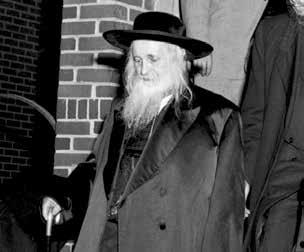
In this tribute, it is suggested that we can see a tiny vignette of the Satmar Rebbe from an as-yet un-mined and untapped source. The source is one whose existence is not so well known — his oeuvre of responsa.
The two volumes of the Satmar Rebbe’s responsa were compiled by Rabbi Ephraim Yoseph Dov Ashkenazi and were printed twice. The first edition was printed in 1982; the second, sixteen years later in 1998. Both were printed at the Printing House of Rabbi Sender Deutsch in Brooklyn. But let us get back to the content of his writings and the insights.
A brief example: Insight can be gained into this extraordinary giant from a mere few words hidden in responsa #31 of his halachic writings.
It is an answer to someone who is bitter because of his own sins. The Rebbe first tells him how to lift himself out of the abyss but he also tells him how not to give up. What follows is an exact translation.
“For one that does not believe that the Holy One forgives those who have angered him, even if they have angered him without limit, recites a bracha l’vatalah every day, chas v’shalom. ‘Chanun HaMarbeh lisloach,’ Gracious is He who forgives exceptionally. For the Creator forgives without limit. Our sages have already discussed the greatness of a Baal Teshuvah — for where they stand even the greatest of people do not stand.”
They are a few simple words. But they inspire and build.
It is well known that the Satmar Rebbe built an extraordinary community. He built a community that gave the world Hatzalah, outstanding Bikur Cholim, kimpatoriums and much more. For Covid patients in Mount
Sinai Hospital, it was Satmar Bikur Cholim, among others, that led the way.
All of these accomplishments and his genuine ahavas Yisroel-imbued interactions with individuals and their vivid personal recollections tend to obscure another aspect of this extraordinary man.
They obscure the fact that the Satmar Rebbe, zt”l, was a giant of a talmid chochom with deep insight and chiddushim on every corner and facet of Torah. There are thirty-three teshuvos in the Orech Chaim section of his responsa. We will review them along a few others in the other sections as well.
Netilas Yadayim
The Orech Chaim section begins with the heart-rending question (OC #1) of “May saliva be used for the ritual washing of hands in the morning?” It is a Holocaust-era question that speaks volumes not only of Jewish deprivation and suffering, but of Jewish dedication and idealism in their all-encompassing commitment to fulfill halacha.
His response to Rav Chaim Elazar of Munkatch, of course, was that it may not be used, the halachic status of saliva being something unclean, in and of, itself.
In a letter to Rav Yitzchok Isaac Lieberman of Chicago, dated Tuesday, January 1, 1952 (Parshas VaYigash 5712), the Rebbe advised left-handed people to try to fulfill the opinion of the Arizal that they should also wear
their tefillin on the left hand, but to do so at home and without a bracha (OC responsa #2).
The Rebbe also dealt with (OC #3) the halachos of a weakened right arm that got better and the person still showed a preference to use his left hand— did the person now become a left-handed person in terms of tefillin? His response to Rav Simcha Bunim Sofer of Yerushalayim on Tuesday, March 22, 1955 (Parshas VaYikra 5715) differentiated between whether he now uses his left hand because he became used to it (which would be a halachic debate) or because his original right hand is weaker (in which case he has become a de facto lefty).
The Rebbe also addressed (OC #4) the halachic status of the newly unearthed commentary of the Meiri which was found in an Italian monastery in 1948 in a letter to Rav Yoseph Scheinberger of Yerushalayim. He cites the responsa of the Chasam Sopher (Vol. VI CM #61) that one should not learn any sefer that does not contain haskamos — approbations of the greatest of the leading rabbis, and not just any approbations. He discusses how his grandfather, the Yetiv Laiv, gave a haskama to a great talmid chochom, only to discover to his chagrin that the work contained heresy. He withdrew the haskama.
[This position regarding new Seforim was the same one taken by the Chazon Ish, although neither referred to the other in their responses to the new Meiri.]
In Responsa #5, written to his student Rav Avrohom Yitzchok Kahn of Yerushalayim, he deals with a number of issues, including that his grandfather the Yetiv Lev’s custom in tefillin regarding Stumos and Psuchos (the indents) was like the opinion of the TaZ (OC 32:26) and not like the Rambam. He found this out after he inherited the tefillin of his grandfather and they were opened. He also deals with when the War of Gog and Magog will take place, before Mashiach arrives or after. He brought many proofs that it will be after and the arrival of Eliyahu may be before, but it is unclear.
The Satmar Rebbe also addresses the fact that he was uncomfortable taking payments from the Germans — but never told others not to do so, because he was not entirely clear on the issue. He discusses the nusach of the Shabbos zemer “L’saadah b’hada” or “b’hadei ” — concluding that on Friday night b’hada should be said while on Shabbos day it should be b’hadei.
In Responsa #6 to Rabbi Akiva Blau of Kehilas Krasnow, the Satmar Rebbe discusses whether an old pair of beloved tefillin can be restored by writing over the letters or is it a problem of shelo k’sidran — that the parshios would not have been written in consecutive order. It is a long analysis and he concludes that it may only be done if the parshios were at least minimally kosher.
In Responsa #7 to Rav Shlomo Boruch Prager, the Satmar Rebbe deals with a case of a Sefer Torah that fell, but it is unclear whether any part of it had touched the ground or whether it was saved adequately during the fall. He concludes, after a long analysis, that a doubt regarding a sin is often worse than a sin itself and advises that the Kehillah adopt certain measures.
In Responsa #8 written to Rav Michoel Eliezer Lipman Perslager, a student of the Avnei Nezer, he deals with an elderly person who can no longer walk to a distant shul and the only shul within walking distance is one where the majority of its minyan are Shabbos violators. The Satmar Rebbe recommends that he daven at home.
In Responsa #9 to Rav Shalom Yechezkel Shraga Hash, the Satmar Rebbe deals with the issue of the Torah readings during the beginning of Nissan and whether it is proper to initiate the reading of the Nesiim prior to Mussaf. He concludes that it should not be done in this manner.
In Responsa #10 to Rav Chananya Yomtov Deutsch, the former Av Beis Din of the town of Helmitz, the Satmar Rebbe discusses the status of low mechitzos even among the Orthodox in America. He discusses his amazement at Rav Moshe Feinstein zt”l’s position that the purpose of a mechitzah is to prevent mixing and not to prevent histaklus — glancing. He cites a number of proofs that clearly state that the purpose is to prevent histaklus.
In Responsa #11, also to Rav Deutsch, he discusses a halachic argument he had with Rav Elya Meir Bloch, the Telze Rosh Yeshiva, zt”l, concerning the Satmar Rav’s opinion that adding onto Binyan on Shabbos is a biblical prohibition regarding mechitzos. He also rules that television is certainly to be considered avodah zarah and gilui arayos, non-kosher and apikorsus
Wine and Brachos
In Responsa #12, the Satmar Rebbe discusses with Rav Yonasan Shteif, zt”l, a distinction between making wine from small raisins versus larger raisins. He questions whether it is permissible with the smaller raisins on account of the fact that the blessing may not be HaGafen according to a number of Achronim.
In Responsa #13 to Rav Levi Yitzchok Gavo, the Av Beis Din of Arugas HaBosem in Brooklyn, he discusses in a very long responsa that the Borei Nefashos can serve as a general Bracha Achronah when there are some other doubts. [It is interesting to note that Rav Moshe Feinstein, zt”l, held to a similar position and was attacked for it in the Me’aneh l’Igros.]
In Responsa #14, the Rebbe discusses with the rav in Montevideo, Uruguay, Rav Asher Shmuel Katz, a
forthcoming Chanukas HaBayis of a shul and rules that regarding whether to recite a Shehecheyanu or a Boruch HaTov v’hamaitiv that they should take a new fruit and recite the Shehecheyanu on that, having the building in mind. [Rav Chaim Kanievsky advises the same in his sefer on Hilchos HaMikdash.]
Shabbos
In Responsa #15 to Rav Moshe Dovid Teitelbaum, he deals with whether there is a mitzvah of honoring Shabbos or any other mitzvah in placing a date upon a letter. The Satmar Rav explores the issue extensively and concludes that there is not even a hint of such a mitzvah.
In Responsa #16 to Rav Moshe Yisroel Feldman, he discusses whether there is an issue of yaharog ve’al yaavor, giving up one’s life, when there is a governmental decree that the stores must be open on the Shabbos. He ruled that it is only applicable when they are doing it for the purpose of religion but when not on account of an anti-religious decree (but an economic one) it is not yaharog ve’al yaavor
In Responsa #20 to Rav Shlomo Yitzchok Levin, the Rebbe answers an attack on a question that his father had posed regarding why the resting of a man’s child on Shabbos (Shvisas Bno) shouldn’t be derived from the verse demanding the rest of a man’s servant and animal on the Shabbos. He cites proof from a responsa of the Rashba that the question is indeed quite valid.
In Responsa #21, he deals extensively with the question of whether an invalid height of a mechitzah will invalidate a Tzuras HaPesach in an eiruv. He ruled that it does.
In Responsa #22, the Satmar Rebbe deals extensively with city eiruvs where the Tzuras HaPesach is more than four tefachim away from the walls of the city’s eiruv. He ruled that it is problematic.
In Responsa #23, he deals at length with an attack from Rabbi Naftoli Tzvi Brach on his interpretation of Omed Merubah al haparutz regarding mechitzos, particularly as to whether the Magen Avrohom is in conflict with a Maharit.
In Responsa #24, he writes that he was not too sharp against Rabbi Brach but if he was — he apologizes for his tone. He discusses another aspect of the issue in that responsa.
In Responsa #25, the Satmar Rebbe deals with why, regarding the obligation of v’higadeta l’bincha on Pesach, the Rambam didn’t list as a separate mitzvah the obligation to mention the exodus from Egypt each night? He answers that the obligation is from the same root and the main mitzvah recited and explained on Pesach just needs to be reviewed in the regular nights.
In Responsa #1,7 the Rebbe discusses his position that a lock and key cannot address the issues of Shehiya — leaving non-fully cooked food on an uncovered flame before Shabbos begins. [The Satmar Rebbe’s position here disagrees with that of Rav Moshe Feinstein (IM OC IV #74 Bishul 22,23,35) and that of Rav Shlomo Zalman Auerbach SSK 1:71 and Rav Vosner in Shaivet HaLevi 1:91 “U’b’Emes.” It agrees with the Chazon Ish cited by Rav Moshe Shternbuch in Teshuvos V’Hanhagos OC I #207:8 and the position of Rav Elyashiv cited in Meor HaShabbos IV p. 149.]
In Responsa #18, the Satmar Rebbe re-establishes his position that the halacha regarding when Shabbos ends and begins is like the majority of the Rishonim and the Shulchan Aruch that held of the two Shkiyas theory (like Rabbeinu Tam). Nonetheless, he writes that it is worthy to be concerned for the view of the Gaonim that sunset is the time.
In Responsa #19, the Satmar Rebbe deals with whether an item that is for sale can be used by the storeowner himself on Shabbos or whether it would be considered muktzah. He rules that he may do so if it is for the destined use of the item — i.e., if the item is shoes, then it would be permissible to wear the shoes. He rules that they may not be used for a different purpose.
In Responsa #26, the Satmar Rebbe writes to Rabbi Yeshaya Asher Zelig Margolios regarding the date of his grandson’s wedding that the minhag in Satmar is not to get a haircut until Erev Shavuos and certainly not to conduct a wedding. He also discusses a solution to the problem of the Rambam’s view of a chuppah when the woman is in a state of impurity — that merely informing the groom of her status negates the Rambam’s animadversions. [This is a revolutionary position]
In Responsa #27 in a letter to Rav Menachem Paam in Eretz Yisroel, he writes that the custom is to hold the upsherin in Meron on Lag Ba’Omer and that he should uphold this custom.
In Responsa #28, he tells the congregation in Margareten that they may indeed retain their Chazan, Reb Yechiel, for Shabbos, yom tov and the yomim noraim even though he is a mourner. His reasoning was that since there is no one better than him, the halacha permits it. [This is a revolutionary view. The love of the Satmar Rebbe in this responsa is readily apparent.]
In Responsa #29, he writes to Rav Meyer Gavo in Toronto not to worry about being too ill this year to blow shofar and that Hashem counts the desire to fulfill the mitzvah as if he did it. He differentiates this situation with that of wanting to be in a sukkah and it is raining because that is not in the norm of the weather patterns in Eretz Yisroel, but illness due to the infirmities of age
Those unattuned to the underlying halachic difficulties that he is addressing between the lines will not fully appreciate the beauty of his remarkable intellect and pen.
are quite normal. He blesses him with a complete recovery. [The love of the Satmar Rebbe in this responsa too is readily apparent.]
In Responsa #30, he recommends to Rav Avrohom Yitzchok HaKohain against excessive fasting for sins and suggests that charity be given instead. As far as an amount — he suggests that it should be equal to the tzaar of a fast to that individual.
In Responsa #31, he advises someone who sinned terribly how to go about making things right. In explaining the element of “azivas ha’chait — no longer doing the sin,” he advises the repentant sinner to make personal fences and boundaries. As far as expressing regret, he advises him to do so in a heartfelt manner each day privately with Hashem, but to do so for a brief time and the rest of the day to serve Hashem with joy and hope that Hashem will certainly help him. Thirdly, he advises him to engage in more Torah study, tefillah and charity as much as he can and to do so with a sense of humility. He then offers additional encouragement.
In Responsa #32 to Rav Yuda Krauss, he explains the parameters of eating on Yom Kippur for an ill person. If there is any doubt whatsoever as to whether it could endanger life, then one should eat. He did explain that care should be taken to ensure that the doctor is not saying these things because he wishes to undermine religious observance. Therefore, he advises that care must be taken to research a reliable doctor.
In Responsa #33, he disagrees with the suggestion

of the Maharam Shick (on Taryag Mitzvos 605:2) that in a Jewish leap year one should try to fulfill the mtzvah of remembering Amalek in Parshas Ki Seitzei so that 12 months do not pass without this mitzvah.
In Responsa #157, he provides a remarkable explanation in the complex area of Hilchos Shabbos. There is a difficult Rosh that has eluded all the commentaries on the notion of Psik Raisha Delo Nicha Lay regarding other prohibitions other than the prohibition of Shabbos. The Satmar Rebbe’s reading resolved all the problems completely.
In CM #98, the Satmar Rav discusses his opinion on the notion of relying on lone opinions in times of difficulty (Daas Yachid BeShaas HaDeChak). It is a controversial area of halacha. Some take the idea at face value. The Chazon Ish ruled that the concept is true only when the bottom line halacha was like that sole opinion and it was rejected out of a stringency, but not because the underlying was rejected. The Satmar Rebbe took a middle ground — it is a halacha that is true that during times of difficulty we rely on lone opinions, but the step may only be taken by the leaders of the generation. The logic of his position is remarkable. Those unattuned to the underlying halachic difficulties that he is addressing between the lines will not fully appreciate the beauty of his remarkable intellect and pen.
Of course, there were hard line positions that he had taken that were not understood by others. But no matter where anyone stands, and by any yardstick, the Satmar Rebbe was a tzaddik gammur and a Gadol HaDor.

In conclusion, what we had in the Satmar Rebbe, zt”l, was a remarkable individual with the charisma to rebuild a nation. He combined his love for others with the vast knowledge of the depth and breadth of the entirety of Torah.
Chaval al de’avdin.
The author can be reached at yairhoffman2@gmail.com. It is requested that family members of the recipients of these responsa reach out to the author to fill in biographical details of these responsa.

Based on a story told over by
Rabbi Yehoshua Sova Prepared for print by Daniel AgalarIn the tranquil town of Lakewood, New Jersey, my parents resided with my sister and brother-in-law, who occupied the basement of their home. One particular day, as the sun began to set and darkness draped the surroundings, an unusual sound echoed through the air—a persistent knocking on the windowpane. To their surprise, it was a woodpecker relentlessly pecking at the glass. This behavior was highly uncommon, as woodpeckers typically seek tree trunks for their rhythmic drilling. Night after night, the enigmatic visitation continued, leaving my family bewildered and intrigued.

Coincidentally, my parents had planned a trip to the holy land of Eretz Yisroel, and upon sharing their unusual experience with a concerned friend, they were advised to seek counsel from the renowned sage, Rav Chaim Kanievsky. With great anticipation, my parents secured a Sunday morning appointment with the revered rabbi.
As the appointed day arrived, my parents sat before Rav Chaim, eagerly awaiting his wisdom and guidance. They poured out their hearts, presenting their questions, concerns, and, of course, mentioning the perplexing bird that had become an unexpected visitor to their home. Rav Chaim, known for his deep insight and ability to perceive beyond the mundane, pondered for a brief moment. Then, he asked a striking question, “Has anyone who owed you money recently passed away?” Instantly, my father’s memory was triggered, recalling an individual who had stubbornly refused to repay a debt, only to meet his demise shortly thereafter.
With profound clarity, Rav Chaim revealed that the
persistent woodpecker was no ordinary bird. It was, in fact, a gilgul, a soul in transmigration seeking resolution. The sage explained that if my father were to extend forgiveness and release the person from the debt in his heart, the soul would find its solace and the bird’s visitations would cease. Inspired by Rav Chaim’s words, my
ished. The relentless pecking that had persisted for so many nights had abruptly ceased. It was a remarkable and profound moment, a testament to the sage’s spiritual insight and the power of forgiveness.
The impact of this experience reverberated throughout our family. We marveled at the wisdom of Rav Chaim, a true gadol b’Yisroel, a towering figure who not only possessed vast Torah knowledge but also exhibited unparalleled sensitivity to the spiritual world. His profound understanding and ability to guide souls, even through the medium of a woodpecker, left an indelible mark on our hearts.
In the aftermath of this extraordinary encounter, we cherished our encounter with Rav Chaim, recognizing him as not only a Torah giant but also as an exemplar of righteousness and compassion. Even though he has passed away, his wisdom and teachings continue to inspire us and serve as a guiding light for the entire klal Yisroel, reinforcing the eternal values of forgiveness, understanding, and spiritual connectedness.
father graciously chose to grant forgiveness, freeing the departed soul from any lingering obligations.
The very next morning, my sister called my mother, her voice brimming with excitement. Before my mother had a chance to share the enlightening encounter with Rav Chaim, my sister exclaimed that the bird had van-
Daniel Agalar is the founder of Stories to Inspire, an organization dedicated to sharing curated inspirational stories from renowned rabbanim. With a widely popular podcast that has surpassed 4 million downloads, Daniel’s passion for spreading positivity shines through. Join the daily WhatsApp broadcast by messaging 310-210-1205 or explore over 4,300 stories on his website at www.storiestoinspire.org. The stories can also be accessed on the hotline at 718-400-7145.
The sage explained that if my father were to extend forgiveness and release the person from the debt in his heart, the soul would find its solace and the bird’s visitations would cease.
 By Hershel Lieber
By Hershel Lieber

Our annual trip to Poland for the Yomim Noraim where I am the shliach tzibbur at Warsaw’s Nozyk Shul on occasion included a side trip to another European destination. In 2010, we opted to go to Northern Italy. Even though we would only have five days before erev Yom Kippur to travel, we felt it was doable. We had been to Venice for one day in 1999 and had taken in some of its marvelous sights, yet we felt that we should return again for at least two days. Florence and nearby Pisa also deserved two days of touring. Milan
would suffice with one day’s worth of sightseeing.
We were up at 5 a.m. on Sunday morning and departed Warsaw, arriving in Milan by 10 a.m. We checked into a small hotel and took the metro to Piazza del Duomo in the center of the city. The large square faces the city’s main cathedral, which is Italy’s largest church. We had no plans to visit that site but were amazed by another sight that caught our attention in front of this famous Catholic house of worship. There were literally thousands of tourists and probably many parishioners milling in front of that edifice. In the middle of that massive crowd, we met three Chabad bachurim who were approaching people and offering them an opportunity to put on tefillin. They were somehow able to discern who was Jewish and give them the chance to perform this mitzvah. The location for performing this mitzvah was clearly bizarre, but the dedication to their Rebbe’s outreach activities was a sign of intense loyalty to their fellow Jews.
There were not so many sights to see in Milan other than churches. We went to see the medieval fortress called Castello Sforzesco which houses many art museums and beautiful outer gardens. We strolled through the Gallerie Victor Emanuel, browsing the shop windows featuring famous Italian designer clothing. Amongst
them was a store that one would only expect in Boro Park or Lakewood – a Borsalino hat shop. We also took a tour of the over-two-hundred-year-old La Scala Opera House, the world’s most famous theater for opera and ballet. The greatest artists in the world of song and dance have performed in this building.
Towards the late afternoon, we made our way to the Sephardic Noam Synagogue where we were able to shlug kaporos amongst dozens of men, women and children who came to observe this minhag. Then we went to Chabad to daven where I met Rav Moshe Lazar, the father of Rabbi Beryl of Russia and Rabbi Menachem of Rome (both whom I met in subsequent years). After Mincha/Maariv, Rav Moshe drove us to the Carmel Restaurant, where we enjoyed a delicious Italian milchig dinner. Later, we took the Metro back to the hotel. It was truly a full but rewarding day.
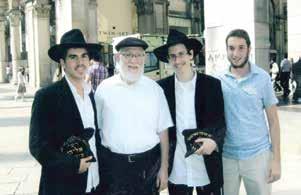
The next morning, we took the express train to Firenze, better known as Florence. Our old-fashioned hotel was on the residential side of the Arno River where our window opened up to a luscious garden laden with greenery. After a quick lunch, we took a local bus to the center of the city. Florence, as capital of Italy’s Tuscany region, has a long history dating from the Roman Em-

pire. What is unique to this city is that it was the birthplace of the Italian Renaissance and was one of Europe’s most politically, economically, and culturally important cities from the 14th through the 16th centuries. The city does not have the charm of Venice nor the antiquity of Rome, but it has some of the world’s greatest art treasures ensconced in its world-famous museums. Both Pesi and I enjoy art museums, and we dedicated a number of hours to viewing the treasures of the Uffizi and Academia Galleries. Both have great collections of world master artists and sculpturers like Da Vinci, Michelangelo, and Botticelli. Nevertheless, the preponderance of religious art of the Middle Ages made us feel somewhat uncomfortable, and we tried to avoid viewing those sections.
The highlight of our visit to Firenze was visiting the Great Synagogue of Florence. It is the largest synagogue in


South-Central Europe and is over 150 years old. Both the exterior and interior integrate Italian and Moorish elements of architecture and design. Every square

this was the only attraction that we saw in Pisa, it was well worth the trip. We read about the Tower and how it started tilting. The fifteen-foot incline which kept
inch of the interior is covered with colored designs and patterns. It is truly an awe-inspiring sight!
Another highlight was the side trip we took to Pisa. The Leaning Tower of Pisa is a world-known phenomenon. Although


on shifting was reinforced between 19902001 to stop the Tower from falling over. We did not take the thirty-minute climb to the top but spent a good hour relishing this marvel and taking photos from every angle.
Our next two days were spent in Venice. The city is built on over one hundred islands, and its streets are a combination of narrow pedestrian walkways, bridges, and canals. The city’s history is over 2,000 years old and is absolutely fascinating. There is no way that I will attempt to encapsulate any portion of this chronicle in this article. Jewish history there is also hundreds of years old but is mostly associated with the world’s first usage of the term “ghetto,” which was established in Venice in 1516. The most famous buildings within the Ghetto are the five synagogues which were established by Jews from different ethnic identities and still exist to this very day. They are masterpieces of design and decoration besides their historic ramifications. Although very few Jews live in the Ghetto, it is the center of Jewish activity, synagogues, and kosher restaurants, and the focus of tourist interest.

Florence does not have the charm of Venice nor the antiquity of Rome, but it has some of the world’s greatest art treasures ensconced in its world-famous museums.Near the Grand Canal of Venice Shlugging kapparos in Milan The German Shul in Venice
On Wednesday morning, we boarded the Euro rail to Venice and arrived before noon. We checked into the Hotel Ghetto, which was a Jewish-owned establishment providing a kosher breakfast and a restaurant on its premises. We had not eaten all morning, so we bought some pizza and soda and sat down under a shady tree in the Ghetto Square to relieve our hunger pangs. After being satiated, we started a self-guided walking tour of the historical center of this charismatic city.
We passed by dozens of canals, walked over countless bridges, squeezed through alleyways bedecked with hanging flowers from boxes resting on windowsills, rested under a shady umbrella with cold drinks in charming piazzas, and kept on walking and walking for over six hours. We finally returned to our hotel, and I davened at Chabad, and then we ate dinner at the Le Balthazar restaurant in our hotel.
Our last day started with davening at Chabad, and after breakfast, we went

out to say Tashlich at a nearby canal. I imagined Jews of the Ghetto following this custom at this very canal. Since this tradition was not accepted by Jews from Spain and Portugal, which made up a segment of the original community, my assumption may be wrong.
We were running late and had scheduled a historical walking tour which was leaving at 11:15 a.m. We ran for a half an hour through the streets to catch up to the group that had left on time. We arrived 15 minutes late but thankfully found our group in the midst of thousands of tourists in Piazza San Marco. The tour was great as it filled in many gaps of the city’s interesting history. Venice was a City State, a maritime empire, a major commercial center, balancing power between the Byzantine Empire and the Holy Roman Empire, between European kingdoms and the Ottoman Empire. Again, I will defer to historians to relate the saga of the Venetians. We stopped to view many important buildings and discreetly disappeared when the group entered a church. The tour took two hours, and it gave us an insight and understanding that enhanced our appreciation of this great city.
After the tour, we trekked back to the Ghetto stopping at the Rialto Bridge with its many shops. We then ate dinner

outdoors at the Gam-Gam restaurant, relaxing at the side of the canal. Our gelato dessert we enjoyed at the square near our hotel before checking out. We then took a train to Milano and stayed overnight in a hotel near the airport.
Our demeanor changed immediately next morning. It was Friday, erev Yom Kippur, and we needed the Ribbono Shel Olam to grant us forgiveness and inscribe us in the Book of Life. I was returning to Warsaw to daven on behalf of the kehilla, Pesi, my family and myself. It was a wonderful trip, but it was time to get back to reality.
Hershel Lieber has been involved in kiruv activities for over 30 years. As a founding member of the Vaad L’Hatzolas Nidchei Yisroel he has traveled with his wife, Pesi, to the Soviet Union during the harsh years of the Communist regimes to advance Yiddishkeit. He has spearheaded a yeshiva in the city of Kishinev that had 12 successful years with many students making Torah their way of life. In Poland, he lectured in the summers at the Ronald S. Lauder Foundation camp for nearly 30 years. He still travels to Warsaw every year – since 1979 – to be the chazzan for Rosh Hashana and Yom Kippur for the Jews there. Together with Pesi, he organized and led trips to Europe on behalf of Gateways and Aish Hatorah for college students finding their paths to Jewish identity. His passion for travel has taken them to many interesting places and afforded them unique experiences. Their open home gave them opportunities to meet and develop relationships with a variety of people. Hershel’s column will appear in The Jewish Home on a bi-weekly basis.

Over fifty years ago, when my husband and I were a young couple starting out, we were caught planning aliyah in the years between the Six Day and Yom Kippur Wars in Israel.
Growing up in Holocaust survivor homes – me from Poland and Bob from Hungary – we were uniquely precious to our parents and families. This always impacted our ability to make the big choices about where to go to school, live as a married couple, and carve out independence from our parents’ lives.
There was always this invisible but strong string that attached us to our families. Plus there was an under the surface “guilt” that came along with being an only child for Bob. My own attachment to my family, to this day, is not so clear.
Caught in the middle of the excitement of wanting to build dreams and the spirit of Zionism, we planned our aliyah to Israel; we would finish school, both of us teachers, and go! We were clear that Israel was the place to raise our family and live our lives.
That did not happen, so we put away our dreams for another day.
When we come to Israel in the summer, we walk the streets, eat the food, and hang out with our friends and family. We rarely leave Jerusalem and are very happy to do nothing but breathe the air and see the mountains right outside our windows. We walk everywhere, no car and no cabs, unless our son-in-law Josh, always willing and with a smile, provides us with a ride.
This summer, we have the bonus of our Canadian children vacationing in Israel. Their spirit of adventure, no interest in sleep or just hanging around encourages us to join them on their daily excursions. This has prompted us to “get up and go!”
After two days of nonstop bus and car trips north, we are back in Jerusalem with too much to reflect upon in one essay. Plus, there are so many snapshots, images, and stories to process; I need time to do them justice before commenting. The trips were exhausting, exhilarating. and despite over 50 years of visiting this magnificent land, eye-opening.
A former colleague and dear friend, Rabbi Dr. David Hertzberg, the newly appointed director of the newly created Yeshivah of Flatbush William S. Levine Family Shoah Institute, invited us to join his group on an over three-hour barebones bus trip (not fancy and no bathroom) to the Golan. Once there, we were meeting with Brigadier General Avigdor Kalahani, hero of the “Valley of the Tears Battle” that took place during the Yom Kippur War in 1973. He is credited with single-handedly defeating and destroying a Syrian tank battalion and, in doing so, securing a crucial Israeli position.
The trip to the Golan was long, grueling, and filled with miles of open land-
Soon, a casually dressed, swarthy, bald man with a mouthful of gorgeous white teeth bids us to stand and move to a large, almost shady clearing. My M&M hat, bought for the occasion, was quickly plopped onto my head.
“My name is Avigdor, and I am here to tell you my story. I used to be very handsome. I am still handsome, no? I was tank commander on this very mountain during the Yom Kippur War in 1973.”
Despite the burning sun, we sat riveted listening to his story, a story of danger, fear, bravery, death and courage. We felt every bullet and held our breath over every military maneuver and decision. As Avigdor spoke, other groups drifted towards our
It is easy to take for granted this magnificent place we call home. We must never become complacent and let our guard down; recent anti-Israel and antisemitic acts of hate serve to remind us of who we are and what has to be done.
We must continue to send busloads of teens to Israel in order to cement the connection. Last night, we joined a group of Machach Ba’aretz teens celebrating their week in the wild or in culture during a culminating activity in Kfar Saba , a beautiful town. Our Canadian grandson and teens from HANC, HALB, HAFTR, across the United States and abroad are part of this group.
There was a rumor that the famous Israeli singer Ishai Ribo would be performing. He did it for our intimate crowd of about 500 people.
scape. There was not much to see so we had fun catching up with David and hearing stories of great rabbinical leaders and the intricacies of the battles that were fought in various wars; it was all so very interesting to identify the personality and character traits of great leaders.
Secular and religious leaders have so many overlapping characteristics and vision for the big picture.
We get off the bus stiff-legged, hot, and cranky to be greeted by a panoramic view of mountains and Syria. There are some abandoned tanks and loads of Israeli young campers picnicking. We look for a shady spot out of the hot (very hot) baking sun to wait. My friend and I look at each other and wonder, “Why did we shlep all this way, and for what?”
small group. A visiting group of military personnel from Ghana, Fiji and the Bahamas stood behind our group, standing in rapt military attention.
When the talk was over, not a dry eye in the group, the soldiers tentatively and respectfully approached Avigdor, telling him in hushed tones of their admiration of his bravery, leadership, and humility. Soon all swarmed him for pictures and permission to shake his hand.

Avigdor wrote a book, The Heights of Courage; it tells his story. Everyone got an autographed copy. I plan to read it when I get back to remind me about what happened and what it takes to be a great leader.
Thank you, David Hertzberg, for making it possible for us to be a part of this awesome experience.
As we waited for a glimpse of our grandson Ezra, we watched as streams of teens got off the 11 buses. The future – these kids and others like them – represent the preservation of Israel that the selfless heroes like Brigadier General Avigdor Kalahni, a simple Yemenite little boy who grew up to be one of the top three war heroes in Israel.
Maybe one of my thousands of students will be that someone someday. All I know is that despite the shlep, I witnessed greatness that day on the mountain in the Golan.
Fifty years later, we are again planning.
Mrs. Barbara Deutsch is currently the associate principal at HANC 609 and a longtime reflective educator, parent, grandparent, and new great-grandparent. Even after all these years, she still loves what she does and looks forward to working with kids every single day.
The future – these kids and others like them –represent the preservation of Israel that the selfless heroes like Brigadier General Avigdor Kalahni, a simple Yemenite little boy who grew up to be one of the top three war heroes in Israel.General Kahalani, still inspiring soldiers everywhere at 80 years old
Ifyou grew up before YouTube and Instagram and WhatsApp statuses, chances are you listened to your Jewish music on a CD or a DVD or even a cassette recorder. And chances are your go-to favorite singers and choirs were all male. Back then, everybody was singing along with MBD or MBC or Avremele because there really were no other options for women.
Fast forward to our current music scene, and wow – times have really changed. The industry has literally exploded with energetic and talented singers, refreshing and creative songs, sophisticated musical arrangements, and – incredibly – a wide range of super-talented female artists and performers who are achieving remarkable recognition and success.
Shaindel Antelis is one of those popular female vocalists who is well known in the industry. She spoke to us about her career, the evolution of Jewish music for women, and her advice to talented young girls who are considering a career in this field.
For Shaindel, joining the music industry was pretty much a no-brainer. She grew up in Brooklyn in what she describes as a very musical family. “We had a studio in our home,” Shaindel says, “so there was always lots of singing and drumming and choirs. People were constantly coming to our house to record their music.”
Growing up, Shaindel remembers just a handful of popular female vocalists in the industry.
“Back in the ‘90s, there was Kineret and maybe one or two others that I knew of,” she recalled. “I loved their music, but
 By Malky Lowinger
By Malky Lowinger
it didn’t seem possible for more women to break into the field at the time.”
Things began to change when Shaindel went to seminary in Israel. She participated in a singing competition and performed at weekly open mic nights for women which didn’t exist in America at the time. While in Israel, she also wrote hundreds of songs filled with inspiration which she got from her classes and the holiness that surrounded her.
Suddenly, it seemed like it was possible to be a gifted female singer and share your
Times have certainly changed. Today, women’s music is super popular. Concerts are sold out within days as are productions and plays, and the energy level at these events is off the charts. Women’s DVDs are placed front and center at seforim stores and are selling briskly. Ladies-only videos are accumulating tens of thousands of views on social media. The field has literally exploded. And that’s a good thing, says Shaindel.
“I think it was actually the pandemic that triggered the massive popularity that
this issue. Most frum women performers seek halachic guidance from a rav or personal posek.
It’s not simple, says Shaindel who is passionate about bringing her message of chizuk and inspiration to her listeners while maintaining proper halachic guidelines. She knows that a presence on social platforms can bring tremendous exposure, but she is also careful about it. She discussed it with her rav, and together they worked out a solution that allows her to inspire others while maintaining her standards.
“It was hard,” she remembers. “Many people were very supportive, but some of my listeners were critical of me. When I started out, there were no Orthodox women’s music videos on YouTube and my account was private, which means it was hard to find my videos. I remember one woman telling me that if I’m on YouTube I must have a big yetzer hara. That really hurt.”
While Shaindel is careful to follow halacha, she is also a bit of a free spirit. She describes herself as a colorful person.
message with the world. Shaindel optimistically began to hone her own talent.
“I released my first CD when I was about twenty years old,” she remembers.
But it was an uphill battle.
“At first, Jewish music distributors told me that women’s music doesn’t sell. They weren’t interested in carrying my CDs. A few years later, after getting lots of requests for my CDs, they agreed to distribute them, but they were being placed on the bottom shelf in the back of the store.”
we are seeing today,” says Shaindel. “That’s when the women’s music industry really blew up. There were so many months of lockdown, and women were looking for kosher entertainment. Parents wanted their daughters to listen to appropriate, quality content, and female singers and musicians were happy to fill the void.”
There were, and still are, challenges. Frum female artists need to present their content within the boundaries of tznius and modesty, and many struggle with
“I love flowers and color,” she shares. “Hashem made gardens and a beautiful blue sky, and we should enjoy it. When I wear a colorful outfit, I feel happier.”
The burgeoning field of women’s music has spawned a new generation of talented young girls who are hoping to join the industry. Shaindel cautions them to be patient and to wait until they develop their personal style before jumping into the business.
“It’s just not healthy to put yourself
“The truth is that everyone struggles with something, but a lot of people just don’t talk about it. When they listen to my music, they feel validated. I try to explain to them that you’re good enough.”
out there when you’re not ready for it,” she says. “Wait until you can handle it. When you’re a bit older and more mature, you know who you are and then the fame won’t get to your head.”
But that doesn’t mean they shouldn’t develop their talents. Shaindel encourages young girls to go for it. She offers practical advice.
“Record one song in a professional studio and send it to family and friends,” she suggests. “It’s an opportunity to share your voice while also inviting constructive feedback from the people you trust.”
Shaindel also recommends learning a musical instrument, specifically the guitar.
“If you want to compose songs, it’s super helpful if you can accompany yourself on the guitar. Learning the basic chords is easy, and it will help you tremendously when you write music.”

Music may seem like a glamorous industry, and sharing your message is very rewarding. But Shaindel cautions aspiring young talent that the road can be bumpy at times. “Yes, you can be frum and talented, and you can spread your message,” she says. “But you also need to develop a thick skin. There are plenty of disappointments and frustrations, and lots of doors that close in your face.”
She advises ambitious young women to stay focused despite the frustrations. “Don’t torture yourself every time you get criticized,” she recommends. “Don’t fret over every little mistake.”
Shaindel herself has performed in countless different venues. She’s been featured at kiruv concerts, Pesach programs, fundraising events, and all types of parties for women. She especially enjoys performing in schools where she can share her own vulnerabilities with students.
“When I share my own struggle with self-esteem and being bullied growing
up, girls actually start to cry because they identify with it,” she says. “The truth is that everyone struggles with something, but a lot of people just don’t talk about it. When they listen to my music, they feel validated. I try to explain to them that you’re good enough.”
Shaindel estimates that she’s written about 400 to 500 songs.
“It’s all from Hashem,” she quickly adds. “Hashem puts the music into my head.”
She likes to keep a voice recorder nearby to capture the moment of inspiration before it floats away.
There’s a powerful positivity to Shaindel’s music, even in the songs that are contemplative and thoughtful, and with her strong yet elegant voice, she expresses a wide range of emotions. Her recording of Uri Davidi’s “Jump” together with Mayan Davis is fun, energetic, and fast-paced, while her “All Around The World” is an expression of her deep love for Eretz Yisroel. “Invisible” is deeply introspective about bullying and loneliness; youngsters will surely recognize that feeling of being overlooked and unappreciated in social settings. And the recently recorded “It’s All From You,” written and released by Thank You Hashem, reflects her personal affirmation that Ain Od Milvado, it’s all from Hashem.
“My topics are happiness, connecting to Hashem, getting through the hard times, and not comparing ourselves to others, just to name a few,” Shaindel explains.

In that vein, Shaindel likes to share her personal story, and perhaps that’s why she’s beloved by her many fans. She has turned down offers to work in the secular music industry so she could remain religious and keep the halachos of kol isha. She got married after dating for many years and advises single women to remain optimistic. “I got married at thirty,” she says, “to an amazing guy, and I
want people to know that just because you are in your late twenties or thirties or any other age, that doesn’t mean you have to give up on your dreams.” Still, it’s important to keep busy while you’re single, she asserts. “I was pursuing my music and doing kiruv during that time so it wasn’t as torturous for me as it can be for some people.”
Now Shaindel lives in the Five Towns and has a baby, baruch Hashem, which changes things considerably. “I used to be out late at night, and I would travel a lot,” she says. “Now I can’t do that as much. My priorities have changed. I love performing and I still do, but I have to balance it with
my role as a wife and a mother.”
Ultimately, her primary mission is to share her music, to inspire people, and to give them chizuk.
“I want to touch people with my music,” she imparts. “That’s why I focus my songs on real life. So many people are in pain, now more than ever. I share my stories with them, I connect with them, and I give them the hope and confidence to face the future. That’s ultimately my goal with my music.”
Shaindel’s music is available on all online platforms and her videos are online as well.
Rep. D’Esposito, thank you for taking the time to chat with us. You were recently at President Herzog’s address to Congress. Can you tell us about that?


It was a reiteration of a lot of the sentiment that I heard when I took the bipartisan CODEL with Speaker McCarthy to Israel: the fact that it is now more important than ever for the strong relationship that the United States of America has with Israel. The fact that we have joined forces in celebrating Israel’s 75th independence. The fact that the 118th Congress is working so hard to grow the relationship and strengthen that bond, for example, with putting forth the legislation for the special envoy for the Abraham Accords, which I was a co-sponsor of. The fact that Speaker McCarthy was only the second Speaker in history to speak in the Knesset, only second to Newt Gingrich, and to establish a Knesset United States House of Representative parliamentary work group of which I’ve been appointed to by the Speaker in order to continue to grow those relations. We have agreed to make trips each year, both the Speaker of the Knesset here to the United States of America and members of Congress who are going to serve in this capacity on this committee, to visit Israel.
President Herzog’s speech was very clear about the fact that we must keep working and we must fight the rhetoric that we hear from elected officials who stand in the way of furthering peace in the Middle East. I think that it was a great sign of bipartisanship in the welcoming of President Herzog.
I’ve heard wonderful things, and you just reiterated everything that I’ve heard. Can you elaborate on that special working group between members of the Knesset and members of Congress?
Sure. It’s going to be called the House Knesset Parliamentary Friendship Group. There are seven Republicans and five Democrats in the group. The Speaker has appointed me as one of the members. The goal is to strengthen the bond between our two forms of government to relay information, to share information, and to work in a bipartisan fashion to promote peace. We show that strength by taking part in each other’s parliamentary procedures, us visiting the Knesset and members of the Knesset visiting the United States on a regular basis.
It sounds wonderful that we can learn from each other. At the same time, there has been a lot of talk here in the United States
about judicial reform in Israel. But some people are saying that the United States should stay out of Israel’s business when it comes to these sort of things. What do you think?
I think that, as allies, we need to help each other in every facet that we can. I think in this situation about judicial reform, the best way to assist is to just help provide the facts and share the information.
You were recently appointed to the U.S. Holocaust Memorial Council. Can you tell us a little bit about that?
The Speaker of the House is given a few appointments to the National Holocaust Museum Board, one of which he gave to me, which I was very thankful and honored to have.
I think it’s a reflection on a few things. First, he knows the history that I’ve had in strengthening the working relationship between Israel and the United States, even when I was a local Town councilman, working with my colleagues to pass some of the first anti-BDS legislation in the nation. So even when I was working locally, we were able to do our part and be proactive in this fight against antisemitism. In the district that I represent, there are many Jewish neighbors who I’ve, over the last seven years, had an opportunity to establish a great working relationship with, whether it’s local rabbis or the deans of local yeshivas. My relationship with the Jewish community has been an excellent one. It’s one that he has seen when he’s visited the district, and he understands how important that relationship is to me. He also understands how important it is to make sure that we do all that we can and provide the resources throughout this country and specifically in our district to fight antisemitism. I think the best way to do that is to make sure everyone understands what’s available from the National
Holocaust Museum. There are so many resources that I didn’t know about until I started getting a real understanding of the operations there. We can help provide education. We can provide resources. We can provide information to communities throughout this nation in order to do our part and help fight antisemitism to make sure that we never see something like the Holocaust ever again.
Have you been to the Holocaust Museum in Washington? I have.
Were there any particular exhibits in the museum that moved you?
I think the moment that you walk into the Holocaust Museum, it puts you in a place of real understanding. The first time I visited after being named as part of the board was especially moving to know that I am one of the few of the Speaker of the House of Representatives appointees to serve on this board, and to move this museum into the years forward is an awesome responsibility. I look forward to working with Democrats and Republicans alike who share the same thoughts and feelings that I have. In that, we need to do all that we can to make sure that people understand what’s available to them and to promote the museum. We need to get people into the museum so that they can have a better understanding of the atrocities of the Holocaust, and they too can be a vehicle of the message of making sure this never happens again.
Have you ever met any Holocaust survivors?
In my early days in the Town of Hempstead, we honored a Holocaust survivor at our annual Holocaust Remembrance Memorial in Merrick. Her story was very moving. And I think that there are so many stories like it, and that’s why it is such a responsibility. It’s not just being named to these groups, whether it’s the Congressional Knesset Working Group or the Board of the Holocaust Museum. I don’t look at it as a resume builder. I don’t look at it as items to add to my biography. I look at it as challenges and responsibilities to do what’s right and live out the mission of why these individual organizations were formed.
Can we talk about redistricting? There are rumors that some of the seats that are in peril are your seat and Mike Lawler’s seat. Well, we’ll see. Obviously last year, the Democrats’
maps that they had drawn and gerrymandered throughout the state were thrown out, much like the things that they’re trying to move forward in Albany. They continue to overstep, whether it’s with cashless bail, whether it’s with trying to have ancillary housing, whether it’s now congestion pricing. They just keep overreaching, overreaching, and the lines that they drew were a clear sign of that. A judge threw out those lines and appointed a special master from nowhere around here to redraw the districts in New York. My seat is a seat that Joe Biden won in 2020 by 16 and a half points. I’m not certain how much worse they could make a seat like that, but nonetheless, we will see.
I think there’s one more argument to be had. We’ll see what the next court proceeding says, and then we’ll go from there. And we’ll see once again, if the Democrats do get the ability to redraw the districts here in the Empire State. We will see if they’re going to do it with the best interest of the residents of New York at hand or if they’re going to do it with the best interest of their political policies at hand.
There are only a few more days left to the session. Is there anything that has get pushed through on your end before the session ends?
We have a congestion pricing bill that we just submitted this morning that’s going to go through markup tomorrow and transportation infrastructure calling on no federal funding to be utilized in the implementation of congestion pricing. That’s something that’s important to us in New York and New Jersey. It’s a bipartisan bill
with support in both states.
We’re obviously continuing to work on our projects to bring real money back to the 4th Congressional district. We are working this week on some appropriations, and we’ll see how the next couple of days go and see what amendments are brought to the floor from members of Congress. We’re continuing to have meetings and move forward on our SALT conversations. I don’t know if you read today, but there was an article in a few different papers about the fact that the Ways and Means Committee has a tax bill that they’re looking to get to the floor. There has been a handful of New York Republicans and some Democrats from New Jersey who have basically said that if there isn’t a restoration of the SALT deduction in the tax package, we will make sure we vote no and sink it on the floor.
Do you see a lot of bipartisanship in Congress or are you seeing
I don’t think it is always contentious across the aisle. I think that there are many of the bills that we are a part of, whether we are the original sponsors or we’re co-sponsors, where we work with people from all over the country in order to get things done. It’s true that some of the issues are contentious, and some of the issues that we’re dealing with now that are contentious are quite frankly contentious within our own party. Although we all are Republicans, we represent very different districts. There needs to be that mutual respect and understanding that a red seat in New York may be very different from a red seat in Texas or in the Midwest. We as members need to do a better job of communicating that to one another so that we have less contentious battles.

Just working hard. You know me, I always have my boots on the ground, and that’s the plan. I have a month to be home in the district to see the people who gave me the honor of serving in this great institution. I’m going to make sure that I visit every community that I represent, and make sure I’m at the street fairs and the Boy Scout events and Girl Scout events and grand openings and everything in between. I want to be out there with the people.
We saw that you were recently in Lawrence at an event. We appreciate everything that you do for the community up there in Washington, representing our values and our views and advocating for us in so many ways.
I thank you for allowing me to be a part of it.
“ I look at it as challenges and responsibilities to do what’s right and live out the mission of why these individual organizations were formed. ”
 Moderated by Jennifer Mann, LCSW of The Navidaters
Moderated by Jennifer Mann, LCSW of The Navidaters
My daughter is seriously dating a guy. Things are going well but my daughter is voicing some concerns. He makes fun of her when she does anything klutzy. My daughter is a lot of things, a lot of amazing things, so it hurts that he makes fun of her surrounding the realm of not being so organized or coordinated. Basically what she is seeing is a pattern of poking fun at something she’s bad at. If she drops something, for example, he’ll say, “Oops look like something jumped out of your hands again” or once, she mistakenly knocked over her drink at the Shabbos meal, he said, “Why can’t you just watch where your hand is going ?!” Another time she drove them somewhere and he commented how her car was messy.
Other than that, he balances her out well. Where she is disorganized, he is very organized. Where she is klutzy, he is very careful, and she meshes well with him and his personality in a lot of other ways. What is the panel’s thoughts on this issue? Is this a big red flag, is it normal, or something else we’re missing? Shannon*
 Rebbetzin Faigie Horowitz, M.S.
Rebbetzin Faigie Horowitz, M.S.
Sharon, this is a serious red flag. He is putting her down, plain and simple. That is not OK! She is being disrespected regularly now and will be at risk for abuse if she stays in this relationship.
She did not recognize this so-called poking fun. You are unsure of what it is and mentioned how he balances her out. You are seeing the plus of putdowns. Get yourselves to skilled help as soon as possible. You both need to recognize red flags and to respect your instincts. This is a process, however, that should not end with her ending the relationship. Empower yourselves and make sure you are respected in all relationships, especially those that will be permanent.
Iam so relieved to hear they’re dating and not yet engaged. It would be much trickier to offer advice if it were the latter. This boy is quite simply not being nice, and I would advise you to look into whether he has a history of being controlling with other people’s behavior. A young man could be a great learner, good looking, and alah mailos, as they say, but have serious middos issues. When a young woman is dating, she may get so caught up in the excitement of dating a top boy, thereby ignoring the small warning signs of him not being a nice or sensitive person. Perhaps her good-hearted nature will assure her that he is indeed just joking around and
maybe blame herself for being disorganized. It is the easier option for her to keep dating, because nothing is blatantly wrong and she would have to start all over again if she ends it.
She must remember these are things she will have to live with for the rest of her life. Advise her to trust her gut. Assure her that these comments are indeed not nice, and she is not overthinking it. A man should want to be on his best behavior when he is dating, and if he is acting sub-par now, even more so she should think about how it will be when they’re married. At the very least, she should bring this up with him in conversation and let him know that his comments are hurtful. She can gauge his reactions and see if his actions change. If nothing changes or he belittles her feelings, it might just be time to say goodbye.

Tzipora Grodko
H
i Shannon, I don’t fully understand the ex-
When a young woman is dating, she may get so caught up in the excitement of dating a top boy, ignoring the small warning signs of him not being a nice or sensitive person.
tent of his comments and therefore can’t determine if it’s a red flag based on your limited feedback. Does he think he’s being funny or trying to make her feel more comfortable by exercising sarcasm? Has she exercised communication (the most important ingredient in a healthy relationship) to voice her feelings and requests for him to stop? Maybe he’s clueless and thinks she considers his mockery as banter. She can’t truly know the extent of his middot or intentions until she communicate her feelings and needs. After doing so, his response (and time) will determine whether it’s truly a red flag or not.
Dr. Jeffrey Galler
Idiscussed this question with my wife, who, besides being my partner, is also
my best friend and harshest critic.
I told her that my response would be, “Are they color blind? Can’t they see the giant red flags waving in their faces?”
My wife said, “Don’t write that. Try to be kind. You need to gently and politely explain what’s wrong in this relationship.”
So, here goes. In a healthy, successful relationship, it’s great if one party has skills that the other party lacks. For example, in social situations, my wife is great at friendly small talk, while I’m often tongue-tied; she’s great at remembering people’s names, while I’m often clueless.
In a healthy relationship, it’s OK to playfully tease each other about their foibles, and it’s OK to try and help improve someone’s shortcomings. But it is definitely not okay to belittle, mock, and bully a partner. What you are describing in your letter is not a balancing, complementary relationship, where one partner’s
strengths offset another partner’s weaknesses. What you are describing is a toxic relationship, where a bully is trying to dominate his partner by disparaging her as a person.
Nevertheless, if your daughter still feels that this relationship might be worth salvaging, she must tell him, “I know that I’m sometimes awkward and disorganized. I can try to do better, but that is who I am, and I do not appreciate you making fun of me. For this relationship to continue, I need you to please stop those insulting, disparaging remarks.”
Remember the old cautionary adage,
“Red sky in the morning, sailor’s warning.” This boyfriend’s remarks are a big, giant, red flag.
Dear Shannon,
Thank you for your email! Making fun of someone when the recipient doesn’t find it funny isn’t a joke. It is mean. Some people grow up in environments where people tease or take jabs at each other, and it’s just the culture of the house. If a partner is sensitive to that, it is the responsibility of the joke-maker to be sensitive to his/her partner and stop or cut back on the jokes. Beyond his unhelpful remarks are the condescending remarks where he seems to think he is your daughter’s teacher or authority.
It is very important to marry someone who views you as an equal and doesn’t feel it is his/her place to teach you lessons or change you.

If your daughter hasn’t done so already, I recommend she and her boyfriend go for coun - seling to try to sort this out before they get engaged. It is wonderful that your daughter is expressing her concerns to you. Let her know her concerns are valid and, if you can, gently suggest that she speak with a professional counselor about this. I think you have reason to be concerned as this may be a red flag.
Always encourage your daughter to trust her intuition!
Sincerely, Jennifer
It is very important to marry someone who views you as an equal.

Maintaining blood sugar balance is crucial for one’s overall health and well-being. Changes in blood sugar levels can lead to numerous health issues such as diabetes, weight gain,

and metabolic disorders. Blood sugar, also known as blood glucose, is the primary source of energy for our body’s cells.
Insulin, a hormone in our body produced by the pancreas, regulates the lev-
els of glucose in our blood. Blood sugar levels rise after eating which triggers the release of insulin to facilitate the uptake of glucose into cells for energy. When blood sugar levels drop, the pancreas releases another hormone, glucagon, which signals the liver to release stored glucose into the bloodstream.
The goal in maintaining blood sugar balance is to avoid drastic spikes and crashes in blood glucose levels, which helps ensure an even supply of energy throughout the day. Poor dietary choices, sedentary lifestyle, and certain medical conditions can disrupt this balance, which can lead to health problems.
Individuals with diabetes need to monitor their blood glucose levels and maintain a steady balance. Did you know that around 1 in 10 people have diabetes and 1 in 5 people who have diabetes aren’t even aware they have it? Diabetes mellitus is a metabolic disease which involves high blood glucose levels. Individuals who have diabetes either do not make insulin or do not make enough insulin. Type 1 diabetes, type 2 diabetes, and gestational diabetes are the three main types of diabetes, with type 2 diabetes being the most common. The reason type 2 diabetes is the most common is because several factors can cause it such as lifestyle factors and genes. Type 2 diabetes is more likely to occur if you are overweight, have obesity, or are not physically active. Luckily, type 2 diabetes may be possible to reverse through proper diet and weight loss. Changing your lifestyle may help you reach normal blood sug-
ar levels without needing medication. This can be done with the help of your doctor or by being referred to a registered dietitian. There are some ways that lifestyle changes may help with your diabetes and your overall health.
First, maintaining a healthy weight can help improve your blood sugar levels, require less medication, if any, and result in fewer chances of complications such as kidney disease and nerve damage.
The foods you eat have a major impact on your blood sugar and therefore following a healthy diet is key for maintaining blood sugar balance. Firstly, try focusing on whole, unprocessed foods and limit refined carbohydrates and sugary beverages which may lead to spikes in your blood sugar levels. Carbohydrates are our bodies’ main source of energy and help with blood glucose and insulin metabolism. Aim for complex carbohydrates which are found in whole grains, legumes, and vegetables. Additionally, include fiber-rich foods like whole grains, legumes, fruits and vegetables, which help improve blood sugar control. Protein plays many roles in the body such as repairing and building your body’s tissues. Ensuring that you consume enough protein can help stabilize your blood sugar levels by slowing down the digestion and absorption of carbohydrates. Some protein sources to include in your diet are fish, eggs, lean meats, tofu, and plant-based proteins. Like carbohydrates and protein, incorporating healthy fats is essential in our diet. Healthy fats give our body energy, help support cell func-
tion, and may promote better blood sugar balance. Some examples of healthy fats to include in your diet are avocado, nuts, seeds, and olive oil. Fats also help keep our body warm and protect our organs. Eating meals that include carbohydrates, protein, and fat help promote blood sugar balance. Ensuring our meals and snacks throughout the day contain all three macronutrients will help you feel more energized and full. Adding protein to your snacks in addition to your meals will help prevent sudden blood sugar spikes. As always, be mindful of portion sizes. Eat mindfully and pay attention to your hunger cues. Skip the sugary beverages and opt to consume water or unsweetened drinks.
Exercise is crucial for your health, may improve insulin sensitivity, help control blood sugar levels, and may help with weight loss. According to the American Heart Association, the recommendation for physical activity per week is 150 minutes for adults of moderate-intensity aerobic activity. Spend more time moving and less time sitting. Slowly over time increase the amount and intensity of your workouts.
Stress can have a big impact on your blood sugar levels as well. Try incorporating some stress-reducing techniques like yoga or deep breathing exercises. Ensuring
you get enough sleep is key, as lack of sleep can lead to blood sugar imbalances due to the disruption of hormone balance. Aim for around 8 hours of sleep per night.
Lastly, it is crucial to stay well-hydrated. Drinking enough water can help blood sugar balance and is essential for your overall health.
Maintaining blood sugar balance is crucial for your health to help prevent chronic conditions like diabetes or to manage it. Following a nutritious diet and adopting
1. Almonds & fruit
Almonds are a combination of healthy fat, protein, and fiber, making them a great choice for a snack.
2. Greek yogurt topped with berries
Greek yogurt is rich in protein and berries are a great source of fiber and antioxidants.
3. Turkey slices & whole wheat crackers
Turkey is a great option for protein and paired with whole wheat crackers it will
vitamins and minerals.
6. Nut butter & fruit
Nut butter, specifically peanut butter, is high in fiber and protein and is a great option to pair with fruit or even spread on a slice of whole wheat toast.
7. Hard-boiled egg & whole wheat crackers
Eggs are a great source of protein providing around 6 grams per egg.
8. Chia seed Pudding
Chia seed pudding makes a filling snack or even breakfast. Simply soak chia seeds in milk overnight and enjoy it for breakfast or a snack during the day. Chia seeds are a good source of protein, fiber, and omega-3 fatty acids.
healthier lifestyle habits can help stabilize your blood sugar levels and your overall health. As always, it is important to consult with a healthcare professional or a registered dietitian for your personalized needs and to help manage your blood sugar levels. Here are some balanced snack ideas that you can enjoy for better blood sugar balance:
definitely keep you satisfied.

4. Cottage cheese with vegetables
Cottage cheese is one of my favorite snacks with its high protein content and can be a great addition to so many foods like avocado, vegetables, and even eggs.
5. Hummus & vegetables
Hummus is made from chickpeas which is a great source of fiber as well as
There are many more delicious healthy snack options to enjoy if you have diabetes. A helpful tip is to look for foods high in protein, fiber, and healthy fats. Those are all helpful in maintaining blood sugar levels.
Tehila Soskel is a registered dietitian nutritionist with a private practice in the Five Towns. She sees clients for weight loss, diabetes, and other various diseases. Appointments can be made for in-person or virtual sessions: 516457-8558, tehilasoskelrd@gmail.com, tehilasoskelnutrition.com.

Stress can have a big impact on your blood sugar levels as well.

Yield 8 portions
By Naomi Nachman◦ 1 side baby salmon fillet, about 2 pounds
◦ 2 tablespoons olive oil

◦ 1 tablespoon balsamic vinegar
◦ 2 tablespoons silan
◦ 2 cloves garlic, crushed
◦ ¼ cup fresh parsley, finely chopped
◦ ¼ cup fresh dill, finely chopped
◦ 1 teaspoon kosher salt
◦ 1 orange, sliced thin
◦ 1 lime, sliced thin
◦ 1 lemon, sliced thin
Preheat oven to 400°F.
Place baby salmon on a baking sheet lined with parchment paper. Mix all ingredients except citrus in a small bowl.
Spread mixture over salmon. In an alternating pattern, place the citrus slices over the salmon.
Bake salmon uncovered for 20 minutes.
Naomi Nachman, the owner of The Aussie Gourmet, caters weekly and Shabbat/ Yom Tov meals for families and individuals within The Five Towns and neighboring communities, with a specialty in Pesach catering. Naomi is a contributing editor to this paper and also produces and hosts her own weekly radio show on the Nachum Segal Network stream called “A Table for Two with Naomi Nachman.” Naomi gives cooking presentations for organizations and private groups throughout the New York/ New Jersey Metropolitan area. In addition, Naomi has been a guest host on the QVC TV network and has been featured in cookbooks, magazines as well as other media covering topics related to cuisine preparation and personal chefs. To obtain additional recipes, join The Aussie Gourmet on Facebook or visit Naomi’s blog. Naomi can be reached through her website, www.theaussiegourmet. com or at (516) 295-9669.

This salmon screams summer with the fresh citrus combined with the herbs. This dish makes a great appetizer for Shabbat lunch as it is delicious served at room temperature or for a light summer dinner.
After intentionally setting an early bedtime for myself, the inevitable happened – my little guy woke me less than an hour later, having a shrieking tantrum. I tried to figure out what he wanted, but I couldn’t make sense of the words among the screaming. I offered water and a bathroom break. As I calculated how much sleep I was losing and the probability that he’d wake another sibling, I felt my frustration rising.
I thought of all the meaningful things I wrote in articles. I pictured this as an attempt to work on my middos and a chance to show him love. I felt like a failure both in calming him and keeping my tone even. Even as I write articles, I know that there is no parenting tip that will work in every situation. No matter how beautiful the idea, in the end, it, too, can fail. As parents, this is incredibly frustrating. As he shrieked, I wanted to join him.
In those moments of frustration, I remembered there truly is one foolproof technique we have always available to us: tefilla. We tend to associate davening as only for extreme situations, but it’s there for everything. As he cried, I davened for help in calming him (and myself) down, for enough sleep despite the lost hour (plus), and that he wouldn’t wake up his younger sibling.
We should never underestimate the value in speaking to the One Who can truly affect change. We may not get the result we want, but we at least know it comes from Divine Providence.
While we never understand what prayers accomplish, I was thrilled when the toddler slept through the insanity. Whether or not my tefillos affected that braha, I could still be appreciative of that gift. Even if we never recognize the impact of davening, we should be cognizant that we are still accomplishing great things.
As predictable as our world may seem at times, there’s often something to throw us off. While there is security in thinking everything has to work a certain way, that isn’t really the case. We feel comfortable taking our world for granted, but we need to recognize that each day of calm is a gift.
Rather than just living fearfully, we can appreciate knowing that we have a direct connection with the One in charge. I can’t control the world, and neither can you. Fortunately, we know Who does.
We know there are three partners in the creation of a child – there’s no reason not to ask our third partner for assistance. Davening at difficult (and simple) parenting moments fortifies within us that Hashem is our partner in raising this child. Children can be complicated, and parenting can be frightening. Recognizing we don’t need to do this alone is a tremendous help. We can feel reassured that no matter where we are or what’s happening, we have a Partner alongside (or leading) us in bringing up this child.
Besides all the spiritual benefits of prayer, there is a tremendous feeling of tranquility it gives us. We know we’ve done something productive towards our goal and that Someone is listening. Being calmed when stressed is also helpful when dealing with what our kids throw at us. When there is a temper tantrum brewing, we need all the inner peace we can muster.
On a more personal note, we all benefit from having a connection with Hashem. Davening builds that relationship and increases our feeling of closeness and reliance. We can’t help but feel connected to Someone we speak to often and feel comfortable reaching out to. We, as individuals, are better people knowing we have this bond.
In addition to the personal benefits
for us, when we maintain a meaningful connection to our Creator, it serves as a profound role model for our children. It’s easy – and pointless – to say, “Daven now,” “Hashem is listening” and “Hashem is here, there and everywhere” if it’s nothing more than words. Alternatively, if our children see that we are a living example of this, then they, too, will hopefully reach out to the One Who can help them. We can’t be our child’s everything at all times, but Hashem can be, and they benefit from this feeling, as well.
We tend to think of davening as something we need to do for the big things, such as health, parnassa, and world peace. These are all important goals that we should be praying for daily. We should include not only our children but our spouse, family, and neighbors in our tefillos. They, too, appreciate our efforts on their behalf.
We should certainly daven for our children’s health, success in school, and getting a good rebbi/morah for this upcoming year. Tefillos for them to build healthy friendships and to connect to Torah and Hashem are no less important.
We also want to think of their future needs. Shidduchim, children, and providing for their own families with dignity can all be improved from our tefillos today. There’s no reason to wait until later when we can begin to daven for these now.
Nor should we hesitate to pray for seemingly small things. We want them to enjoy their big camp outing, hit the ball during baseball, and have fun during playdates. Daily life is composed of seemingly simple events that add up to a greater
whole. Certainly, we should pray for these more minor components.
We can also ask Hashem for sanity throughout the day, for patience with a cranky child, or the strength to get through bedtime. We can politely request that a sick child sleeps through the night and gets better quickly.
We can ask Hashem to help us even in the most mundane areas, including that our child should eat without throwing food across the room, not use their white shirt as a napkin, or write their name on the walls –again. Even if these happen again, perhaps it’ll be less frequent or at a better time. Perhaps they’ll use a washable marker instead of a Sharpie for their wall murals. We never know what happens when we daven – all we know is that Hashem is listening.

Not only will these small prayers bring us continuous connection to our Creator, they may also be amongst our most sincere ones. It’s easy to daven by rote and not deep down feel what we’re asking for. It’s in these moments of frustration that we can tap powerfully into our emotions, utilizing the small, daily nisyonos we all face.
It’s easy to think parenting is all in our hands, but that’s an illusion. Yes, we need to do our hishtadlus and that includes tefillos for our success. Taking the time to appreciate Hashem’s role in every moment can bring us years of connection and spiritual gains.
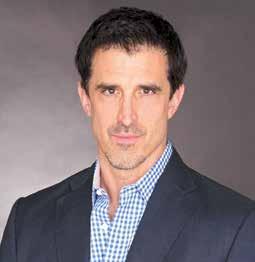
This column features business insights from a recent “Mind Your Business with Yitzchok Saftlas” radio show. The weekly “Mind Your Business” show –broadcasting since 2015 – features interviews with Fortune 500 executives, business leaders and marketing gurus. Prominent guests include John Sculley, former CEO of Apple and Pepsi; Dick Schulze, founder and Chairman Emeritus of Best Buy; and Beth Comstock, former Vice Chair of GE; among over 400+ senior-level executives and business celebrities. Yitzchok Saftlas, president of Bottom Line Marketing Group, hosts the weekly “Mind Your Business” show, which airs at 10pm every Sunday night on 710 WOR and throughout America on the iHeartRadio Network.
On a recent 710 WOR “Mind Your Business” broadcast, Yitzchok Saftlas (YS) spoke with guest Steven Gaffney (SG), communications consultant for Fortune 500 companies.
YS: What are your tips for creating honest and effective communication?
SG: The most important thing is getting the unsaid said. The biggest problem is not what people say – it’s what they don’t say to each other. I once shared this idea during a session, and one woman said, “Well, sometimes you get the unsaid said, and it doesn’t go well.” So, I asked, “Why don’t you give me an example?” She said, “I once gave feedback to my peer that he was dropping the ball, and he got upset. So, getting the unsaid said sounds nice, but it doesn’t always work.” I
asked, “Why did you say that to him?” She responded, “I care about the work we’re doing, I care about the customer, and I care about him. I want us all to work better together.” I said, “Did you say all of that to him?” What was tripping her up wasn’t what she said, it was that she didn’t say the rest of it.
Beyond getting the unsaid said, I have 9 Strategies for Honest and Effective Communication. I developed these strategies as a formula for resolving issues with anyone. In any job, you get training in how to do certain processes and procedures. There’s training for all kinds of things. But rarely is there ever training for how to have difficult conversations and get them resolved.
What is the first strategy?
The first strategy is Deep Listening.
In other words, listen and probe about what’s going on. When we have a difficult time with somebody, we often want to go into transmit mode. But really, we have to go into listening mode. Just by entering listening mode, you can sometimes solve the entire problem. When people give us feedback, there’s assumptions we need to make. Everybody says not to assume, but there’s certain assumptions that empower us in our life. And one is to assume that whatever somebody’s telling you is not initially the full truth. So, when people give feedback, sometimes what first comes out is rough and raw, but it’s not really the issue. And what happens is, we get defensive and respond, and the other person says, “See, I can’t give that person feedback. They just start debating and get defensive.” But if we just probe and let that initial feedback come to us, often you’re going to find out
the real issue was not what they initially said, but what they eventually said.
Could you explain the second strategy, Ownership Attitude?
Our mindset dictates our behavior. Have you ever had somebody who says they are honest and always going to tell you what they think, but everything they tell you is always something bad?
The problem isn’t really what they’re saying, it’s that their mindset is always negative, blaming, or angry. Ownership Attitude means we are 100% responsible for our attitude. Nobody can make us do anything. But that’s not how we often communicate. Somebody might say, “I wanted to say no, but they made me say yes.” Let’s think about that for a moment. Did they physically move our lips and make us say yes? The reality is,
they did what they did, and we chose to say yes. We have to honor that people do what they do, and we choose how we respond. It’s not that we don’t ever feel pressured, but we need to be responsible for our attitude. One of my mentors said to me, “Happiness is an inside job.” Nobody’s ruining our day, unless we allow them to ruin our day. That perspective is important, because it will help us to say what we really need to say.
Could you explain how the third and fourth strategies build off of the first two?
If you think about it, the first two strategies are kind of our game plan going into the conversation. We want to probe and listen, and then we want to own our attitude, in order to properly share our perspective. The third and fourth strategies are critical ways to begin the conversation. The third strategy is Purpose, the reason why you want to talk to this person. It’s important to begin with the goal, not the problem. If I were to say, “I want to talk to you about all the issues we’re having,” nobody’s ever going to be excited to have that conversation. But if we begin more honestly and say, “I want to talk to you about how we can work better together,” we’re still implying that there are problems, but we’re letting the person know that we’re not coming to complain. We’re coming because we want to resolve those issues.
The fourth strategy is to Share Concerns. Concerns are all the reasons why we don’t want to have that conversation. For example, I could be concerned that you might get upset, defensive, or take things the wrong way. The irony is that human beings love to prove people wrong. So, if we tell somebody, “I’m concerned that you’re going to get defensive,” they’ll likely respond, “No, I won’t.” And that actually works in your favor. But it’s really important to then quickly follow with, “I am not blaming you, but I don’t know how to talk to you.” You’re taking ownership, but you’re honoring that what’s in the way is the difficulty of having the conversation. I’ve found that people can resolve almost any issue as long as they feel comfortable acknowledging it. It isn’t really the issue that’s the problem. It’s the way we talk to each other.
Could you explain the fifth strategy, Notice vs. Imagine? This strategy is the distinction be -
tween fact versus our imagination. If it isn’t a fact, it goes into the imagination category. There are only three things you can ever really notice about a human being: appearance, actions, and words. And that’s important, because it reframes our perspective. Can you notice that somebody’s passive aggressive? Can you notice that somebody’s difficult? Can you notice that somebody’s being inconsiderate? No. Those are all opinions. It is conceivable that other people might not perceive that person the same way. So, what’s important in a
For example, you could say to your boss, “Can you tell me what needs to happen in order for me to be in the number one position to get that promotion? I know you can’t guarantee that I will be promoted. But what do I need to specifically do in order to best position myself, so that I’m likely to get that promotion?” Be specific, be bold, and be strong.
What is the seventh strategy?
The seventh strategy is Benefits. Once we’re having these difficult conversa -

longer than that. Because after a while, people will start to reevaluate the conversation, and then they feel awkward about it. The best thing is to follow up and say, “Listen, we had a great conversation the other day. I just wanted to check in on how you’re doing.” You want to build from the conversation. These aren’t just one-off conversations. These are everyday conversations. These methods work, day in and day out, for developing great relationships with anyone. So, always follow up.
Why is it important to end conversations on the ninth strategy, Appreciate?
difficult conversation is to actually look at the facts of the situation, ground the conversation in those facts, and own up to our imagination. I do a T-Chart for this strategy, where you put “notice” on one side and “imagine” on the other. What’s so shocking is that when people fill this chart and force themselves to write down what the facts are, I’ve had people get upset, and even teary-eyed, because they realize that they’ve been so upset with this person, and they can’t even remember what the facts are.
What can you tell us about the sixth strategy, Requests?
Go big and go strong. Ask for what you really want. People have a hard time asking for things in life. But what’s the worst that somebody could say to us when we’re asking for something? The worst they could say is no. People get so hung up on rejection, they never even think to ask. But if they tell you no, you could always just ask again later, or even ask, “What would have you reconsider and be more open to what I’m asking for?” Go strong. Go bold. Go big. Ask for what you really want. But be specific. The problem with a lot of difficult conversations is that they don’t really get specific. People will say, “My request is that we get along and communicate better.”
What does that really mean? The person who is listening to that will now interpret their own meaning and execute, even though that’s not really what the other person wanted. You need to be specific.
tions, we need to think about what’s in it for the other person. So often, when making requests, people just focus on what’s in it for them, and forget to say what’s in it for the other person. And if you’re not sure, it might be a good thing to ask. You could say, “Here’s my request. How would this be beneficial to you?”
Sometimes, a person might say, “I don’t really see the benefit to me,” in which case, you want to lay it all out and look for a way that both parties can benefit. Often, I’ll see people ask their boss for things and forget to include what’s in it for the organization. Or, I’ll see executives make an argument of why it’s great for the company, but they don’t make an argument of why it’s so great for the employees. No matter what, just think about what would be in it for them. And maybe it’s as simple as, “I want us to work better together, because I noticed tension. I don’t like that tension, and I have to imagine that you don’t like it either. Let’s figure out a way how we can all work better together, so that everyone benefits.”
When having difficult conversations, no matter how well it goes, people will dissect that conversation afterwards. They’ll say, “I wonder now what he meant when he said this. And we didn’t bring this up. And I forgot to bring up that.” So, a good rule of thumb is to always follow up on a difficult conversation within 24-48 hours. Don’t let it go
When you’re wrapping up these conversations, no matter where you’re at, you need to take time to show appreciation. People won’t always remember how you began a conversation. But they will never forget how you left them. Let’s say, at the end of the conversation, there’s still something that didn’t get completely resolved. What you could say is, “I really appreciate that you shared your perspective with me. This conversation has really helped, and I feel like we’re on a great pathway forward.” Or, if the issue got completely resolved, you could say, “I appreciate you spending this time with me. I feel good about this. I hope you do too. And what I specifically appreciate is how you shared with me exactly what’s going on, and that we both discussed it without blaming each other. We really looked at how to grow, and I feel really inspired to work with you.” People will never forget how you leave them in a conversation. So, always end on some form of a sincere and authentic appreciation.
“People can resolve almost any issue as long as they feel comfortable acknowledging it.”

I had the craziest of goals. And if I could do this, you can lose weight or learn to play an instrument, learn a language, get an education, get a job… whatever you want.
NFL teams come up once in a generation, so it really got real for me when the process was announced. I’m a man of faith, I’m Jewish, and I would call this bashert.
What you are seeing that is happening to youth in this country and in general, but specifically here in New York City, is something that we should all be alarmed about. We saw it yesterday down at Union Square. This is not a policing issue. This is a parenting issue.
We need to be clear on that. Police is the response after an incident happened. But there should be a proactive approach. When I looked at what happened in Union Square, the first thing I did was text my son and say, “Where are you? Are you in Union Square?” And I wonder, with the thousands of children who were there hurling dangerous objects at police officers, disrespecting the residents in the area, attacking each other? How many how many parents texted their children?
- Ibid.


One of the things I’m always asked is why Americans have sort of lost faith for a while in being able to do big things. If you could do anything at all, Joe, what would you do? I said I’d cure cancer. They looked at me like, why cancer? Because no one thinks we can. That’s why, and we can. We ended cancer as we know it.
- Pres. Joe Biden’s perplexing comments at a White House gathering on healthcare

When we invest in clean energy and electric vehicles and reduce population, more of our children can breathe clean air and drink clean water.
- Vice President Kamala Harris at a White House event, managing to outdo her boss
But experts underscore that it is simply impossible to change your race. “It’s just belief,” said Jamie Cohen, an assistant professor of cultural and media studies at Queens College, City University of New York. “It doesn’t ever really work, because it’s not doing anything, but they have convinced themselves that it works because there’s other people who have convinced themselves, as well.”
– From an NBC article titled “Inside the online world of people who think they can change their race”
- One of many replies on Twitter, pointing out the hypocrisy of the left
I do not know what kind of mental state he’s in.
- Prime Minister Netanyahu’s brother, Dr. Iddo Netanyahu, responding in an interview to Pres. Biden’s criticism of judicial reform in Israel
When I first learned about the indictment, I had a long conversation with a friend of mine, Ryan Reilly, and I told him how proud I felt to be an American at that moment. Much in the way that I did when I learned that our military had killed Osama bin Laden. I just felt incredibly proud.
- CNN analyst Michael Fanone comparing the recent federal indictment of former President Donald Trump to the killing of terrorist Osama bin Laden in 2011
Hot enough for you? Thank a MAGA Republican. Or better yet, vote them out of office.

- Tweet by Hillary Clinton blaming the summer heat on Trump supporters

That was to keep him busy, what do you think? I taught school (for) 35 years.

- 87-year-old Marjorie Perkins of Maine explaining to CNN why she gave an intruder food, thus distracting him while she called the police
It was just to say hello… There was nothing related to his business dealings... It’s kind of a preposterous premise to think that a father should not say hello to people that the son is at dinner with.
- Democratic Rep. Dan Goldman after Hunter Biden’s partner testified that then-Vice President Joe Biden spoke to Hunter’s business partners on the phone many times and that the whole business was essentially a scheme to bribe Biden, despite Biden stating that he never spoke to any of Hunter’s business partners


I think Hunter Biden was obviously trying to divert the different kinds of money that he had coming in. That’s my best understanding of that situation. Again, none of it touches President Biden.

– Democrat Rep. Jamie Raskin, who was part of the team that impeached Trump for the Russia hoax, telling Chris Cuomo that the Bidens didn’t do anything wrong and that there is no reason to investigate the fact that Hunter Biden received tens of millions of dollars from foreign entities despite not really engaging in any business with them
You have made mistakes in the past; you have paid very heavy prices. If an escalation or conflict develops here, we will return Lebanon to the Stone Age.
– Israel’s Defense Minister Yoav Gallant while visiting the Lebanon border in response to provocation from Hezbollah

The mysterious disappearance of Chinese Foreign Minister Qin Gang is a timely reminder that the future of U.S.-China relations will be determined not just by U.S. policy and what is happening domestically in the United States (such as the presidential election campaign). It will be shaped also by developments in China – which at this point are opaque but troubling.
From what outsiders can tell, China is reverting to a Mao-era style of politics that we have not seen for decades. More significant than Qin’s mysterious removal from power – after the authorities attributed his absence to “health reasons” – is the doctoring of websites and news releases to expunge the foreign minister’s participation and achievements. “Who controls the past controls the future,” George Orwell wrote in his novel “1984,” and that ominous dictum seems to be the guide to China’s elite politics these days.
This is a far cry from the technocratic government that Deng Xiaoping ushered in as he reformed China in the 1980s. In those days, the Chinese political system seemed a contradiction in terms – a dictatorship that had age caps or term limits for high offices. Where else did one see this kind of limitation of authoritarian rule? Today, once again, there are no limits to the power of China’s ruler. What scholar Elizabeth Economy has called China’s “Third Revolution” (the first personified by Mao Zedong, the second by Deng, and now by Xi Jinping) is still going strong.
That third revolution is not just about domestic politics. Xi has consolidated his own power and put the Chinese Communist Party back at the center of the society, but he has also sought to present a much stronger and more assertive China to the world. Those decisions have had ripple effects across the globe, especially in Asia, where China’s neighbors have been rattled by Xi’s more aggressive

posture and policies.
The United States has not handled relations with China perfectly. The Biden administration was needlessly confrontational from the outset, publicly upbraiding Beijing in their first meeting of senior officials. The United States has also maintained President Donald Trump’s tariffs
fort to maintain a working relationship with China, despite its status as the world’s second largest economy, a nuclear weapons power, and possessor of a U.N. Security Council veto.
But Biden has corrected course. Several of his senior officials – including the secretaries of state, commerce and the treasury
high-end technologies from being shared with China, using the metaphor of a “small yard” with a “high fence.” Even some U.S. policies that would provoke Chinese opposition – such as looming new regulations around U.S. investment in China – are now being signaled to the Chinese in advance (in that particular case by Treasury Secretary Janet L. Yellen).
There are still areas in which the United States could make a more serious effort. If the Biden administration wants to have productive military-to-military dialogue, maintaining Trump-era sanctions against China’s defense minister would seem an odd way to signal that desire. Far better to waive the sanctions so that the two sides can talk and avoid misunderstandings on issues such as Taiwan.
But the ball is really in China’s court. Unfortunately, Chinese policy has been marked by an assertiveness and even bellicosity that has broken sharply with the past three decades. Xi has staked out expansive claims for China in the South China Sea, increased military activity around Taiwan, clashed with India in the Himalayas, demanded that Australia cease any criticism of his country, pledged his country’s unqualified support for Moscow even as Russia’s aggression in Ukraine escalates, and has ramped up criticism of the United States.
on China, despite the fact that they have been expensive failures. (Remember that it is American consumers who pay for those tariffs, not the Chinese.) Trump provided tens of billions in additional subsidies to farmers to make up for the losses they suffered because of these policies. And, for a while, it seemed that U.S. policies toward Beijing were being announced with no ef-
– have met with their Chinese counterparts and tried to stop the decline in relations between the two countries. Secretary of State Antony Blinken told me in an interview that world leaders have been telling him that they expect the United States and China to build a decent working relationship. The administration is taking seriously the idea that it will restrict only a limited number of
None of these policies seem to be working. Countries around China have become far more active in countering Beijing’s influence and searching for assistance elsewhere, especially from the United States. From Japan to the Philippines to India, nations are pushing back. Will Beijing change? Is an increasingly autocratic and closed decision-making system capable of learning and adapting? Qin Gang’s mysterious removal does not suggest a positive answer.
“Who controls the past controls the future,” George Orwell wrote in his novel “1984,” and that ominous dictum seems to be the guide to China’s elite politics these days.

When the Abraham Accords were brokered by the Trump administration between Israel and the United Arab Emirates, I wrote about how they had set a new paradigm for peacemaking in the Middle East that would be much more successful.
Attending the White House ceremony in which the Accords were signed and my visits to the UAE, Bahrain and Morocco have underscored the success and viability of the accords.
“This agreement with the UAE is the first of what will become the new trend,” I wrote three years ago. “Instead of land for peace, from now on, Israel will be trading peace for peace. Israel will no longer relinquish land and evacuate Jews from their homes in return for calm and instead receive rockets, terrorists’ tunnels and suicide bombers in return. The Palestinians will have to overcome their internal divisions, their corruption, and their misplaced priorities, or they will be rightly forgotten.”
I wrote that none of the concessions Israel made for decades led to the Palestinians reciprocating. Rather than make the concessions necessary to help their own people, Abbas and other Palestinian leaders stalled for time, resorted to vio -
lence and incitement, and missed countless opportunities.
“This agreement should be a wake-up call to the Palestinians that no one is waiting for them to overcome their stubbornness anymore,” I wrote. “Whether they like it or not, those days are now officially over. Their ability to hold Israel hostage has been lost forever.”
In hindsight, I admit I was wrong.
There are at least two people who are still waiting for the Palestinians, enabling their stubbornness and are not only willing but genuinely excited about the prospects of holding Israel hostage: current American President Joe Biden and his top advisor on the Middle East, New York Times columnist Tom Friedman.
Biden and Friedman have clearly learned nothing from decades of failure to achieve peace by forcing Israel to make concessions that would put the Jewish state in peril. They have turned a blind eye to the success in peacemaking of former President Trump, who was able to think outside the box and wisely reject those who told him that there was no other way.
Biden told his reelection contributors on Friday that a deal may be on the way with Saudi Arabia – after talks his national security adviser Jake Sullivan had

with Saudi officials in Jeddah – aimed at reaching a normalization in relations between the kingdom and Israel.
He didn’t say what the deal would entail. But he doesn’t have to, because he has Friedman for that.
“I believe that, at a minimum, the Saudis and Americans could (and should) demand four things from Netanyahu for such a huge prize as normalization and trade with the most important Arab Muslim state,” Friedman wrote after meeting with Biden.
These four things are: An official promise not to annex the West Bank – ever; not to build new West Bank settlements or to expand existing settlements; no legalization of “wildcat” Jewish settlement outposts; and transferring some Palestinian populated territory from Area C in the West Bank (now under full Israeli control) to Areas A and B (under Palestinian Authority control) – as provided for in the Oslo Accords.
Friedman ended his column with what may have been seen as a joke at the time: “If it also forced Netanyahu to abandon the extremists in his cabinet and make common cause with the Israeli Center-Left and Center-Right, well, wouldn’t that just be the cherry on top?”
Now it is clear that Friedman was not kidding. This is actually Biden’s plan.
He wants to overthrow the current Israeli government and replace it with a coalition he would like better, with Yair Lapid and Benny Gantz taking the jobs of Bezalel Smotrich and Itamar Ben-Gvir. He doesn’t care about making peace between Israel and the Saudis. He wants to make war with the Israeli voters who elected a right-wing government.
Anyone who understands Israeli politics knows there is no chance for this. Lapid and Gantz will not suddenly become Bibiphiles, even if it means Israel making peace with the entire Arab world. Gantz said it himself in English in June.
The Times of Israel reported that during an event at the Washington Institute for Near East Policy, Gantz was asked whether his party would be willing to swap out Smotrich and Ben-Gvir in the coalition in the event that an agreement is signed with the Saudis. Gantz said his faction would not join the government but would act as “strategic backup” from the opposition benches.
“I think peace is always a good trend for the State of Israel, and if it needs my backup for that, it will get my backup for that, but I will not get into this government,” he said.
But Friedman doesn’t care. He wrote about how he told the president in the White House that a U.S.-Saudi mutual security pact that would involve Saudi Arabia normalizing relations with Israel depended on Israel making concessions to the Palestinians that would preserve the possibility of a two-state solution.
He admitted that he warned Biden that if he made a deal without a significant Palestinian component, “it would simultaneously strike a death blow to the Israeli democracy movement – by giving Netanyahu a huge geopolitical prize for free after he just did something so antidemocratic – and to the two-state solution, the cornerstone of US Middle East diplomacy.”
“It would spark a rebellion in the progressive base of his party and make ratification of the deal well nigh impossible,” he also admitted warning the president.
So now the cat is out of the bag. Not only can there be no peace agreement between Israel and Saudi Arabia using the successful strategy of the Abraham Accords that left the Palestinians and their intransigence out, Biden and Friedman are now giving veto power over any possible deal to the Palestinians and their allies in Congress.
No, Netanyahu and Saudi Crown
Prince Mohammed bin Salman Al Saud will not be allowed to decide the terms of a peace agreement between their countries. Biden and Friedman will put the likes of Ilhan Omar and Rashida Tlaib in charge. These developments have only persuaded me even more that I have been
an obvious prerequisite for him to deliver a deal with Israel.
I don’t even think Biden can make peace with Netanyahu, his supposed friend for decades, who he has been snubbing unnecessarily for more than seven months.
But Netanyahu added a dose of reality in the interview that I hope Biden watched from the White House. He said he has long believed that Israel must first make peace with the Arab world and only then with the Palestinians.
“The Palestinians, who refuse to recognize Israel in any boundary, are only 2% of the Arab world,” Netanyahu said. “If we make peace with the other 98%, the Palestinians will stop believing that one day the broad mass of the Arab world will destroy or dissolve Israel, and that will bring them into a more realistic position.”
right in saying for three years that no agreement will be reached on expanding the Abraham Accords as long as Biden remains president.
The Saudis just don’t trust America under Biden, who came to Saudi Arabia from Israel and couldn’t even get the Saudis to lower the price of oil ahead of an American midterm election. The Biden administration can’t even broker normalization between Saudi Arabia and the U.S., which is

Peace is not around the corner between Israel and Saudi Arabia, and it’s not because of Netanyahu, Smotrich, or BenGvir. Netanyahu has made peace with three Arab countries, and he is willing to go far to broker a Saudi deal.
Speaking to Fox News last week, Netanyahu said a Saudi deal would “be a pivot of history. It will effectively end the Arab-Israeli conflict and enable us to end the Palestinian-Israel conflict.”
If Biden had done the right thing and invited Netanyahu to the Oval Office instead of Friedman, he would know the truth. Instead, he is unfortunately doing everything to prove that he does not know how to make peace between Israel and Saudi Arabia.
Martin Oliner is co-president of the Religious Zionists of America, chairman of the Center for Righteousness and Integrity, and a committee member of The Jewish Agency for Israel. He was appointed by President Trump to the Council of the United States Holocaust Museum. Mr. Oliner is the former mayor of the Village of Lawrence.
Biden and Friedman have clearly learned nothing from decades of failure to achieve peace by forcing Israel to make concessions that would put the Jewish state in peril.
Outgoing Supreme Court president Esther Hayut is playing the short game. She wants to clear her desk, finish the work she set out to achieve when she took over as Supreme Court head in late 2017, and let the chips fall where they may.
Shortly before Hayut assumed office, she set out her judicial vision in an address before the Bar Association. The central challenge facing the court, she declared, was surmounting the rule of law.

Comparing herself and her colleagues to G-d, she bloviated: “There’s a disadvantage that we flesh and blood judges have in comparison to the Creator of the Universe. Even in the situations where we understand fairly quickly the dilemma that brought the petitioners before us, it often happens that the solution we view as just and proper isn’t possible under the practice and requirements of law. These situations in my view are among the most difficult and complex ones that we as judges are called upon to contend with.
“How do we bridge the gap between the law and what is right? Finding an answer to this question, discovering the secret … ‘spice’ is perhaps one of the greatest tasks that lies before us as judges.”
Now with a mere two months remaining to her tenure, Hayut is finishing the job. She’s found the “secret spice.” All a judge needs to rule the way he wants is to place himself above the Knesset, the laws it passes, and the government that is charged with executing them. She began the process two years ago and is completing it now.
Israel is a parliamentary democracy. Legally and constitutionally, this means that the Knesset is the sovereign. The government is the executive arm of the Knesset. The Knesset can oust the government any time a majority of Knesset members lose confidence in it. The Supreme Court
interprets the Knesset’s laws.
The source of the Supreme Court’s power is the corpus of Basic Laws passed by the Knesset. Since they are the source of its power, the court has no legal power to amend or abrogate these laws.
This, however, is no obstacle for Israel’s godlike Supreme Court justices, who have that “special spice.”
Two years ago, Hayut began laying the markers for the actions she intended to take before her retirement. In two separate judgments, she and her associates agreed to adjudicate petitions calling for the abrogation of Basic Laws and asserted their right to do so, based on an entirely made-up rationale. The justices proclaimed that they can abrogate Basic Laws if they decide the Knesset “abused its foundational powers” in passing them.
This means that Hayut and her cronies have decided that they can annul Basic Laws if they don’t like what they say. Since the justices have the “spe -
cial spice,” they know better than the public’s elected representatives what a proper law looks like. Or smells like.
In March 2020, Hayut and her comrades effectively made themselves super-legislators and asserted the power to interfere in the Knesset’s internal procedures. That month, Israeli voters had their third inconclusive election in less than a year. Benny Gantz and Yair Lapid, who led the Blue and White Party, lacked a 61-seat majority to form a coalition. But they came up with a novel idea. With the Arab anti-Israel bloc, they had a 61-seat majority in Knesset. Gantz and Lapid decided to compel interim Knesset Speaker Yuli Edelstein to call for new elections for the Knesset speaker. With their guy in place as Speaker, Gantz and Lapid would be able to run roughshod over Netanyahu’s interim government and rule the country from the Knesset.
The only problem with their plan was that they had no legal power to execute
it. Under Basic Law: The Knesset, the Israeli parliament, through its speaker, develops its own procedures. Just as importantly, the Knesset speaker is only elected after a government is sworn in. By law, Edelstein was supposed to continue serving as interim speaker.
But a persnickety Basic Law was no match either for Blue and White or for Hayut. Blue and White petitioned the Court to order Edelstein to call a vote. In no time, Hayut and her colleagues did just that. When Edelstein refused— and chose to resign rather than defy the court’s illegal ruling—Hayut ordered the Knesset to convene within 24 hours and elect a new speaker.
As law professor Avi Bell from BarIlan University law school explains, “The court’s decision to fire a Knesset speaker notwithstanding that there’s nothing in the law that allows them to do that, put us into a constitutional crisis. The ruling was the court’s declaration of war against the Knesset. The only reason things didn’t get worse is because Netanyahu and Gantz quickly came up with a way to avoid an open fight; they formed their joint government.”
Having seized the powers of the Knesset three years ago, on Thursday, Hayut turned her guns (or spices) on the government. After Netanyahu returned to office, the left, including Attorney General Gali Baharav Miara, set out to find an excuse to oust him from power. They set upon the incapacitation clause of the Basic Law: The Government. Although the lawmakers who drafted the law reasonably viewed the clause as a means for governments to replace a premier who becomes physically incapable of performing his duties, the left began arguing Netanyahu was incapacitated because he had signed a conflict-of-interest document with Baharav Miara upon entering office due to the criminal pro -
ceedings being carried out against him.
Shortly after Justice Minister Yariv Levin announced his plan to place minimal limits on the court’s powers in January, a group of anarchists led by former Israel Defense Forces Chief of General Staff Dan Halutz petitioned the court to oust Netanyahu from office. Halutz largely disappeared from view after he was forced to resign his position at the helm of the IDF following his failed military leadership during the Second Lebanon War in 2006. He has returned to the main stage over the past seven months by calling for political violence and civil war. In his petition, Halutz called for the court to deem Netanyahu incapacitated. Baharav Miara signaled strongly that she sided with Halutz and the anarchists.
Understanding it was on the verge of a judicial coup, the Knesset coalition moved quickly to amend the incapacitation clause. The amendment, which was passed in April, stipulated that a prime minister can only be deemed incapacitated if he is physically unable to carry out the functions of the office. The left, this time through the State Department-funded Movement for Quality Government, petitioned the court to abrogate the amendment. Baharav Miara announced last week that she agrees with the petitioners.
Hayut and two associate justices convened the court on August 3 to adjudicate the petition. As with the Edelstein petition, they have absolutely no legal authority to deliberate the issue. But they don’t care. Armed again with their insipid assertion that the Knesset may have “abused its foundational powers,” Hayut and her comrades insist that they have a right to abrogate the clause and so pave the way for a follow out hearing on the Halutz petition to oust Netanyahu from power.
Whether or not they rule in favor of the Movement for Quality Government and Baharav Miara, simply by adjudicating this petition, Hayut is asserting the court’s power to dictate the actions of the government and to oust the prime minister, at will.
This then brings us to Hayut’s planned coup de grace. On September 15, just two weeks before she heads for the exit, Hayut will take the unprecedented step of convening the entire court—all 15 justices—to adjudicate an even more outrageous petition regarding a Basic Law. That day, Hayut and her associate justices will hear arguments regarding a petition asking them to overturn the
Knesset’s amendment to the Basic Law: Judiciary from last month. That amendment bars the justices from abrogating lawful decisions by the government, prime minister and government ministers on the grounds of “reasonableness.”
In other words, it limits the court’s power to set government policy based on the judges’ “special spice.”
United States, they were required to be complicit with slavery.
Bell notes that “it took four years from the time the Dred Scott decision was delivered until the start of the Civil War. But the war became inevitable after Dred Scott.”
So, too, the moment the Supreme Court nullifies the Knesset’s power to
stitutions from the court. He may have been too slow.
In media interviews last week, Netanyahu noted that the court lacks the power to adjudicate these issues. He wouldn’t say whether he would follow their decisions. He insisted instead that the government will abide by the rule of law. On Thursday, it was reported that Netanyahu is considering the option of re-legislating the Basic Laws if the court strikes them down.
In the absence of any significant political or legal figure on the left coming to his senses and rejecting Hayut’s maniacal power grab, Netanyahu’s reported plan of simply keeping the government’s nose to the grindstone, and moving forward, may be Israel’s only hope of avoiding a disaster of biblical proportions.
©JNS

Not only do the justices lack the legal authority to adjudicate this petition, they are in an open conflict of interest because the law relates to their own power. But that is the whole point.
By adjudicating the Edelstein and Incapacitation Clause petitions, Hayut cancelled the powers of Israel’s democratically elected institutions and seized them for the court. On September 15, Hayut intends to end her judicial career by asserting that there can be no limits of any sort placed on the court’s powers.
As a short-term player, Hayut sees the game ending on September 30. But, of course, on October 1, Israel will be left to contend with the consequences of her actions. And those will be a disaster. Indeed, they already are. Hayut’s moves put Israel on the fast track to the civil war that Halutz and his comrades pine for.
Bell notes, “A parliament asserts its authority by passing laws. By annulling the Knesset’s power to enact laws, the court is destroying the last vestiges of Israel’s democratic institutions. How are democratic institutions supposed to assert their authority if it isn’t by passing laws? All that’s left is confrontation, by actually rejecting the authority of the court.”
Consider what happened in the United States before the Civil War. In 1857, the Supreme Court passed its Dred Scott decision. The decision determined that a slave would remain the property of his owner wherever he was. If he escaped to a free state, the court insisted that he was still a slave and that the free state was required to return the slave to his owner in the South. That decision meant that state legislators had no power to abolish slavery in the separate states. As states of the
limit its powers, it renders civil war in Israel inevitable.
Israeli Justice Minister Yariv Levin has been harshly criticized for his handling of the judicial reform process. But whether his package was perfect or the process was properly managed is really beside the point. Levin rightly viewed his judicial reform package as a race against time to protect Israel’s democratic in -
Caroline B. Glick is the senior contributing editor of Jewish News Syndicate and host of the “Caroline Glick Show” on JNS. She is also the diplomatic commentator for Israel’s Channel 14, as well as a columnist for Newsweek. Glick is the senior fellow for Middle Eastern Affairs at the Center for Security Policy in Washington and a lecturer at Israel’s College of Statesmanship.
The moment the Supreme Court nullifies the Knesset’s power to limit its powers, it renders civil war in Israel inevitable.
Acts of bravery on the front lines can be awarded different medals and citations based on the actions and the danger of the situation. After the Medal of Honor, the second highest decoration for someone in the U.S. Air Force and the Space Force is the Air Force Cross. Its original designation was proposed as the Distinguished Service Cross (Air Force) in 1947, and it was established as the Air Force Cross in 1960. There have been only 198 recipients of the award, with fifty being awarded posthumously. At least one of the recipients of the Air Force Cross is Jewish, and his story – as well as others who have received the award – is history to be remembered.
Zach Rhyner from Wisconsin was a combat controller who enlisted in the Air Force in 2004. Combat controllers are special operations airmen assigned to battlefield units with special operations capabilities. Their duties include reconnaissance, establishing assault zones, identifying and setting up airfields and drop zones, forward air control, air traffic control, and fire support. They are well trained in the use of variety of weapons, vehicles and demolitions to perform well in operations such as counter-terrorism, combat search and rescue, and direct action situations. The process to become a combat controller takes around two years, and over 90% of the candidates fail or drop out during the arduous training. Currently, there are about 360 combat controllers. They have been in action since the Korean War.
After completing the course and becoming qualified as a combat controller, Rhyner joined the 21st Special Tactics Squadron of the 720th Special Tactics Group at Pope AFB in January 2007. On April 6, 2008, he was on his first deployment in Afghanistan and was just a few months out of training when the Battle of Shok Valley took place.
Called Operation Commando Wrath, fifteen American Special Forces soldiers would lead more than 100 Afghani soldiers in a mission to kill or capture a terrorist leader. There were three Special Forces teams on the operation, and Rhyner was with the command and control section. Things didn’t go right from the start as the Chinook helicopters could not land and the troops were forced to jump. They were seen almost immediately by the enemy and they had time to set up an ambush. As the soldiers climbed the rough terrain, they entered the insurgents’ firing range. Withering machine gun and RPG (rocket propelled grenade) fire rained down on the Special Forces and wounded several soldiers. Their interpreter was killed, and their combat cameraman, Michael Carter, ran into open territory that was in sight of the enemy to rescue a wounded soldier. The leader of the operation, Captain Kyle Walton, also ran through enemy fire to rescue another downed soldier. Rhyner was also shot early on but still played a crucial part in the battle.
Walton knew they badly needed air support and called upon Senior Airman
Rhyner to call in direct air attacks. Altogether he called in more than 50 air attacks, including some that were within 100 yards of his position. Eight F-15 Strike Eagles and four AH-64 Apache attack helicopters attacked the enemy positions. Rhyner then called the F-15s to relay to the ground units information as they observed the enemy’s movements and positions. Rhyner’s calls to the aircraft led the air units to make over fifty attack runs. The planes and helicopters shot Hellfire missiles, rockets, thousands of cannon rounds and bombs on enemy positions based on the precise coordinates they were given to by Rhyner. While calling in the airstrikes, Rhyner was on a 60-foot cliff and had been shot in the left leg. Despite his wounds and being trapped on the cliff and constantly being shot at by insurgents, Rhyner managed to prevent the task force from being overrun.
With dusk approaching, the unit withdrew down the mountain despite the growing number of casualties and dwindling ammunition. They were successfully extracted but had not captured the insurgent leader. Although they did not achieve their main objective, the task force inflicted close to 200 casualties on the insurgents. Three friendly Afghani fighters were killed and six American Special Forces operators were wounded in the six-and-a-half hour battle. Rhyner was shot in the leg – two bullets were stopped by his protective vest, saving his life.

Ten American soldiers received the Silver Star for the Battle of Shok Valley. One of the recipients, medic Ronald Shurer, had his Silver Star later upgraded to the Medal of Honor. Sergeant Matthew Williams also received the Medal of Honor. Rhyner was awarded the Air Force Cross and the Purple Heart, and during the presentation, the Secretary of the Air Force remarked, “Rarely do we present an Airman with the Air Force Cross, let alone a Purple Heart, and with good reason. The Air Force Cross is reserved for those who demonstrate unparalleled valor in the face of insurmountable odds.”
Rhyner continued to serve in the Air Force and was wounded on two more occasions. He received Purple Hearts for each of those injuries but had to retire in 2015 due to a gunshot wound in his right leg.
Today it is Medal of Honor recipients who receive the most media attention. Even though Rhyner’s actions during the Battle of Shok Valley barely made the news, his actions saved many lives that day. A combat controller who was at the Battle of Shok Valley declared, “If it wasn’t for Zach, I wouldn’t be here.”

LUXURY HIGH END REMODELING Services. Residential Commercial Kitchen Bathroom
Wood Floor Installation Mold Testing
Mold Remediation Handyman New York, LI Free Est 212-695-6370
PEACEFUL PRESENCE STUDIO
Men’s private yoga, Licensed Massage & Holistic Health Guidance
436 Central Ave, Cedarhurst Info. & free video training www.peacefulpresence.com 516-371-3715
GERBER MOVING FULL SERVICE MOVING
Packing Moving Supplies
Local Long Distance Licensed Insured
1000’S Of Happy Customers Call Shalom 347-276-7422
HANDYMAN AVAILABLE
For big or small jobs, Sheetrock, carpentry, painting, electrical, plumbing, install & repair appliances
Call Ephraim at 347-593-4691
VACUUM SALES AND REPAIR
All areas call Max Flam 718-444-4904
MANAGEMENT STAFF WILL ASSIST you with: * Obtaining Medicaid and Pooled Income Trust
* In-home Assessments, Individual and Family Counseling
* Securing reliable home care assistance
* Case and Care Management services
Dr. S. Sasson, DSW, LCSW (718) 544- 0870 or (646) 284-6242
HAIR COURSE:
Learn how to wash & style hair & wigs. Hair and wig cutting, wedding styling Private lessons or in a group Call Chaya 718-715-9009
ZEVIZZ WOODTURNING JUDAICA
Challah knifes, batei mezuzah, besamim holder, kiddish cups, havdalah candle holders, yad for sefer torah, pens, stenders, bowls and more 952-356-2228
DECLUTTERING/HOME
Organizing Service: Are you preparing for a move or looking to get rid of stuff in order to have calm, orderly energy in your space?
Efficient and patient Call/text Shula 347-452-5144
DON’T GET STUCK WITH A TWO STORY HOUSE YA KNOW, IT’S ONE STORY BEFORE YOU BUY IT BUT A SECOND STORY AFTER YOU OWN IT!
Call Dov Herman For An Accurate Unbiased Home Inspection
Infrared - Termite Inspection Full Report All Included NYC 718-INSPECT Long Island 516-INSPECT www.nyinspect.com
HEWLETT
Exquisitely renovated and modernized residence situated on a picturesque 50x200 lot. 4 bedrooms, 3 full bathrooms. First floor features dining area, huge living room, expansive kitchen with modern cabinetry, two sinks, two ovens, and two islands. Second floor features 4 bedrooms, a nursery, primary suite with WIC. Private backyard with 400 square foot inground pool house/ guest house, cabana with a kitchen and grill, playground, basketball court. Fully paid solar panels. A fully renovated basement featuring a wet bar, separate outside entrance. Close to all houses of worship. Mark Lipner Associate Broker Berkshire Hathaway Laffey International 516-298-8457 mlipner@bhhslaffey.com
WOODMERE
Spectacular 5 bedroom, 5 bath renovated home in SD#14 with in-ground pool & pool house, lot size 111 x 107. Formal living room & dining room, magnificent kitchen with SS appliances, tremendous den with fireplace and 4 skylights, vaulted ceiling, LED lighting, master suite, new CAC, new roof. Outside totally redone with Stone and Stucco. Backyard with new pavers, park-like property, sandbox, great home for entertaining. Close to all.
OPEN HOUSE Sunday, August 13

1:30-3:30PM • Mark Lipner Associate Broker Berkshire Hathaway Laffey International 516-298-8457 mlipner@bhhslaffey.com
LAWRENCE
Stunning One of a Kind Mid Century Modern 6 Bedroom, 6.5 Bath, Contemporary Ranch. Resort Style Home on Over an Acre of Property in Back Lawrence. Incredible Views, Regulation Size Tennis Court - Deco Turf. IG-Gunite Pool, Low Taxes, 5318 sq. ft. of Main Floor Living Space. Plus 5000 sq. ft. Basement With Very High Ceilings. Call Mark 516-298-8457 for more details Mark Lipner Associate Broker Berkshire Hathaway Laffey International 516-298-8457 mlipner@bhhslaffey.com
CAN’T AFFORD YOUR PROPERTY TAXES? MORTGAGE?
Must sell for any reason? Call for FREE Consultation. Call now 212-470-3856
Cash buyers available!
WOODMERE
Beautiful, brick, colonial boasting 5 bdr 3.5 Bth in pristine condition. Excellent location, near all! Move right in! RCUSA 516-512-9626



CEDARHURST JUST LISTED

Magnificent renovated 4 bedroom 3 bathroom in SD#15, new roof, windows, plumbing + electric, gas cooking, new marble bathrooms, marble kitchen with stainless steel appliances, LED lighting, security cameras and speakers throughout the home, custom closets, outdoor patio, 1 car garage, near all. Mark Lipner
Associate Broker Berkshire Hathaway Laffey International 516-298-8457
mlipner@bhhslaffey.com




In the heart of Cedarhurst (Close to Woodmere , Lirr & Cedarhurst Park)



EIK Kosher Kitchen/ Dr/Lr/Family Room/ Playroom/ 4 Bedrooms, 3 Full Baths/ Basement: 2 Bedrooms, 1 Full Bath, Kitchenette, Separate Entrance
Asking $1.3m
Whatsapp Text Only: 845-213-0002
No Brokers
NORTH WOODMERE
Stunning Split , 5 Bedrooms With 3 Full Baths. Custom Features Throughout. Well Maintained Home. Hardwood Floors, Granite Counters in kitchen, Formal Living Room and Dining Room, Den, Full Finished Basement. Relax in the Private Backyard With Inground Pool. SD#14. A must see! Close To All Houses of Worship Mark Lipner Associate Broker Berkshire Hathaway Laffey International 516-298-8457 mlipner@bhhslaffey.com
WOODMERE
Charming Colonial on beautiful tree lined street in the heart of Old Woodmere. Home features 3 bedrooms, 1.5 baths, kitchen, dining area, living room, full basement. Relatively new heating system + hot water tank. Large & beautiful backyard. Great for entertaining. Close to all. Mark Lipner Associate
Broker Berkshire Hathaway Laffey International 516-298-8457 mlipner@bhhslaffey.com
WOODMERE
New to the market. 3 bedroom 2 full bathrooms with a full basement. Ranch home in the heart of Woodmere, SD#15, on a lot sized 90x118, gas heat, garage. Mark Lipner Associate Broker Berkshire Hathaway Laffey International 516-298-8457 mlipner@bhhslaffey.com
WOODMERE
Beautiful Hi-Ranch In The Heart of Woodmere Featuring 3 Bedrooms Plus Additional Bedroom On Lower Level With Half Bath. This Easy Living Home Has Huge Windows And The Master Suite Has A Full Bathroom. This Oversized, Airy Galley Eat-InKitchen Offers Sliders To The Wood Deck. Full Finished Lower Level, Beautiful Wood Floors - Sliders To The Patio And Garage Entrance. New roof, New Hot Water Heater - Close To All. Don’t Miss This Opportunity To Make This Your Home! Wont Last - Call For A Private Viewing. Mark Lipner Associate Broker Berkshire Hathaway Laffey International 516-298-8457 mlipner@bhhslaffey.com
CEDARHURST
Open house on Sunday 12 - 2 !! Completely renovated 5 bdrs, 3.5 bath in the heart of Cedarhurst. High end kitchen, radiant heated floor, fire place, low taxes and much more. Just turn the key and move. 322 Madison Avenue for private showings call Alexandra at Realty connect usa at 516-784-0856
CEDARHURST
Beautiful, Well-Maintained Colonial In The Heart Of Cedarhurst. 4 Bedroom, 2.5 Baths. Brand New Roof. Eat-In-Kitchen, Formal Living Room & Dining Room. Hardwood Floors Throughout. Low Taxes. Close To All Shopping, Transportation and many Houses of Worship. Mark Lipner Associate Broker Berkshire Hathaway Laffey International 516-298-8457 mlipner@bhhslaffey.com
WOODMERE
Woodmere just listed 3 bedroom 2 full bathroom hi-ranch in sd #15 with central air-conditioning , gas heat, 2 car garage, eat-in-kitchen, l/r, d/r, den, hardwood floors, minutes to transportation , shopping, and houses of worship Mark Lipner Associate Broker Berkshire Hathaway Laffey International 516-298-8457 mlipner@bhhslaffey.com
WOODMERE
Welcome to this stunning residence situated on a tranquil residential street in Lawrence SD#15. This spacious and flawlessly maintained home boasts 4 to 5 bedrooms. Bright, airy living room with vaulted ceilings, skylights and wet bar. Central air conditioning, elegant quartz countertops, eat-in kitchen, formal dining room, main floor den with fireplace, master bedroom with bathroom snd dressing room, Jacuzzi tub, three other bedrooms and two full bathrooms. Inground sprinklers, lush landscaping, alarm system. Spacious playroom. Two-car garage. Mark Lipner Associate Broker Berkshire Hathaway Laffey International 516298-8457 mlipner@bhhslaffey.com
WOODMERE
New to Market! Newly Renovated Balcony Split Located In The Heart of Woodmere! Spacious Layout Featuring 6 Bedrooms & 3 Full Baths. This Stunning Home Has Everything You Want. This Gorgeous Open Floor Plan, Offers New Roof, New Electric, New Plumbing, Gas Home. Don’t Miss This Opportunity For A Gracious, Airy, Open Layout. Close to All. A Must See!!! Mark Lipner Associate Broker Berkshire Hathaway Laffey International 516-298-8457 mlipner@bhhslaffey.com

LAWRENCE
3BR, 2bth, LR, DR, Kitchen, Family
Rm, Office, Attached Utility Shed
• Huge backyard, 9600 sq ft lot
• 5-cars parking • Walk to all!
• Priced to sell! . . $1.69M
Interested or know someone who might be? Reach out for more info! Steve 516-371-5522, please leave message.
Introducing a stunning new construction home. Nestled in a picturesque neighborhood. Large windows, open-concept layout that merges the various living spaces. The expansive living room is bathed in natural light, thanks to the windows that offer great views of the surrounding area. Gourmet kitchen with top-of-the-line stainless steel appliances, sleek cabinetry, expansive center island with a breakfast bar. Ample counter space and a welldesigned layout. Wonderful dining area providing. Large glass doors, spacious patio. Luxurious master suite with a spacious bedroom, a lavish ensuite bathroom and a large walk-in closet. Additional bedrooms. High-end finishes, premium flooring, and custom details throughout. Call for pricing Mark Lipner Associate Broker Berkshire Hathaway Laffey International 516-298-8457 mlipner@bhhslaffey.com
Spectacular 5 bedroom, 5 bath renovated home in SD#14 with in-ground pool & pool house, lot size 111 x 107. Formal living room & dining room, magnificent kitchen with SS appliances, tremendous den with fireplace and 4 skylights, vaulted ceiling, LED lighting, master suite, new CAC, new roof. Outside totally redone with Stone and Stucco. Backyard with new pavers, park-like property, sandbox, great home for entertaining. Close to all.
Mark Lipner Associate Broker Berkshire Hathaway Laffey International 516-298-8457 mlipner@ bhhslaffey.com
WOODMERE
New to the market. 4 bedroom, center hall, colonial in SD#15, plus a full finished basement, 2 car garage. Gas, heat, central a/c, kitchen with stainless stell appliances. Granite countertops, formal living room and dining room, main floor den with fireplace, hardwood floors and so much more.
Mark Lipner Associate Broker Berkshire Hathaway Laffey International 516-298-8457 mlipner@bhhslaffey.com
classifieds@fivetownsjewishhome.com • text 443-929-4003

WOODMERE
Introducing a desirable colonial located in the heart of Old Woodmere, situated on an oversized lot. This charming home boasts 4 bedrooms and 3 full baths, along with a full finished basement. The first floor features a formal living room, dining room, kitchen with a breakfast room, and a spacious den. It is conveniently located in School District #14. Don’t miss out on this must-see property! Mark Lipner Associate Broker Berkshire Hathaway Laffey International 516-298-8457 mlipner@bhhslaffey.com
CEDARHURST
Move Right into This Very Spacious & Renovated 6 Bedroom, 3 Full Bath, Colonial on a Lovely Quiet Street. 5 Very Large Bedrooms All on 2nd Floor. Beautiful Den W/Fireplace & Playroom; Both on 1st Floor. Gorgeous Hardwood & Granite Floors, New Wood & Granite Kitchen With Stainless Steel Appliances. Great Backyard For Entertaining! Very Low Taxes. Mark Lipner Associate Broker Berkshire Hathaway Laffey International 516-298-8457 mlipner@bhhslaffey.com
WOODMERE
1st Showing
Introducing a stunning 14-side hall colonial home in the Hewlett Woodmere School District. Formal living room, formal dining room, den with a skylight. Eat in Kitchen, two sinks, a double oven, a warming draw and a microwave. First floor bedroom, a full bathroom and laundry room. Two-car garage. Upper level has four bedrooms, two full bathrooms. Finished basement with playroom, storage and utilities. Well-groomed exterior with porch adjoining the master bedroom. Hardwood floors and back patio. Central air conditioning, inground sprinkler system, alarm system. Close proximity to schools, shopping centers, restaurants, and transportation options. OPEN HOUSE
SUNDAY, August 13 • 11:00-1:00PM
1016 SOUTH END • Mark Lipner
Associate Broker Berkshire Hathaway Laffey International 516-298-8457 mlipner@bhhslaffey.com
5 TOWNS - OFFICES. LOT
Corner Bayview & Lawrence AveDaily Minyanim
Renovated Office 350SF
Kitchenette, WIFI, Separate AC.
Renovated Storefront Office ~600 SF
Private Bathroom, Separate AC
Parking Lot 4000SF
All Available Immediately
POR - Negotiable Call/Text/WA Owner: 516-206-1100
WOODMERE
Just listed - House Rental 6 bedroom residence. Living room with soaring vaulted ceilings and fireplace. Oversized den with fireplace. Family room. Central air conditioning. Five bedrooms on a single level. Close proximity to the railroad, shopping destinations, and houses of worship. Mark Lipner Associate Broker Berkshire Hathaway Laffey International 516-298-8457
mlipner@bhhslaffey.com
Prime location.short terms. 2 bd apartment (hotel style) furnished, fridge, micro coffee stand. $150 a night. Pls call/text 917-600-1983
FAR ROCKAWAY
Beautiful 2 nd floor Condo on Reads Lane, in Far Rockaway Center hall, 1 bedroom, full den, 2 full baths, washer dryer room, total open floor plan of the living room, dining room and kitchen. Floor to ceiling windows. Deck off the kitchen. Phenomenal location, with beautiful view. Asking $599,000. Please email all inquiries to: Shira@bestdevco.com for more details
LAWRENCE
One Bedroom Renovated Apartment In Prime Lawrence. Efficiency Kitchen, Renovated Bathroom. Sunken LR, Dining Room, Close to All, Transportation, Shopping, Worship. $275k Mark Lipner Associate Broker Berkshire Hathaway Laffey International 516-298-8457
mlipner@bhhslaffey.com
WOODMERE
Exquisite and expansive 1 Bedroom co-op in Heathcote. Recently renovated. Large foyer, vast Eat-InKitchen. Classic pre-war building with elevator. Private storage room. Don’t miss this opportunity to experience the perfect combination of space, style, and convenience in the most desirable location. Mark Lipner
Associate Broker Berkshire Hathaway Laffey International 516-298-8457 mlipner@bhhslaffey.com
HEWLETT
Totally renovated 1 and 2 Bedroom, Apartments with washer/dryer, kitchen with quartz countertops, stainless steel appliances. Recessed lighting, hardwood floors, storage in basement. Close to RR, shopping, and houses of worship. Mark Lipner
Associate Broker Berkshire Hathaway Laffey International 516-298-8457 mlipner@bhhslaffey.com
LAWRENCE
1 bedroom apartment, elevator building, eat-in kitchen, full bath, hardwood floors, plenty of closet space. Ceiling fan in bedroom & kitchen, laundry room in the basement. Close to the railroad, shopping, and houses of worship
$168k Mark Lipner Associate Broker Berkshire Hathaway Laffey International 516-298-8457 mlipner@bhhslaffey.com
CEDARHURST
1, 2 and 3 bedroom apartments, totally renovated private entrance , central air conditioning, hardwood floors, washer/dryer, garage parking, dishwasher, recessed lighting, private playground, close to railroad, park, shopping and houses of worship. Call for more details
Mark Lipner Associate Broker Berkshire Hathaway Laffey International 516-298-8457 mlipner@bhhslaffey.com
CEDARHURST
Rental Just listed 3 bedroom, 2 full bathroom apartment with spacious rooms, central air conditioning, underground parking, washer/dryer, hardwood floors, recessed lighting, kitchen with refrigerator , microwave, stove and dishwasher, minutes from shopping, transportation restaurants and houses of worship. Mark Lipner
Associate Broker Berkshire Hathaway Laffey International 516-298-8457 mlipner@bhhslaffey.com
LAWRENCE
Spacious 2BR, 2 Full Bath Apt with an enclosed terrace in the heart of Lawrence. Well maintained & manicured building. New hardwood floors, updated Eat-in Kitchen with gas stove. warming draw, dishwasher & microwave. New windows on the enclosed terrace & one of the bedrooms. 3 New A/C Units & New Refrigerator. Close to shopping, transportation, library, schools, and houses of worship. $339K Mark Lipner Associate Broker Berkshire Hathaway Laffey International 516-298-8457 mlipner@bhhslaffey.com
WOODMERE
Totally renovated bright and sunny 1 bedroom corner unit apartment with a washer/dryer. Features quartz countertops, ss appliances, recessed lighting, bathroom with chrome fixtures, close to the railroads, shopping and houses of worship. Call for details Mark Lipner Associate Broker Berkshire Hathaway Laffey International 516-298-8457 mlipner@bhhslaffey.com
LAWRENCE JUST LISTED
This amazing two-bedroom two full bathroom condo Features a luxurious lifestyle in the beautiful city of Lawrence. What more could you ask for? The building has a 24-hour doorman and elevator access, with a social room, library, washer/dryer inside the unit, and terrace. Plus, the added benefit of having a live-in super to ensure maximum safety and security! And don’t forget about your new kitchen complete with a gas stove, refrigerator, microwave, and even two dishwashers! The living room and dining room are spacious and have recessed lighting installed throughout. Both bedrooms feature lots of closet space for storage. To top it off, there’s even garage parking available to make your life just that much easier! Don’t miss out on this incredible opportunity. Please call for a private showing Mark Lipner Associate Broker Berkshire Hathaway Laffey International 516-298-8457 • mlipner@bhhslaffey.com
LAWRENCE
New to the market Jr. 4 apartment in an elevator building with a terrace and underground parking, laundry on premises. Kitchen with granite countertops, 2 sinks, ss appliances, spacious step down living room with high ceilings, guest room/ office, spacious primary bedroom with 3 closets, full bathroom with full vanity, medicine cabinet, toilet and lighting, custom blinds, near the railroad, shopping and houses of worship.$289K Mark Lipner Associate Broker Berkshire Hathaway Laffey International 516-298-8457
mlipner@bhhslaffey.com
HEWLETT
Spacious and Sundrenched 1st Floor 2 Bedroom, 2 Full Bath Unit In The Incredibly Maintained Garden Town. Updated kitchen with Granite Countertops and Gleaming Hardwood Floors Throughout With A Private Washer/Dryer. Best Views from Every Window And The Large Terrace Facing The Beautifully Landscaped Courtyard. Indoor Parking Available As Well And An I Adjacent Municipal Lot. Convenient To The LIRR, Shops & Restaurants. Maintenance includes all your taxes, heat and water. No more shoveling or gardening for you reduced to $185k Mark Lipner
Associate Broker Berkshire Hathaway Laffey International 516-298-8457
mlipner@bhhslaffey.com
WOODMERE
Well maintained 1 Bedroom apartment. Elevator Building. Pet Friendly, SD#14, Corner Unit, Bright + Sunny, Hardwood Floors, Eat-in Kitchen, Full Bathroom, 3 Closets, 2 Ceiling Fans, 1 A/C Unit, Full Time Super on Premises. Minutes from the Railroad, Shopping, Houses of Worship, and Laundry Room on Premises. Mark Lipner Associate Broker Berkshire Hathaway Laffey International 516-298-$175K
LAWRENCE
New to the market Generously sized 1 bedroom 1.5 bathroom coop in an elevator building, with a 24 hour doorman, underground parking, double terrace, central air conditioning, washer/dryer and storage on the floor, eat-in-kitchen, living room and dining room, no steps into the building or to the apartment, minutes from shopping, park, transportation, and houses of worship. $479,000 Mark Lipner
Associate Broker Berkshire Hathaway Laffey International 516-298-8457
mlipner@bhhslaffey.com
RAMAT BEIT SHEMESH G1
*Available this summer in RBSG1*
5 bedroom/4 bathroom (3 full- 1 half)
1st floor • Building w/ an elevator
Quiet street • Close to bussing (local and to Yerushalayim)
Across the street from a few different Shuls
Walking to G1 Mercaz
Available July 12 - Aug 9 with flexibility
For more info WhatsApp 347-831-5128 or call 053-412-7194
Seeks highly organized administrator for managerial staff. Job includes maintaining spreadsheets, compiling data and assisting with grantrelated processes. Email resumes to RybsteinR@ou.org
Home-visiting Social Worker/Case Worker position in Brooklyn, NY working with Holocaust survivors. Caseload involves case-management and supportive counseling. Hours 9-5 with flexibility. Car required. Friendly environment. Please email resume and cover letter to ababich@bicco.org
Excellent growth potential, Frum environment, Excellent salary & benefits. Email resume to: resumetfs1@gmail.com
JOIN OUR TEAM!
ABA company located in the 5 Towns looking to fill multiple full-time administrative positions Knowledge of Central Reach a plus, but will train the right candidate Great work environment Call 516-670-5374 or Email your resume to: Careers@supportivecareaba.com
BAIS YAAKOV in Far Rockaway seeking experienced first grade limudei kodesh teacher for the coming school year. E-mail resume and references to teachingpositions1@gmail.com
SEEKING ELA TEACHER
Teaching position for Gr. 6. Mon.-Thurs., afternoon hours. Far Rockaway/5T area. Great salary, warm, supportive environment. Training in our curriculum is provided. Teachersearch11@gmail.com
5 TOWNS BOYS YESHIVA
Seeking Elem Gen Ed Teachers
Excellent working environment and pay. Only lic/exp need apply. Email resume to yeshivalooking@gmail.com
SEEKING
Part-time secretary for educational services program in the Five Towns/Rockaways. Flexible hours. Competitive pay. Email info@Zareinu5T.org
IMMEDIATE OPENING
ELA teaching position for Gr. 5. Mon.-Thurs., afternoon hours. Far Rockaway/5T area. Competitive salary, warm supportive environment. Teachersearch11@gmail.com
DELIVERY PERSON NEEDED to deliver Newspaper every Thursday morning to locations in Brooklyn. Must have Minivan or SUV and availability to work consistently every week! Please e-mail gabe@fivetownsjewishhome.com or call (917) 299-8082
HIRING
Dynamic and experienced Sales Representative to join new sales team for global Grant Writing-Consulting Firm based in Brooklyn, NY. info@ idcgivinggroup.com 1-347-331-0426
SEEKING 6TH GRADE SOCIAL Studies/science teacher. Positive and professional work environment. E-mail tackerman@tagschools.org
YESHIVA OF SOUTH SHORE
Seeking the following positions: Assistant teachers Learning Center Teacher for ELA and Math, MS Science Teacher

Please send resume to: monika@yoss.org
A multi-tasker needed for general office work. The ideal candidate is someone who is detail-oriented, responsible, and can take ownership. Looking for someone who is eager to learn, and expand his/her skill set while possessing the ability to work independently and as part of a team. Experience with Excel required. Five Towns location. In-office position only, not remote. Please send resume to 5tpart.timecareer@gmail.com
MDS REGIONAL NURSE
5 Towns area Nursing Home management office seeking a Regional/Corporate level MDS Nurse to work in our office.
Must be an RN. Regional experience preferred. 2-3 years MDS experience with good computer skills required. Position is Full Time but Part Time can be considered. Great Shomer Shabbos environment with some remote options as well. Email: officejob2019@gmail.com
A YESHIVA IN QUEENS is looking for an experienced part/ full time secretary, 2-year-old morah, kindergarten morah, kindergarten morah assistant and Pre-1A English teacher for the 2022-2023 school year. Nice and timely pay. Please email resume to mshelt613@gmail.com or call/text 718-971-9799.
SHEVACH HIGH SCHOOL
in Queens is seeking dynamic teachers for the 2023-2024 school year in the General Studies department in English, Maths, and Sciences, some positions will require Masters’ degrees (positions are all in the afternoon). There are a limited number of openings in the Limudei Kodesh department. Salary commensurate with experience. Resumes welcome. Please send resumes to rwittenstein@shevachhs.org
SHEVACH HIGH SCHOOL, the Bais Yaakov High School of Queens, seeks a dynamic, warm, and experienced Limudei Kodesh teacher for Chumash and additional subjects. Full morning hours, Monday through Friday. Please send resume to rwittenstein@shevachhs.org.
GIRLS’ HIGH SCHOOL IN QUEENS seeks a full time, experienced clinician (school psychologist, LCSW, LMHC, etc.) to work in conjunction with current school psychologist. Salary commensurate with experience. Please send resumes to rwittenstein@shevachhs.org

SHMIRAS HALASHON Text 516-303-3868 with a time slot of your choice to be careful on lashon hara. Be a part of the 1,000 people for klal yisroel!
Forty years ago—July 29, to be precise—Clark Griswold loaded his wife Ellen and children Rusty and Audrey into their brand-new Wagon Queen Family Truckster and set out on the great American road trip. National Lampoon’s Vacation saw the Griswolds touring the highways and byways from Chicago to Walley World, with hijinks, shenanigans, and an occasional felony along the way. The trip wasn’t a success for everyone— just ask Aunt Edna and her dog Dinky. (Wait, you can’t—they’re not around.) But Vacation is firmly established as one of those quotable ‘80s touchstones that anyone of a certain age can recall.
The interstate highway system that literally paved the way for the Griswolds’ trip is a marvel of twentieth-century design and engineering. Unfortunately, the 46,876-mile system is showing its age, as drivers on I-95 discovered when an overpass collapsed in Philadelphia last month. It takes money to keep up that much road. Uncle Sam spends about $50 billion per year to maintain the system, and state and local governments chip in another $150 billion more. Most drivers in most places will happily tell you that’s not enough. Some of them will use the same one-finger gesture they use when antisocial drivers cut them off on those crumbling roads.
Since 1993, the federal gas tax has been stuck at 18.4 cents/gallon for gasoline and 22.4 cents/gallon for diesel fuel. About 70% of that revenue goes to the Highway Trust Fund, with the remainder dedicated to mass transit. For better or worse, it’s not indexed for inflation, which has increased by 111% since then. The tax also fails to account for electric vehicles,
Department of Transportation to test a “variable miles traveled” fee, or VMT. Switching from a straight gas tax to a VMT fee would let the DOT charge electric vehicles just like gas and diesel vehicles. DOT could charge higher rates for travel in congested cities or peak rush hours. They could charge higher rates for bigger vehicles that spew more pol-
costs. It would present privacy challenges that go far beyond current toll collections. And perversely, including electric vehicles in the system could actually discourage transitioning away from fossil fuel. Right now, the main obstacle to charging a VMT fee is inertia. Legislators love standing in front of cameras at new roads and bridges to take credit for bringing home the bacon. Several lawmakers who actually voted against the infrastructure bill have tweeted how great it is to see their home states getting their share of the loot. Asking our current Congress to approve a whole new model of tax to maintain the roads we already have is a tall order.
which make up a growing percentage of cars on the road and miles traveled. And few politicians want to raise the gas tax, especially in an environment where millions of Americans judge the health of the entire economy solely by the price they pay at the pump.

There may be an answer buried deep inside 2021’s Infrastructure Investment and Jobs Act. That law authorizes the
lutants into the atmosphere. They could charge 18-wheelers and other heavy trucks more to reflect the punishment they inflict on roads.
Collecting a VMT fee would be no harder than collecting at the pump. We’d just slap the same sort of mobile device on every vehicle’s windshield that many states use to collect EZ-pass tolls. Of course, a VMT wouldn’t come without
Clark Griswold was great with children and a genius with food additives. But he didn’t know the first thing about taxes. We could have helped him there, for sure. And we can help you, too. So enjoy your family’s summer vacation. Then call us when you get home so we can help you save for next year!
Few politicians want to raise the gas tax, especially in an environment where millions of Americans judge the health of the entire economy solely by the price they pay at the pump.

We don’t want it too hot. Or too cold…or rainy. Getting that perfect summer weather is a real challenge.
I’m looking out on a dreary day. Every once in a while, the sun breaks through. Hooray. But then it disappears. Boo-hoo.
Talk about messing with our emotions.
We would hope that, as human beings, we would have a little more stability than emotions that ebb and flow with each ray of the sun.
And if we can be that erratic, isn’t it amazing that we want stable relationships?
on. But then someone might still be feeling triggered, and slowly things will bubble to the surface once more. And around and around we go.
Sun, rain, sun, rain.
Well, here’s the ray of sunshine in all this.
We may prefer the endless nice weather. Who wouldn’t?! But, if we stay calm and think clearly, we know behind the clouds the sun will always break through.
That’s how relationships work. If you pull them apart ray by ray, there is no sun to break through. However, if we gently ride out the rainy times with pa-
damage – it can cause lots of growth. So, when your rainy days, bad moods, or sudden fights show up, think before you act. Stop and ask yourself: Can I capture this as moment of growth and

thereby flood my relationship with good things?
Remember, it’s always better to leave things peaceful so you can get a rain check on the sunshine in your life!
If we are that fickle about weather, how can we keep ourselves in line when it comes to the relationships that really press our buttons?
And at times, our buttons really do get pressed.
We think things are going along hunky-dory and then something aggravates one of us. If we are lucky, we get a quick apology and feel better and move
tience, things can always get brighter. Rain comes in drips and drabs. Also, in gusts and speed. It may stick around for a while or disappear as fast as it came. It may dry up quickly or slowly. Understanding which manifestation you’re dealing with is what helps one weather the storm.
We don’t always know why it shows up. But we do know it doesn’t just cause
If we gently ride out the rainy times with patience, things can always get brighter.
